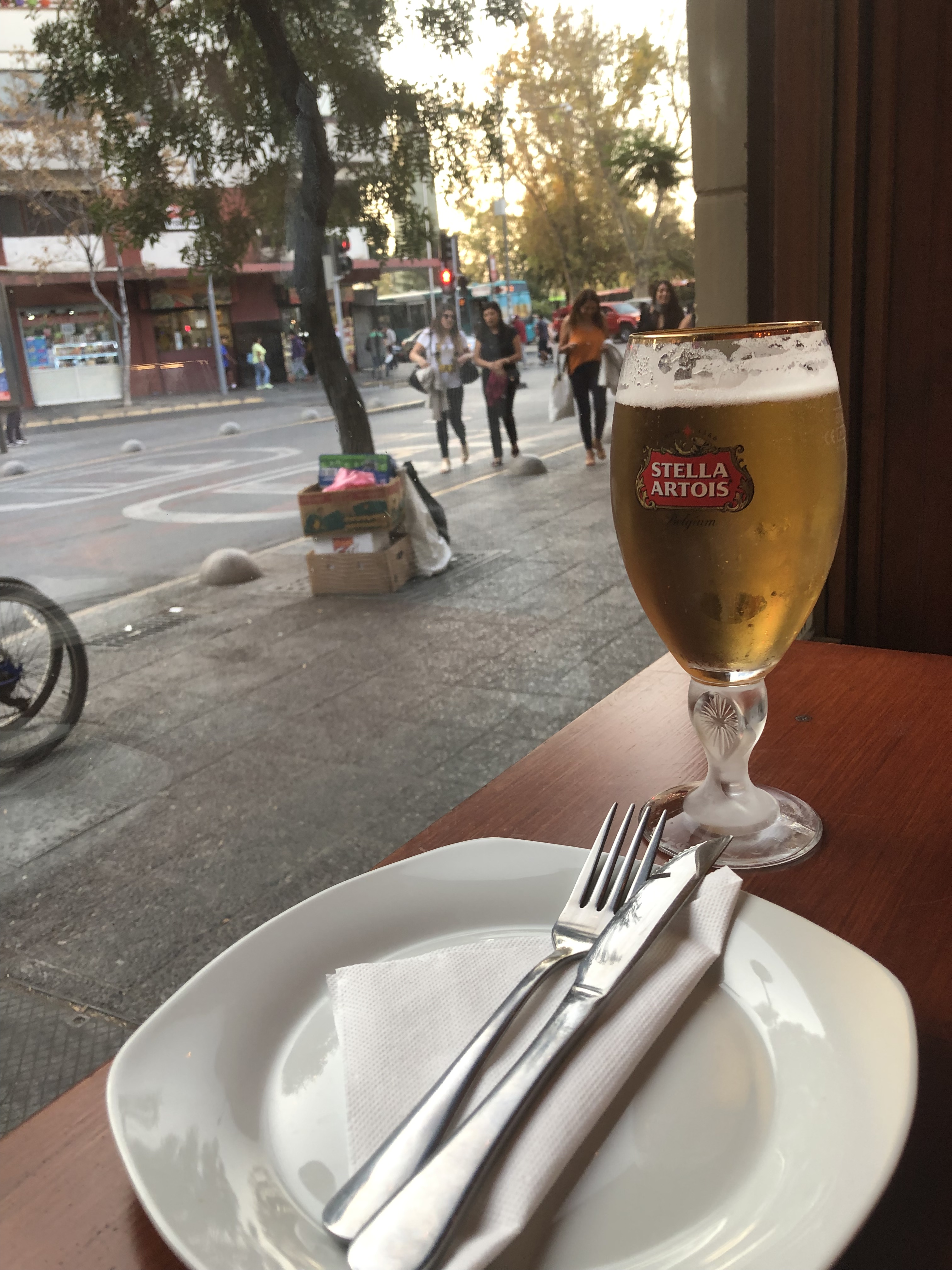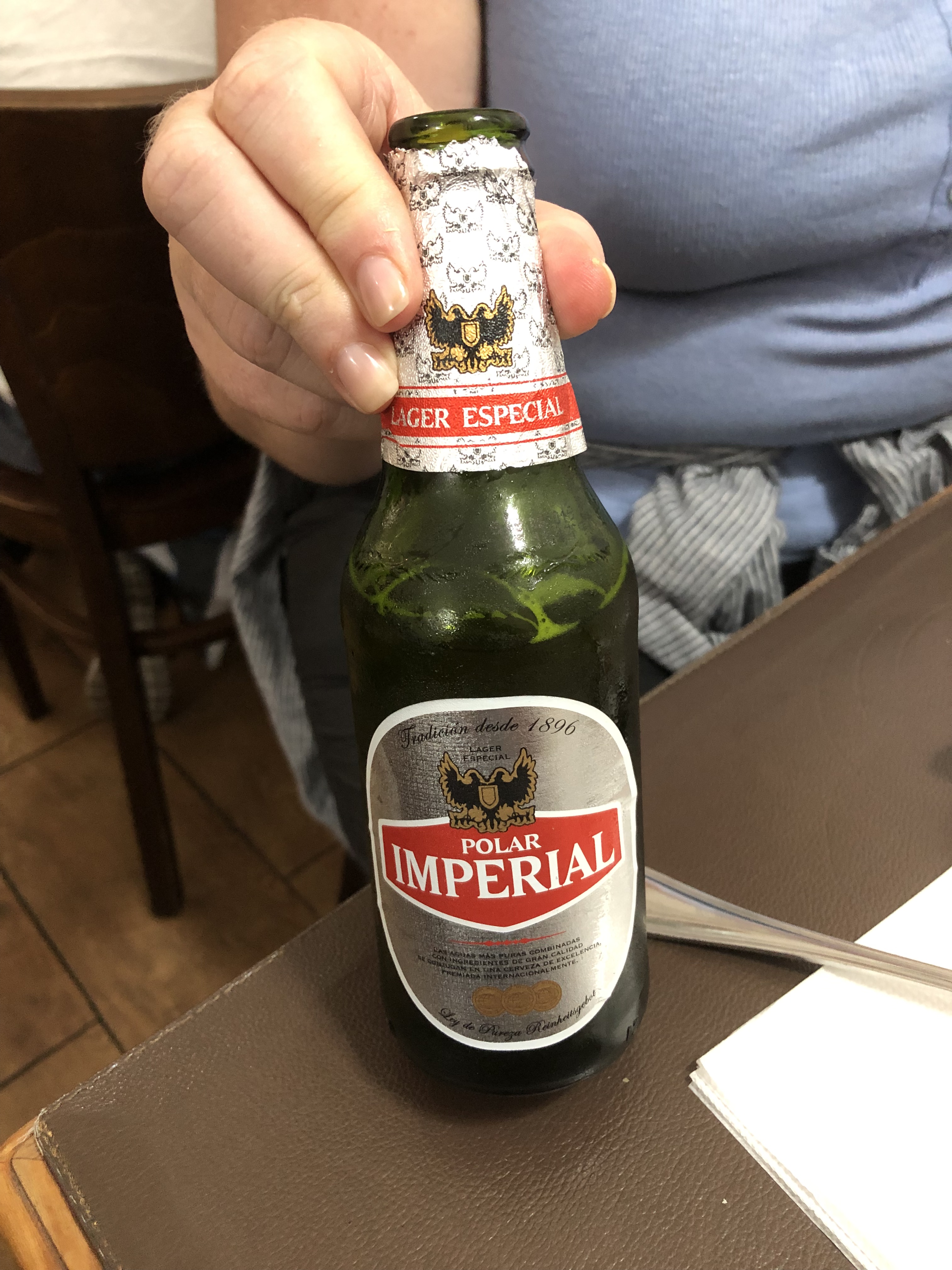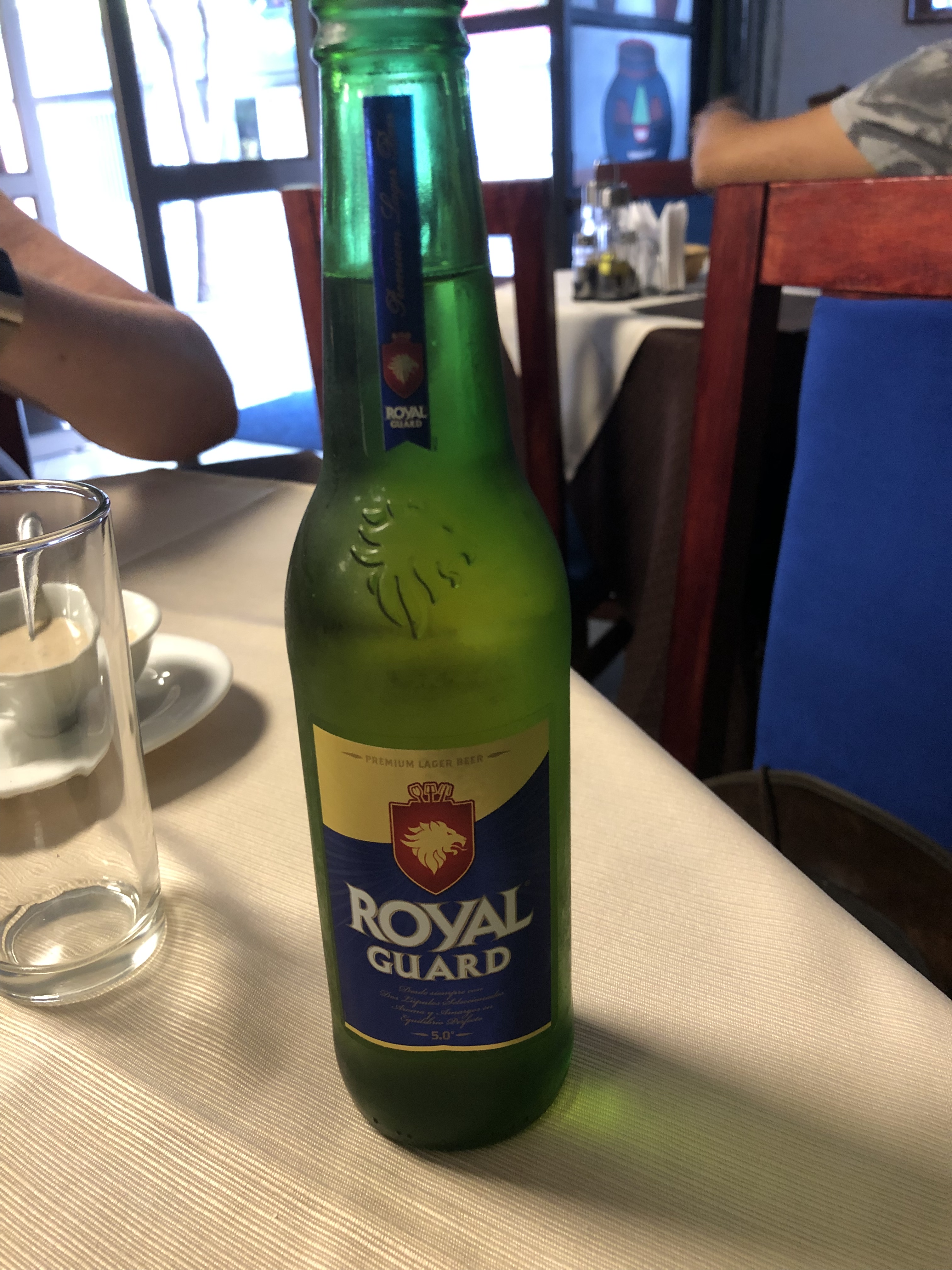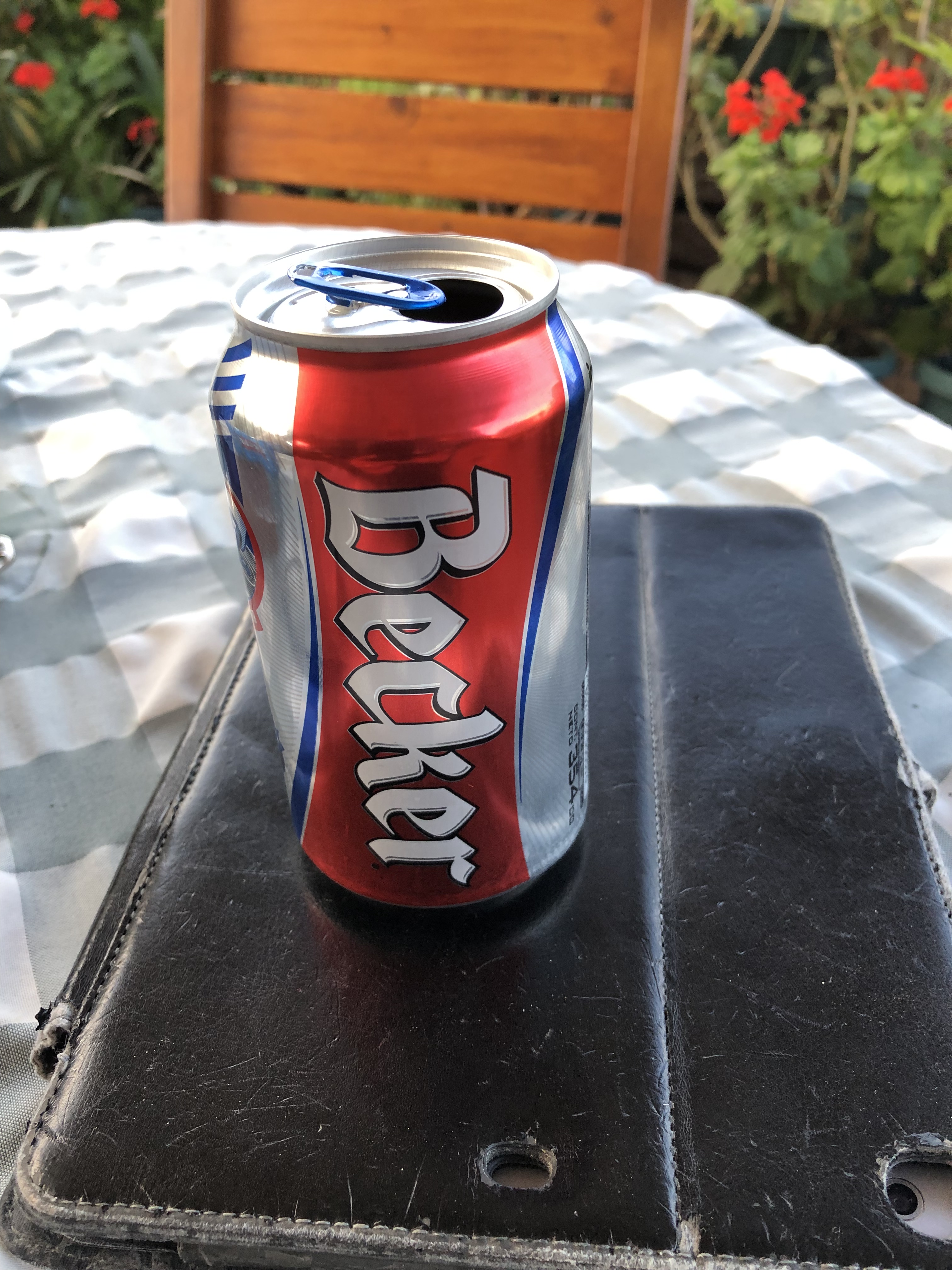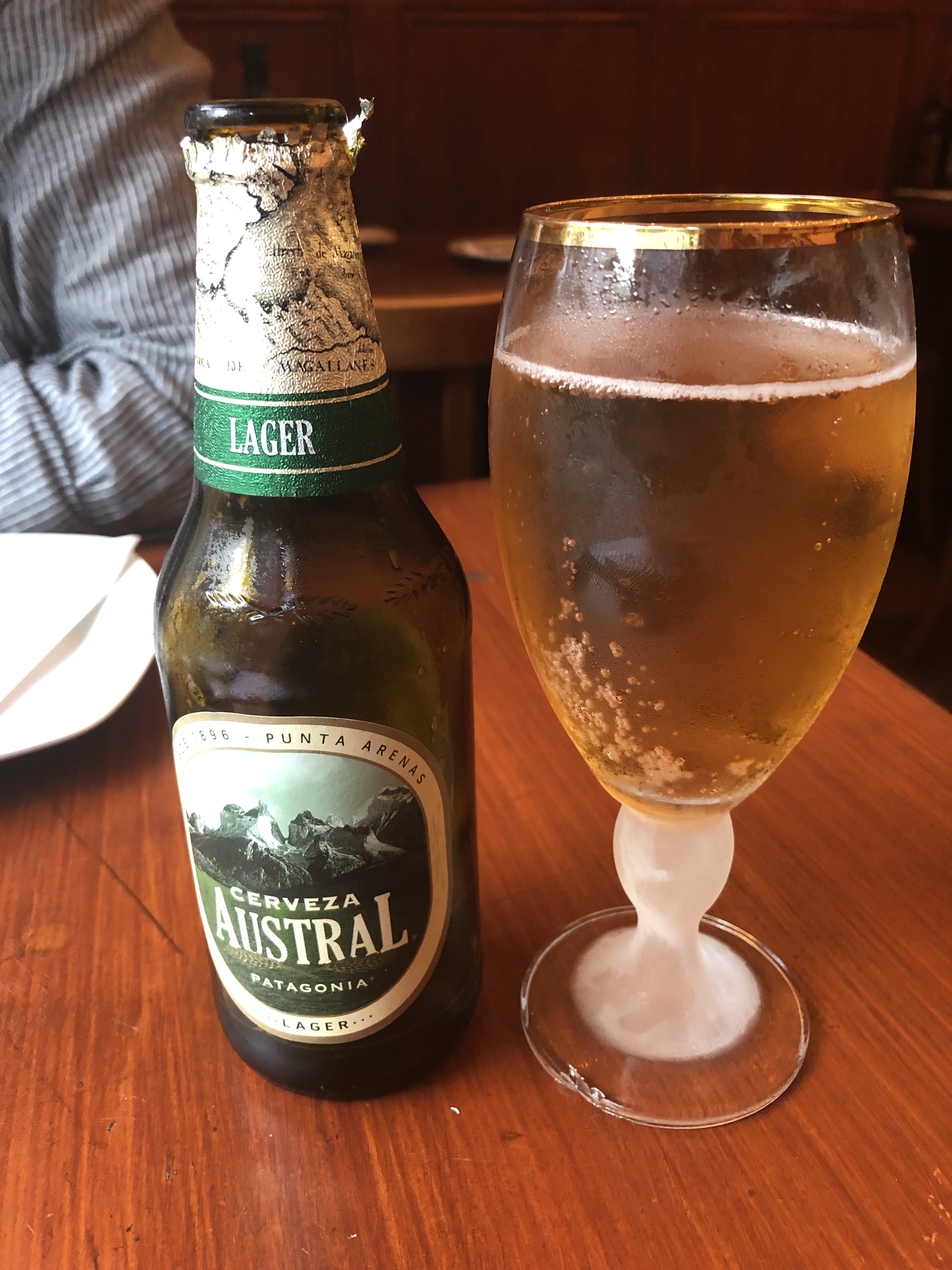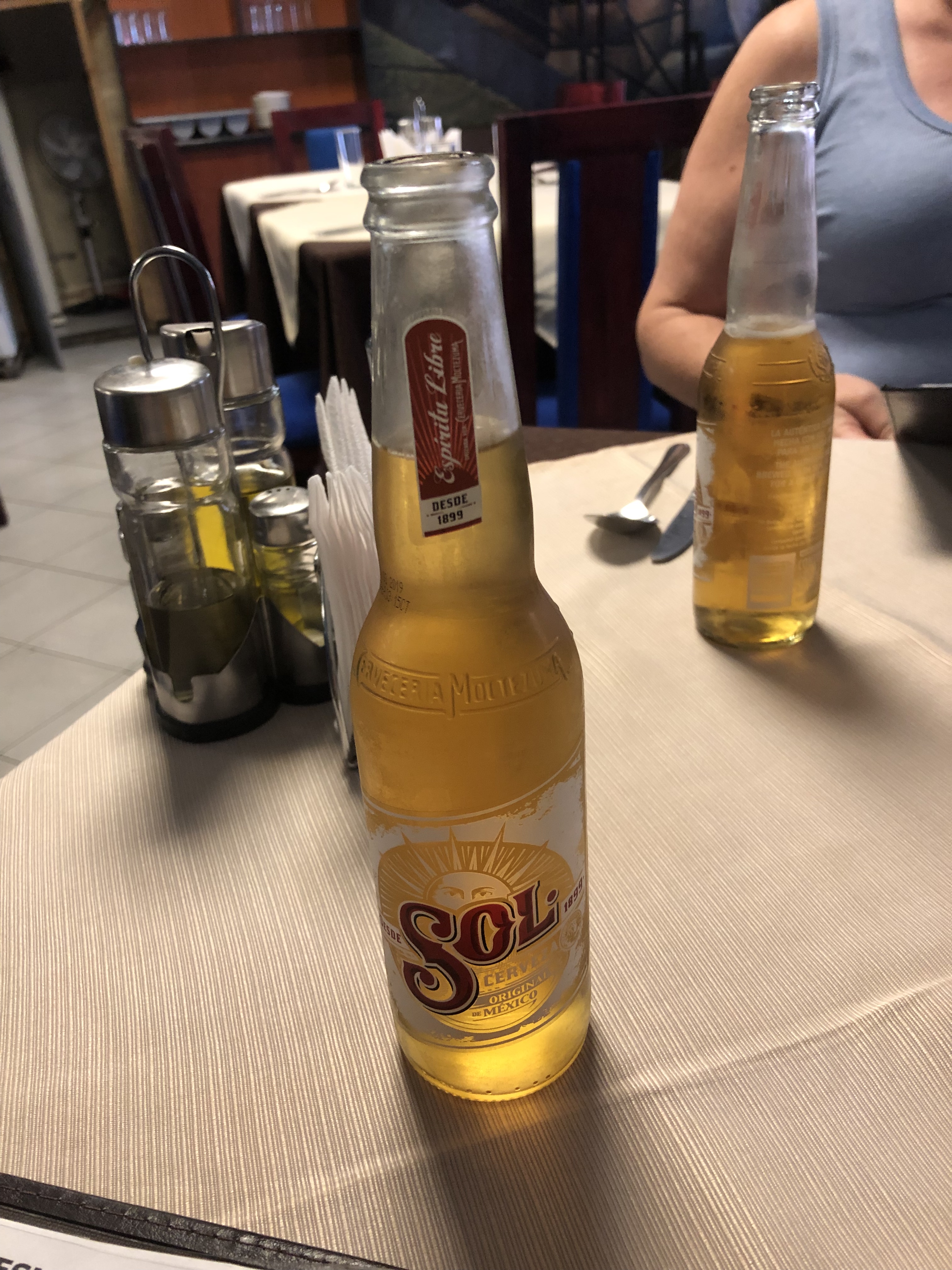Cuba
After less than a day…this place is everything that I had hoped it would be…I love it. You get an idea in your head of what a place will be like and are usually disappointed…but not here.

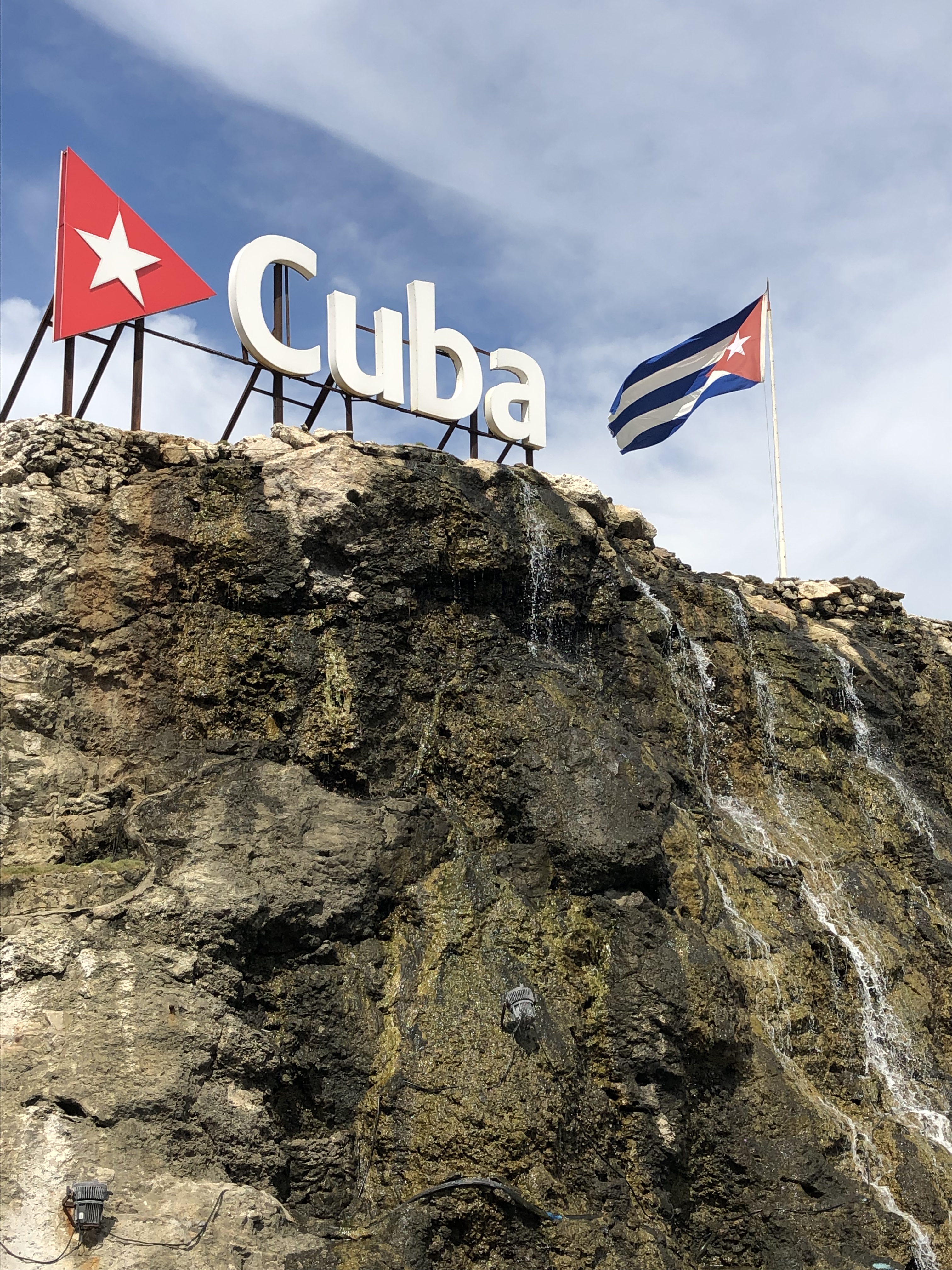
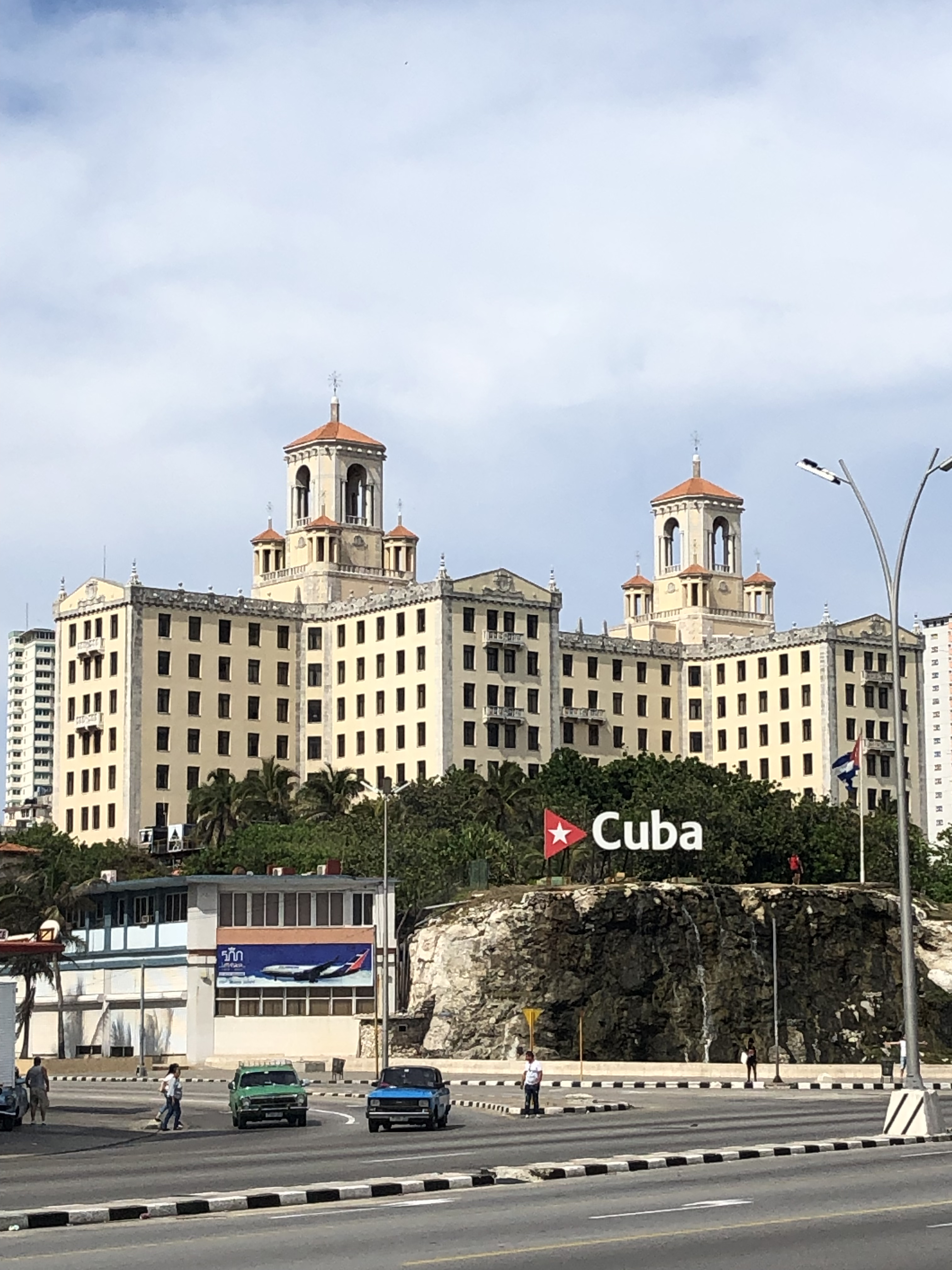
We arrived late afternoon and had an absolute nightmare at the airport trying to get our money changed over. They have unmanned money changing machines…not ATMs but rather you scan your passport place in euros and retrieve the local equivalents… and there are only 4 of them…this doesn’t work very well when you cannot get the local currency (the CUC) elsewhere and you have 3 plane loads of people trying to get cash…simultaneously.
It is probably timely to mention that Cuba has two currencies that operate in parallel. The one that tourists use is the CUC which is worth the same as a $US. But if you try and swap a $US for it, it will attract a 10% surcharge. Euros and Canadian $ are the currencies of choice and they attract no surcharge. The second currency is the CUP which is used by the locals and is the equivalent of about 4 cents. So one CUC will buy you 26.3 CUP. Obviously, this adds a degree of difficulty to getting change.
So back to the airport, we stood in line and waited…something that we are learning is also a very Cuban thing to do. We got to our accommodation to find that they were full so we would stay 2 doors down at the neighbour’s place…Cuba does not do much in the way of traditional hotels or hostels, it is more like a home stay, where you rent a room in someone’s home…it was all good and we finally met up with our intended host the next morning.


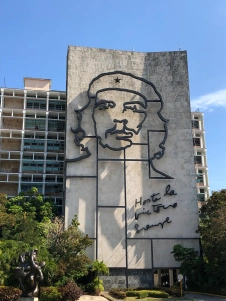
Our accommodation was in the middle of everything but nowhere near anything…we were relatively equidistant between Old Havana, New Havana and Chinatown…but still quite a walk from most things. On night one, after the airport, money and housing debacle, we headed out for a walk and a meal. We got to the water and wandered along the esplanade (Malecon) seemingly not having passed by any restaurants. Either this was wrong, we were unlucky or we just had yet to pick up on the rhythms of the place. Having eventually found a place for dinner and eating well (if expensively by Cuban standards) we called it a night.
For $5 a head the little home stays offer breakfast, and ours was no different. So our first full day in town started with fresh fruit, fruit juice, coffee, fresh rolls, egg, ham, cheese and a great chat with Charlie another houseguest (Canadian). We then got about the rest of our day. This started with a walk towards old town and the checking out of all of the old buildings.
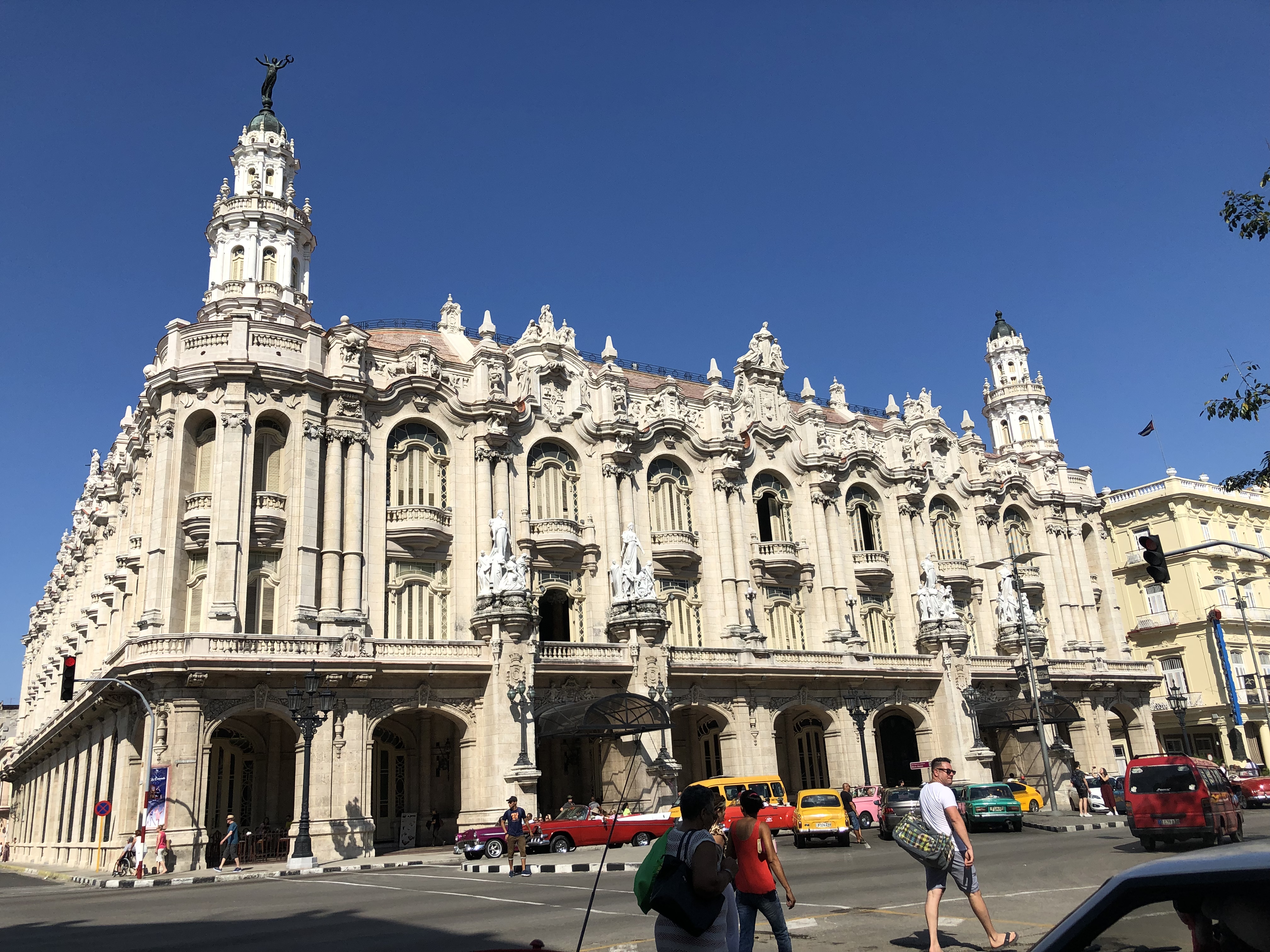

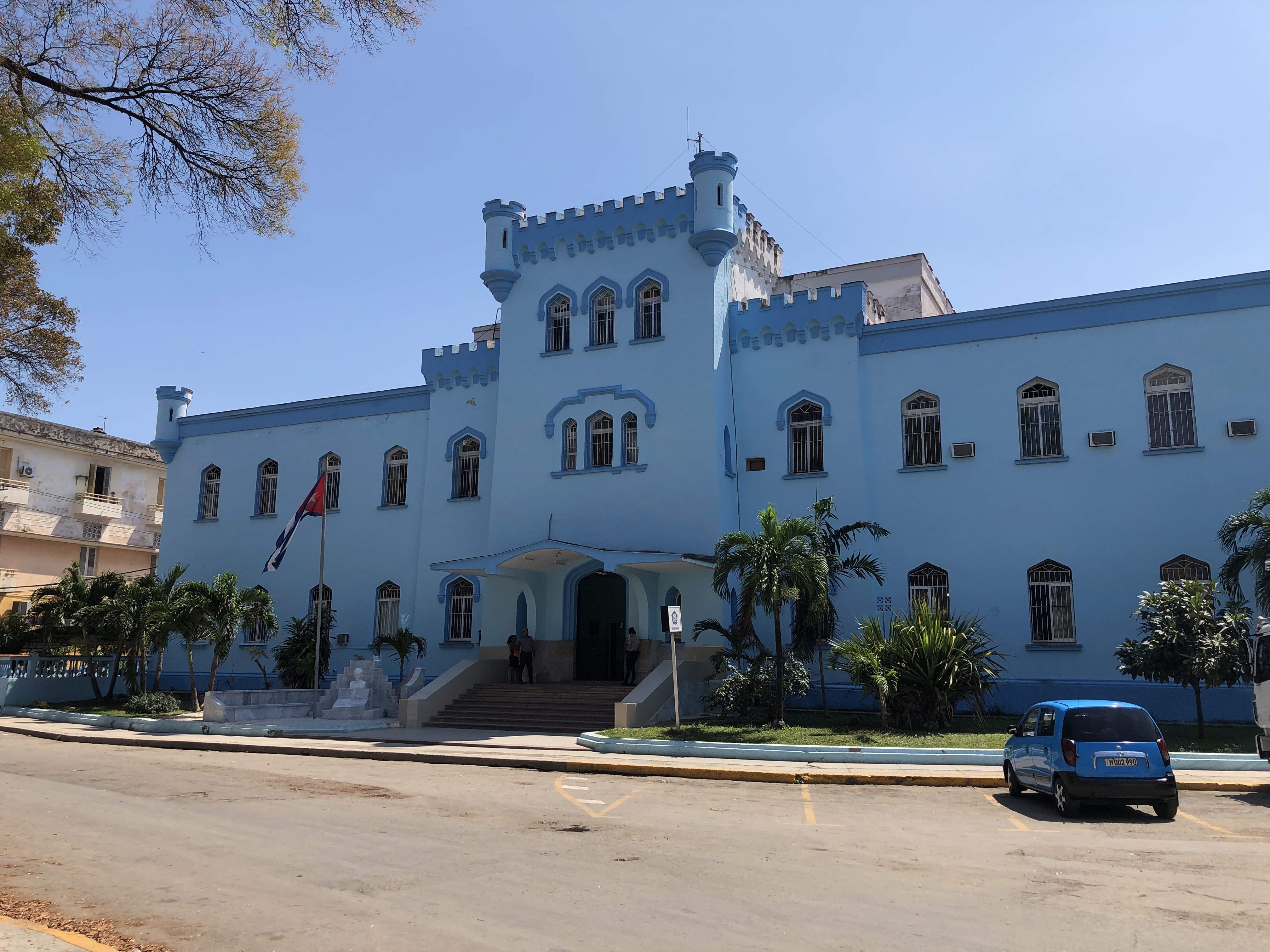
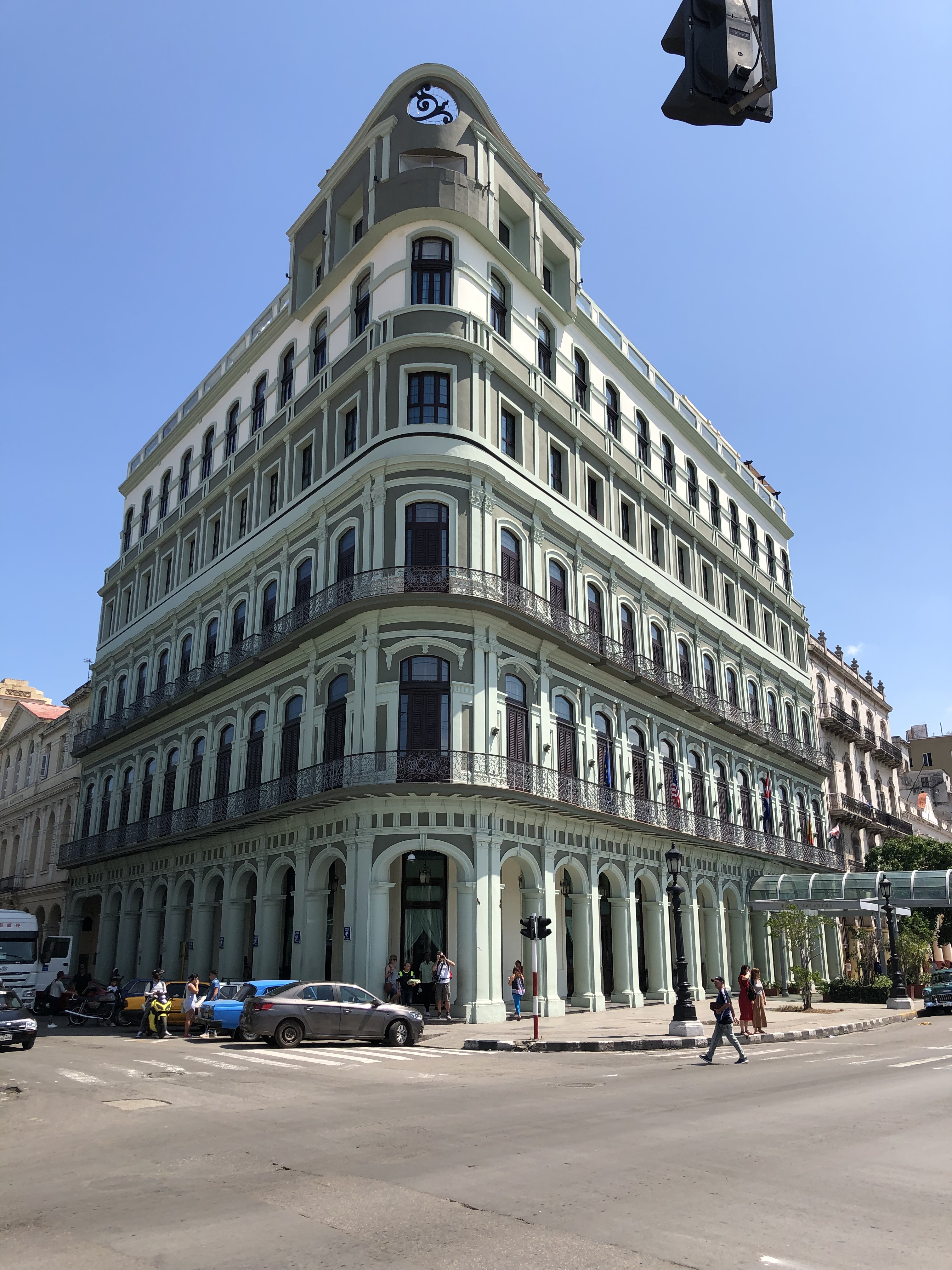

And here the real Cuba kicked in in true style. After bartering a bit (from 80 down to 40) we hopped into our huge 1950’s yank tank for a one hour tour of Havana. While this is incredibly touristy and stereotypical, it was exactly the experience that I had wanted. We sat in the back of our huge red and white convertible (Jill wanted pink but the guy with the pink one wouldn’t barter with me), being chauffeured by a dude wearing a Panama hat, while Cuban music blared through the stereo. I managed to get the dude to let me stage a photo with me in the drivers seat (he even put his Panama hat on me briefly).

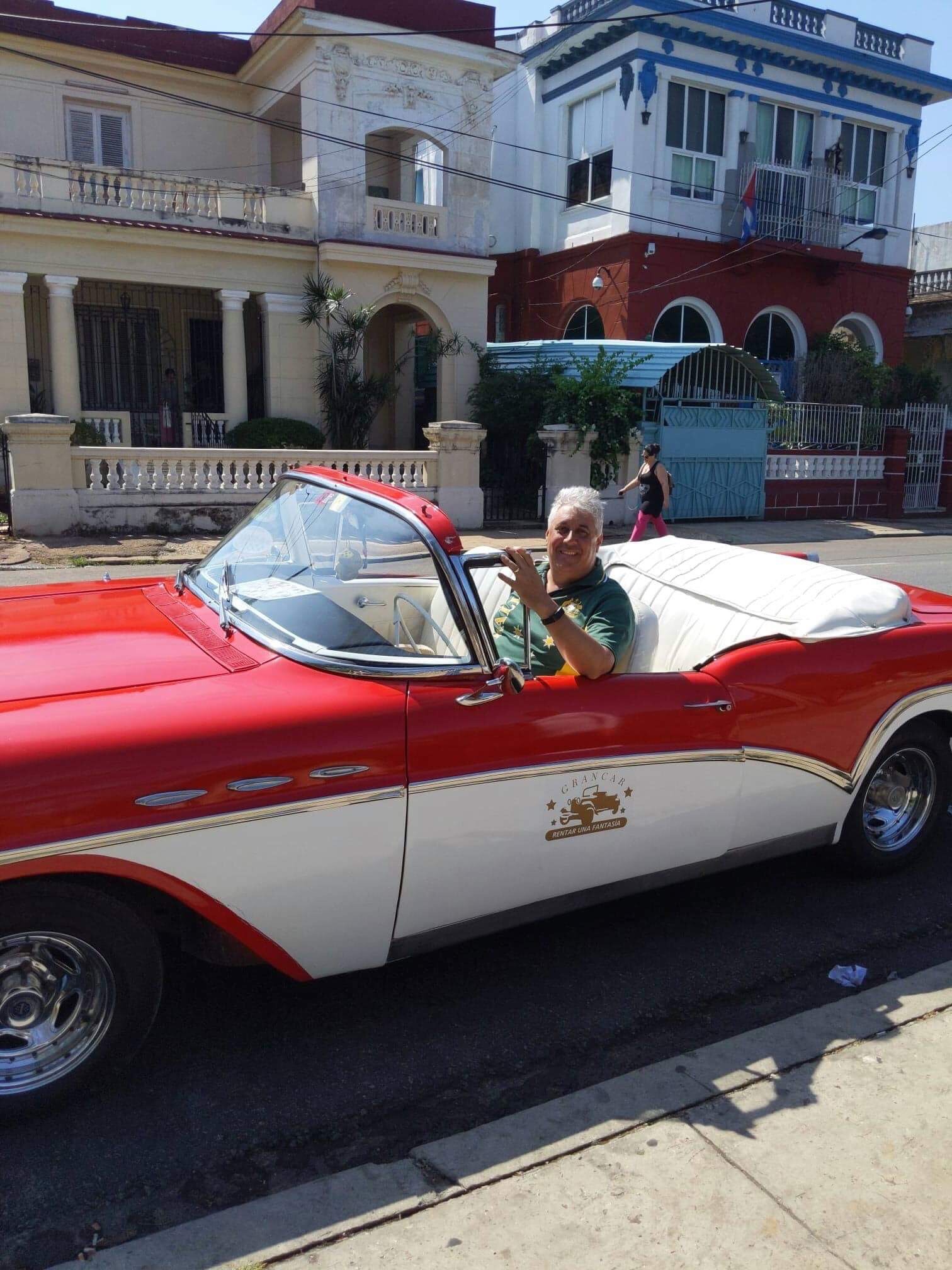
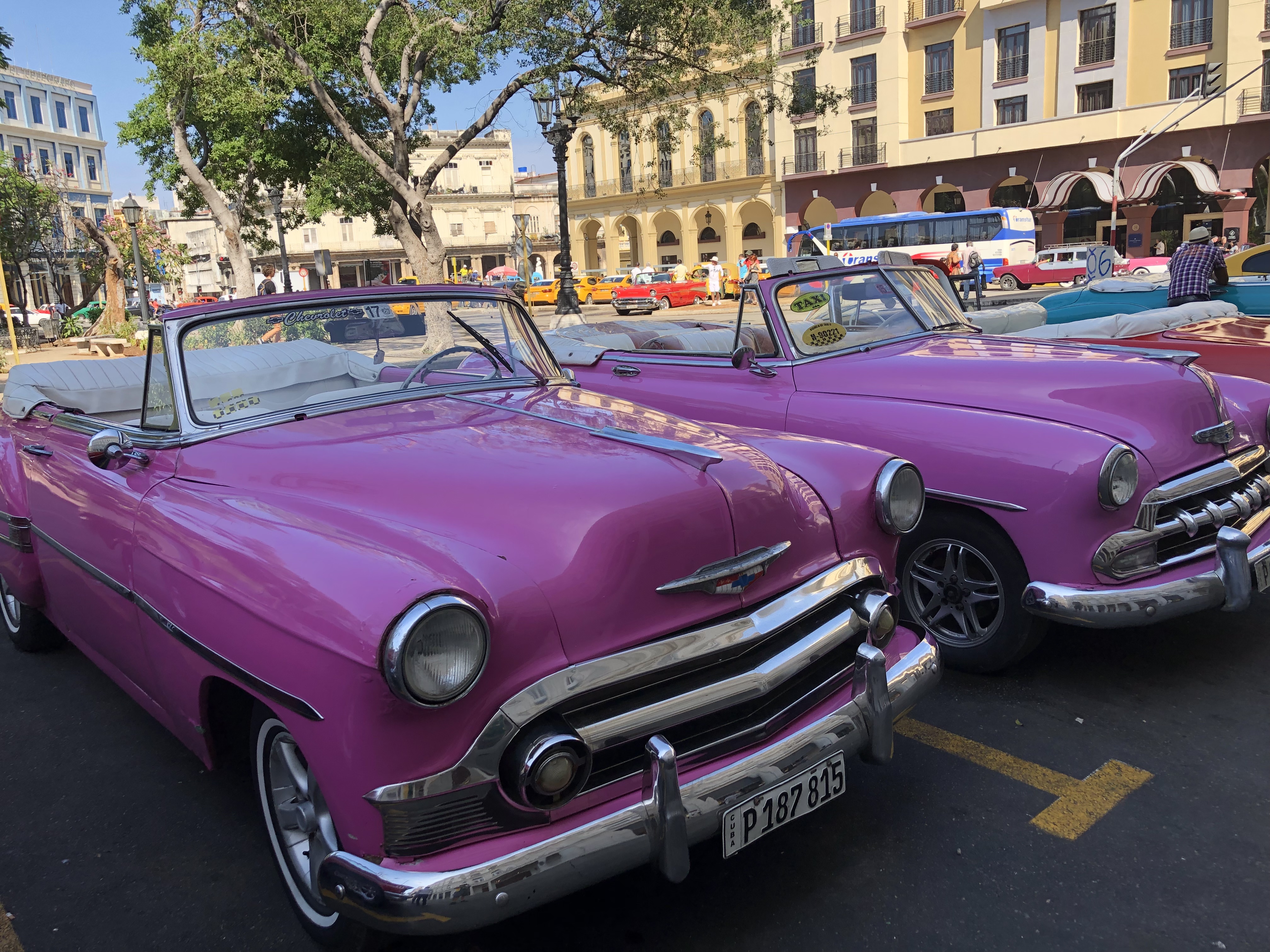
So it is probably time to talk about cars in Cuba. For the most part they are all pieces of shit. The most common vehicle that you will see is the Russian made Lada. They are ugly, loud, smoky, smelly and quite frankly it is mid blowing that they are still even running. The next is the classic yank tanks…the majority of these are clapped out, poorly maintained, bashed up, beaten and in sad need of either TLC or scrapping. Then there is the convertible tourist fleet that are shiny and pretty for us tourist types. And finally there is a combination of little taxi (type) options…these range from pedicabs, horse drawn carts, old motorbikes (with or without sidecars) and the freaky bubble looking tuk tuks.
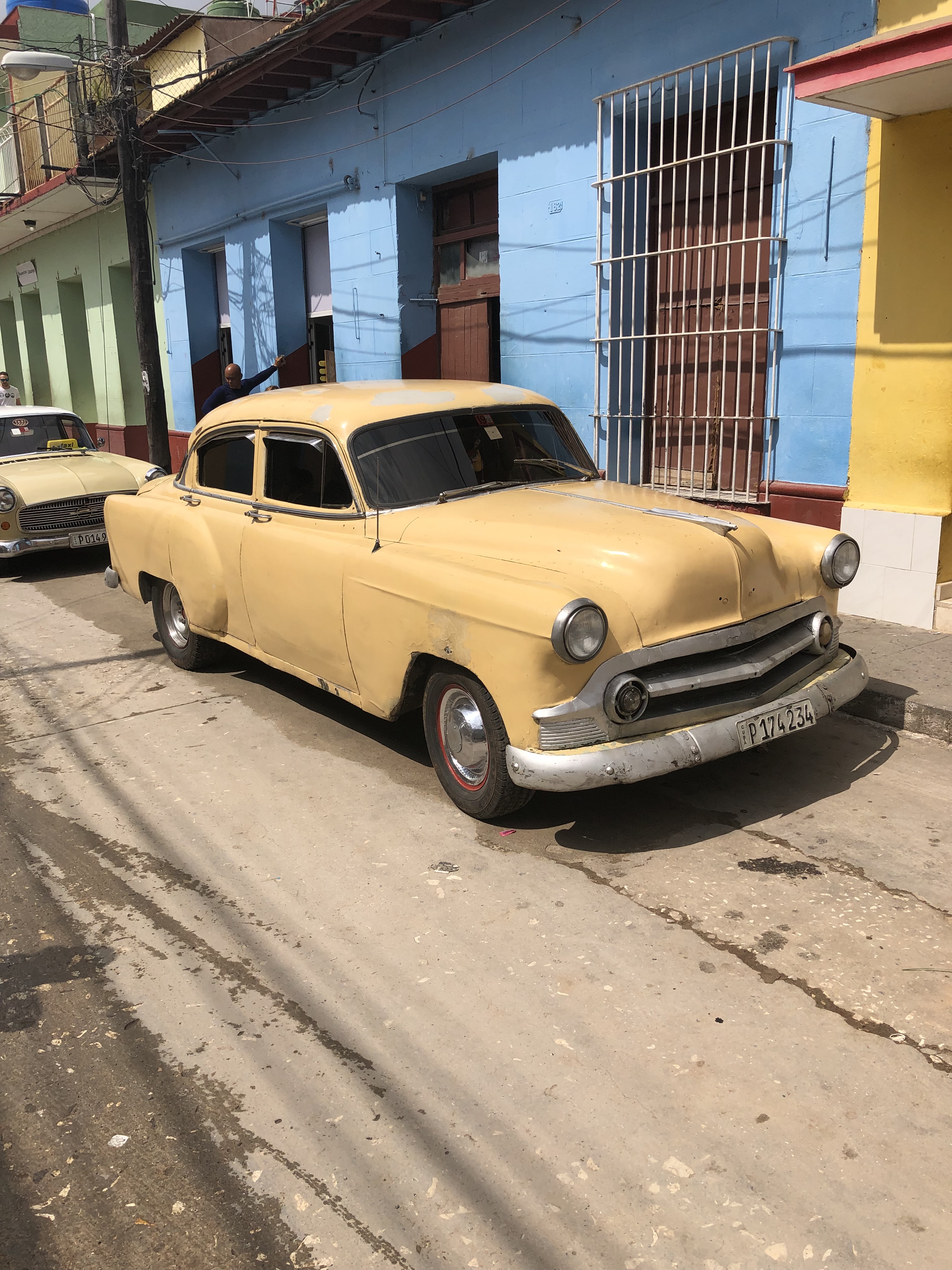


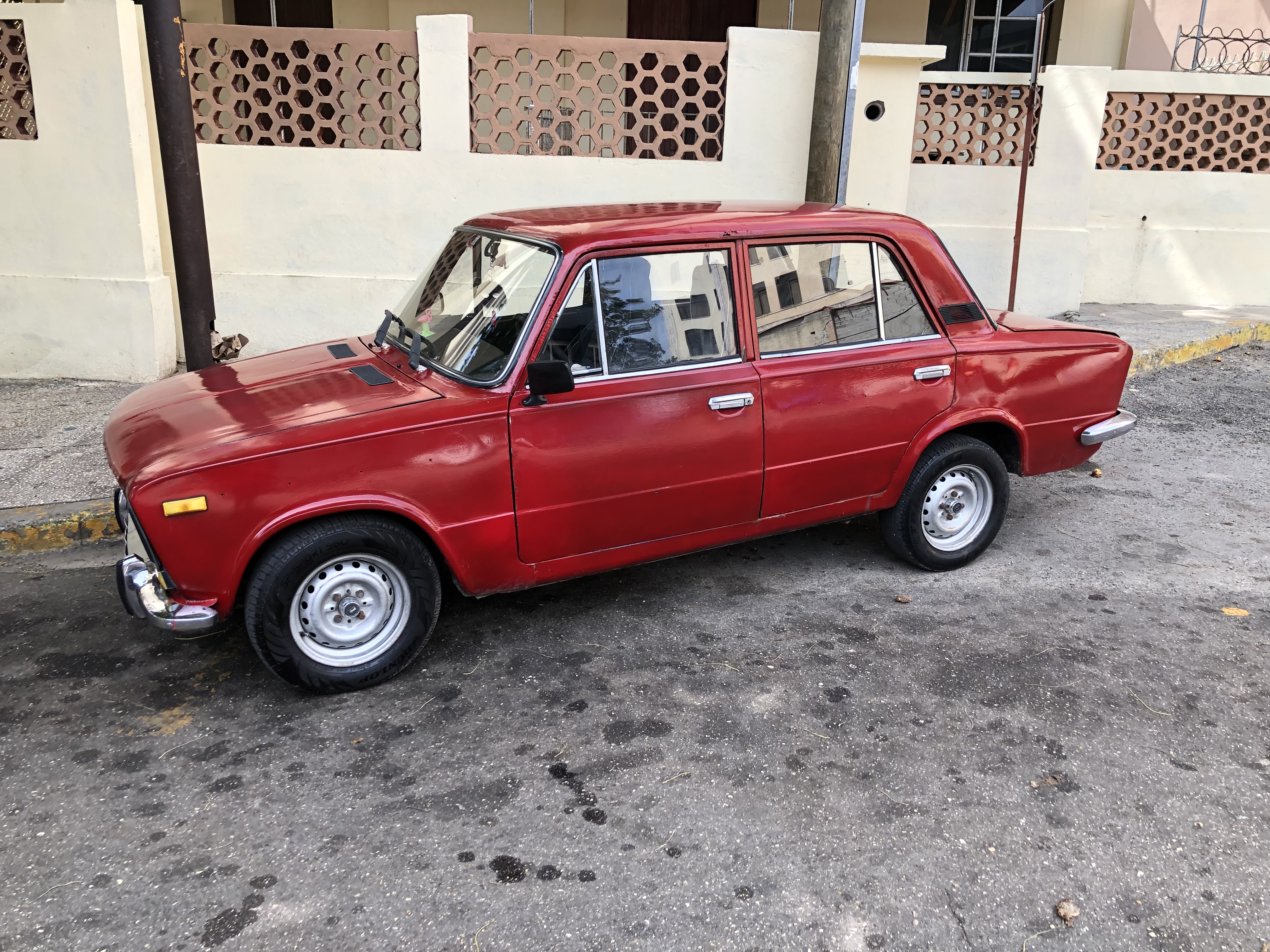
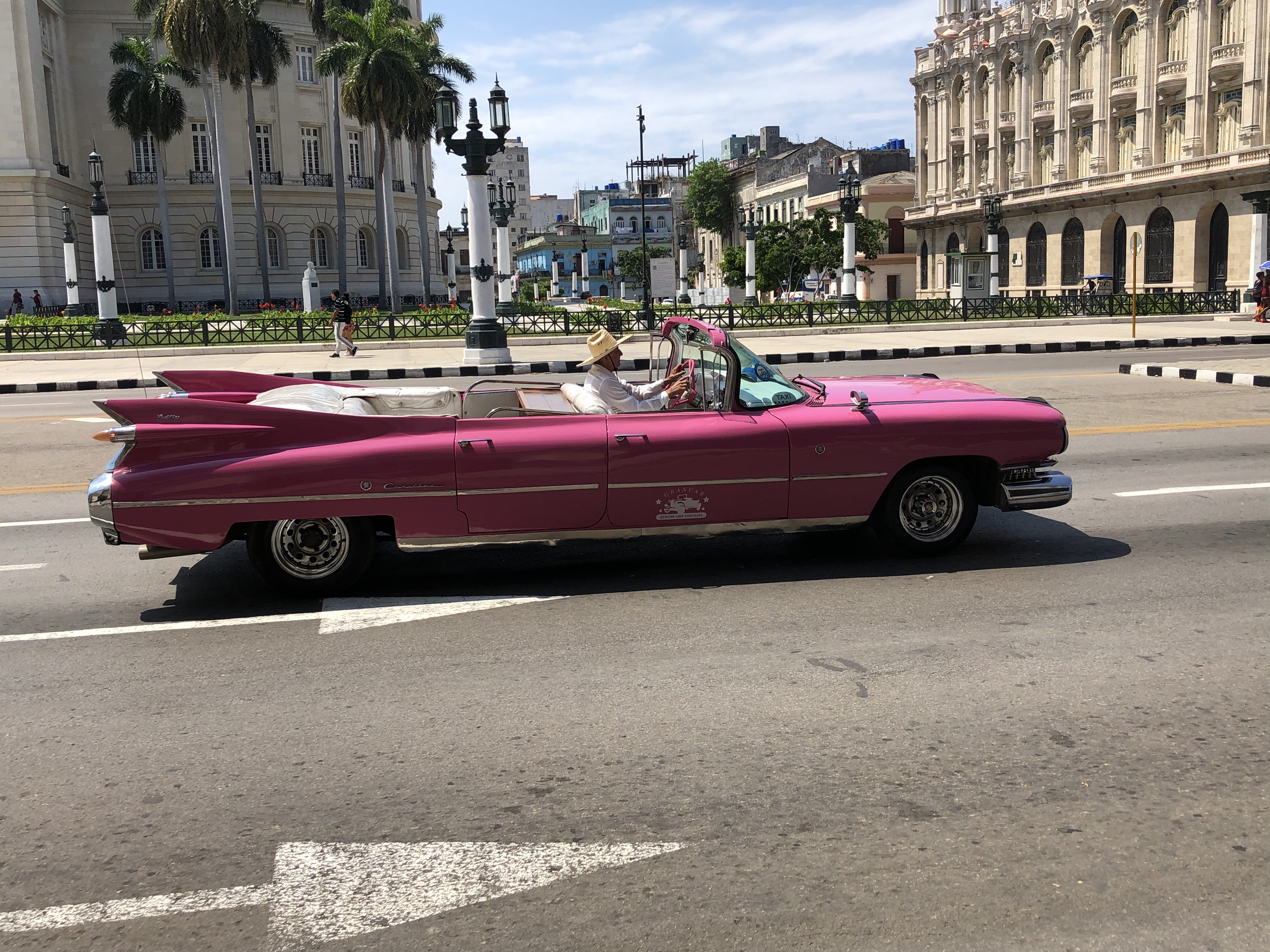


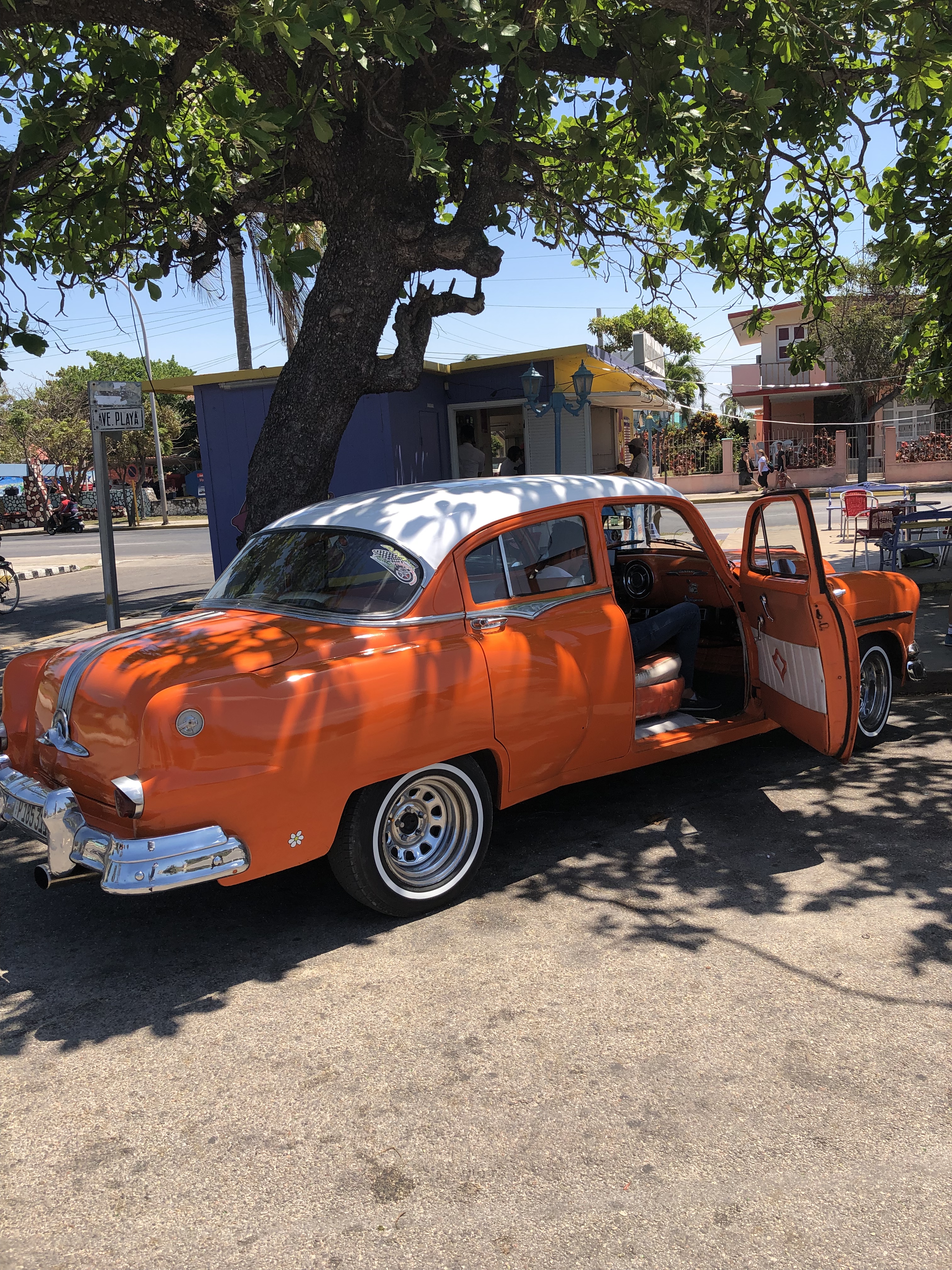

So we cruised the streets (either in our car or just walking about) while we took in the sights, sounds and smells of Cuba. For the most part it was enchanting. The people of Cuba seemingly want for nothing, but at the same time they have very little. Education and healthcare is free. Food ration books ensure that everyone has enough of a broad range of food groups, but very few extras or luxuries. The system works but the wants of consumerism are pervasive.
Some of the buildings around Havana are stunning. But for every beautiful building, there is about 20 in a state of disrepair. Added to this are the hidden gems, a virtual oasis enclosed behind a nondescript door on a dodgy looking street. I have never been in any city in the world where I have felt so safe or secure. Crime is virtually non existent and everyone is smiling, happy and willing to greet you with a grin and an “hola”.
On our last night in Havana we headed down to plaza Vieja where we stopped in to ‘La Vitrola’ and we had some small bar snacks, beverages and live Cuban music. I have entirely fallen in love with the jamon croquettes, while Jill cannot seem to be able to say no to a $3.50 mojito complete with a sugar cane swizzle stick. Add to this some bruschetta, cheese balls and fried chorizo and ice cold cerveza (beer) and life is good.

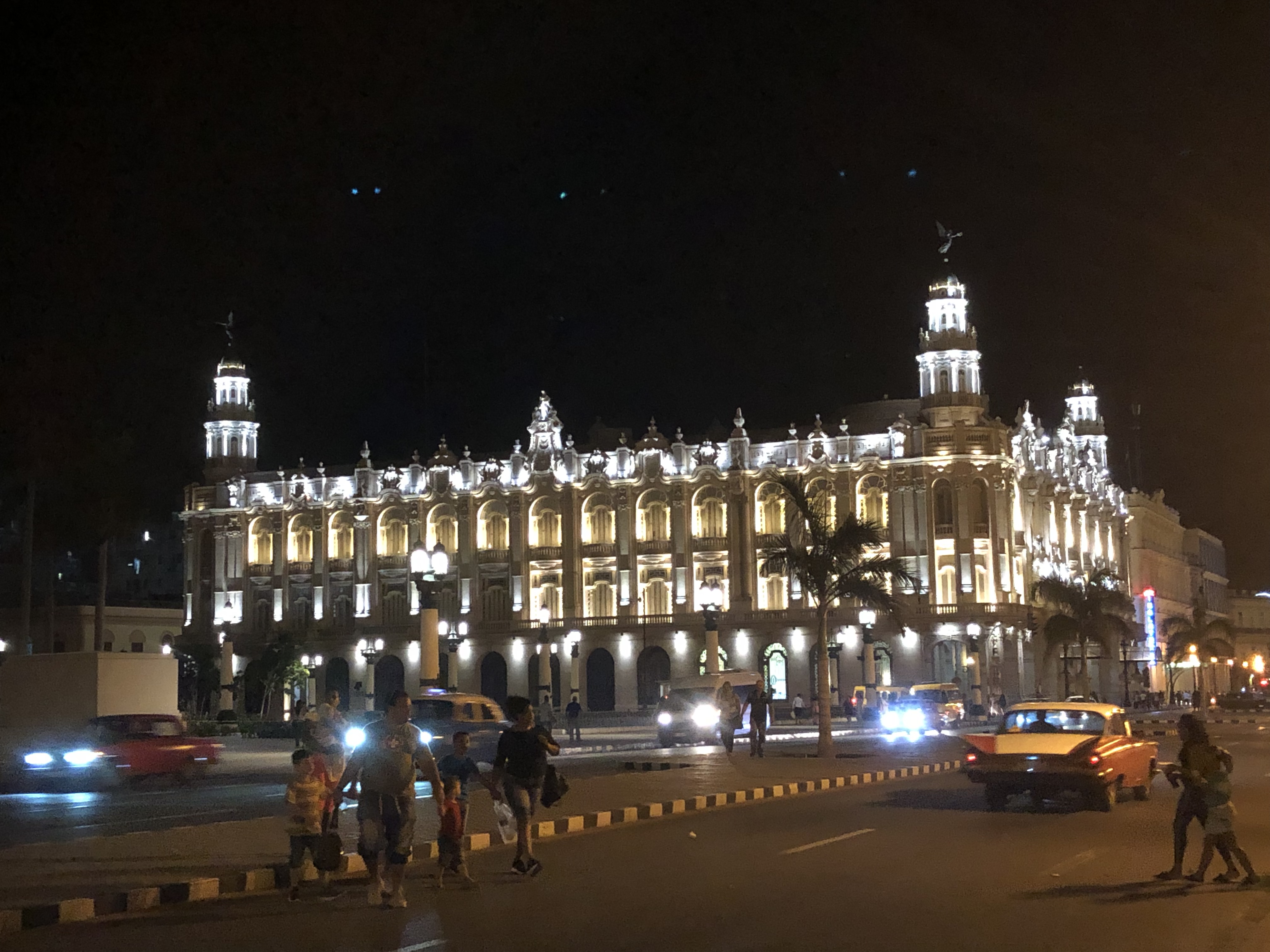

Oh and guess what… Cuba has a $3 bill.
Varadero
Varadero is little more than a resort town, so very little in the way of tourist sights. No cool looking buildings, just rows of modern resorts, bars, trinket shops and restaurants. What the resorts do offer are all inclusive packages and many of them offer child free experiences. So for people like us who do not enjoy noisy rugrats messing up your holiday bliss, this could have been for you. But in reality it just a town full of drunk eurotrash.
An interesting note that we learned was that Al Capone had a mansion here right on the ocean front. Of course it has now been turned into a guest house and restaurant.

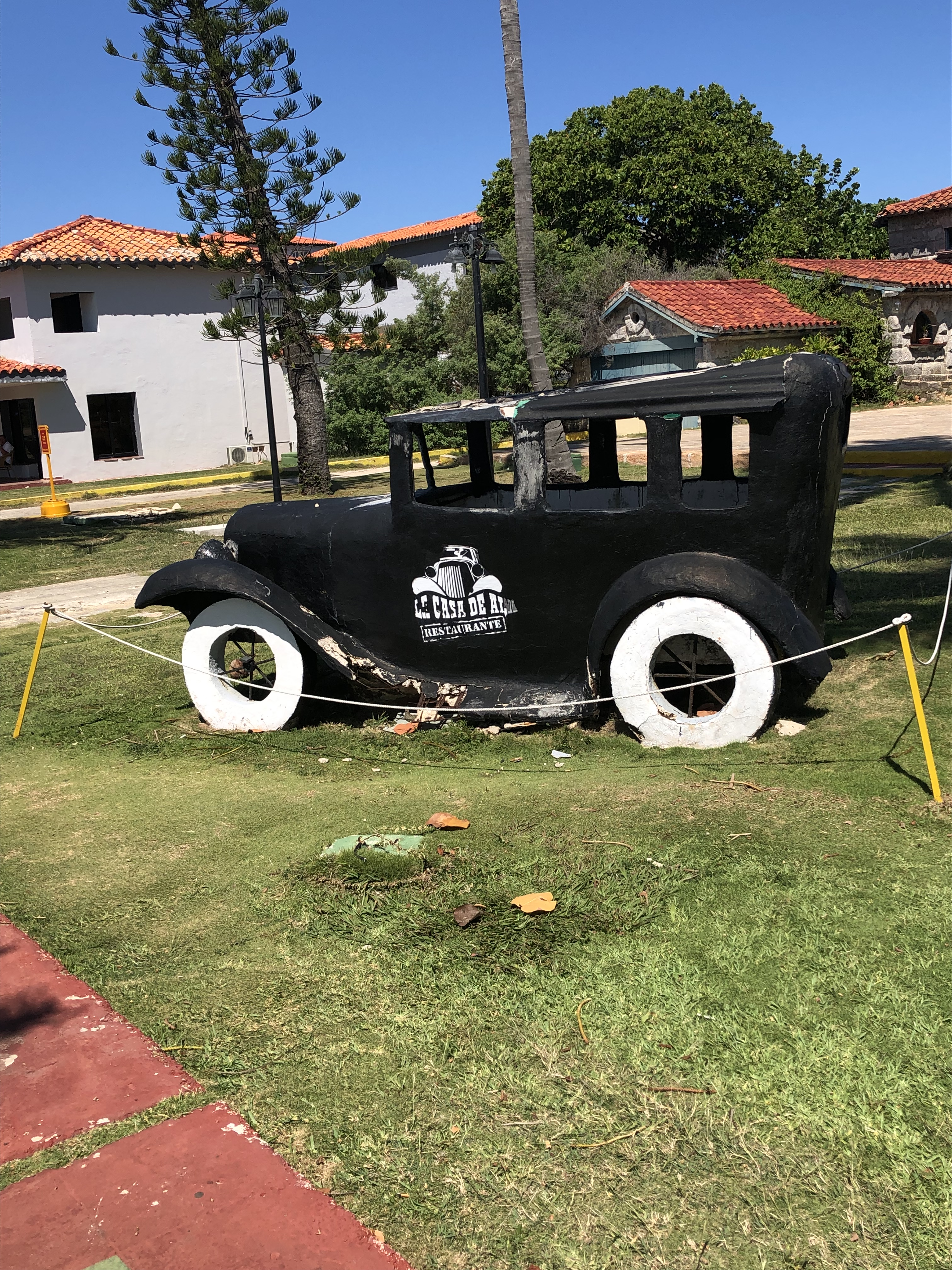
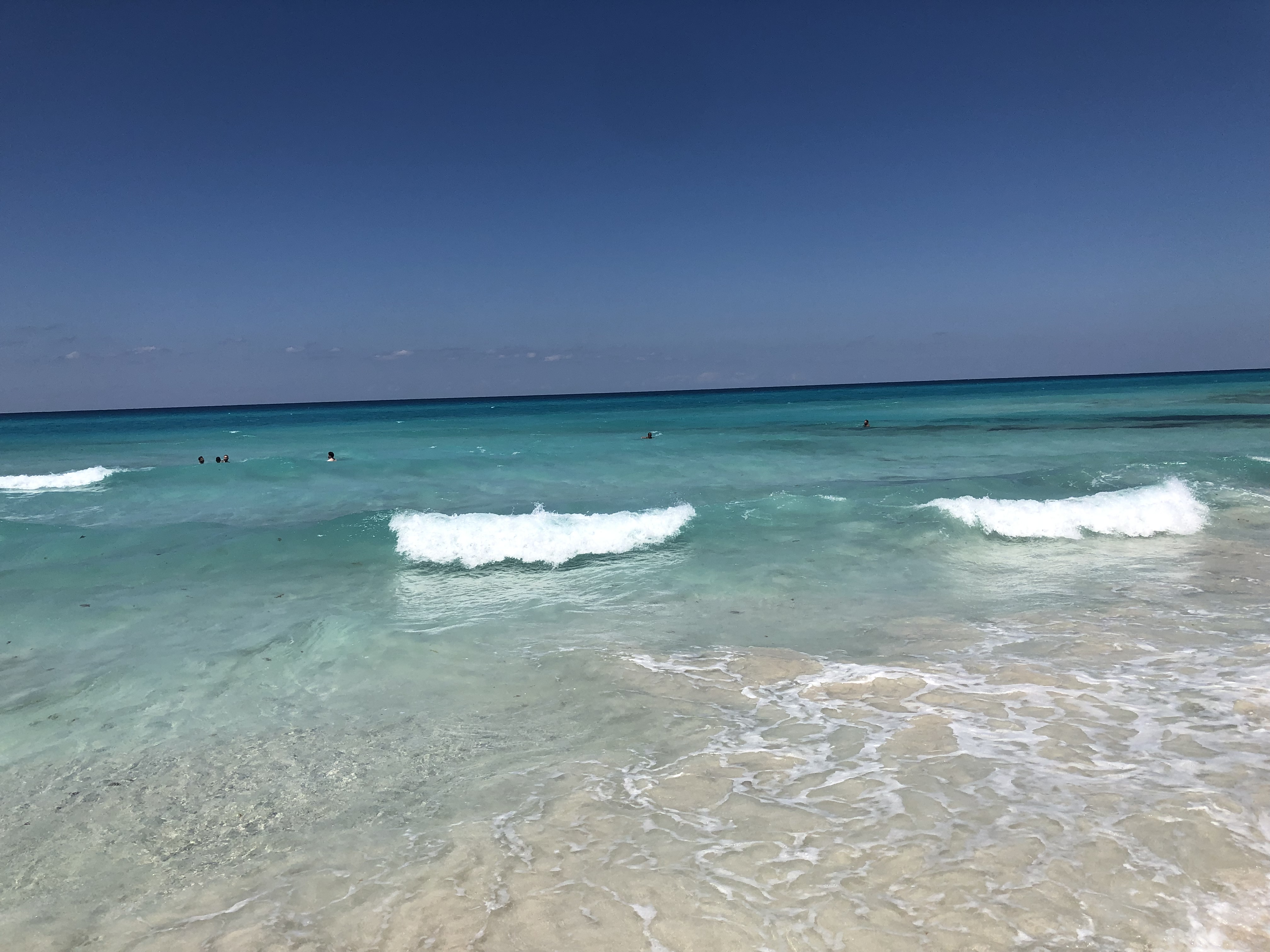
The fact that most of the resorts offer all inclusive packages means that all of their food and drink is included. As such, there is very little need for them to leave. Which means that competition at the local restaurants is fierce. This we thought would be great news for us as we were not doing the package thing. But it was anything but, the restaurants tended to be more specialist or boutique. The prices were through the roof (by Cuba standards), the food was below par and according to Jill the mojitos were weak.
Don’t get me wrong, the beach was nice (if a little too much seaweed by Australian standards). You could get an ok meal cheaply. And Varadero could be considered a good holiday by some… just not us.
But as with all of Cuba, the classic cars were everywhere. We got a 1957 Plymouth as our standard cab from the bus station. We wandered the street to see gangs of drunken package tourists, clinging to their refillable booze jugs or kegs, being generally loud and obnoxious. And I am sunburnt, here I am an Aussie surrounded by Europeans and I am the one glowing red. I feel like I should hand back my Australian card…poor form.
In short Varadero was hellish, but it was insightful as an example of everything that we would never want to do on a holiday.
Trinidad
After a short 2 hr, chicken free, bus ride we arrived at the hilly town of Trinidad. Cobblestone streets meant that I had to use my bag as an actual backpack for the 4th time since owning it. Usually I can just use the wheelie bag option, but cobblestones make that a no go. So after trying to remember what happens when you unzip the straps, we did the 850 meter walk up and down hills lugging our packs on our backs. We were staying at yet another guest house (casa particular) and despite the $20 a night price tag, it was by far the best one we stayed in the whole time in Cuba.
Trinidad is another of those see it in 2 hrs kind of towns. So after a cold shower, did I mention that it is hot and humid in the tropics, we did the schlep. Once again we hit all of the sights early: the museum (x2), cathedral, church, Plaza Santa Ana. And settled in to some Cuban music and drinks on the steps of plaza Mayor.
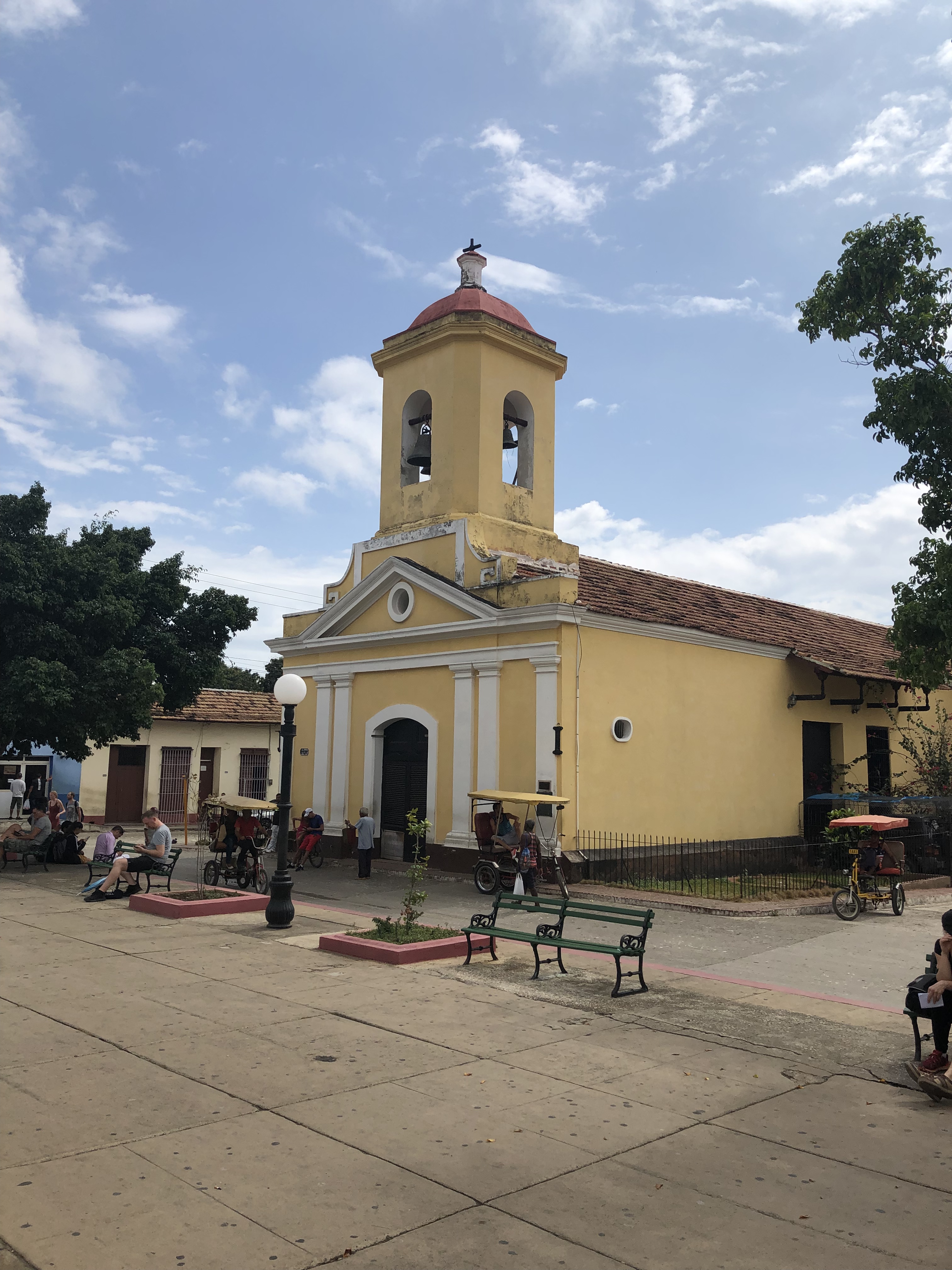
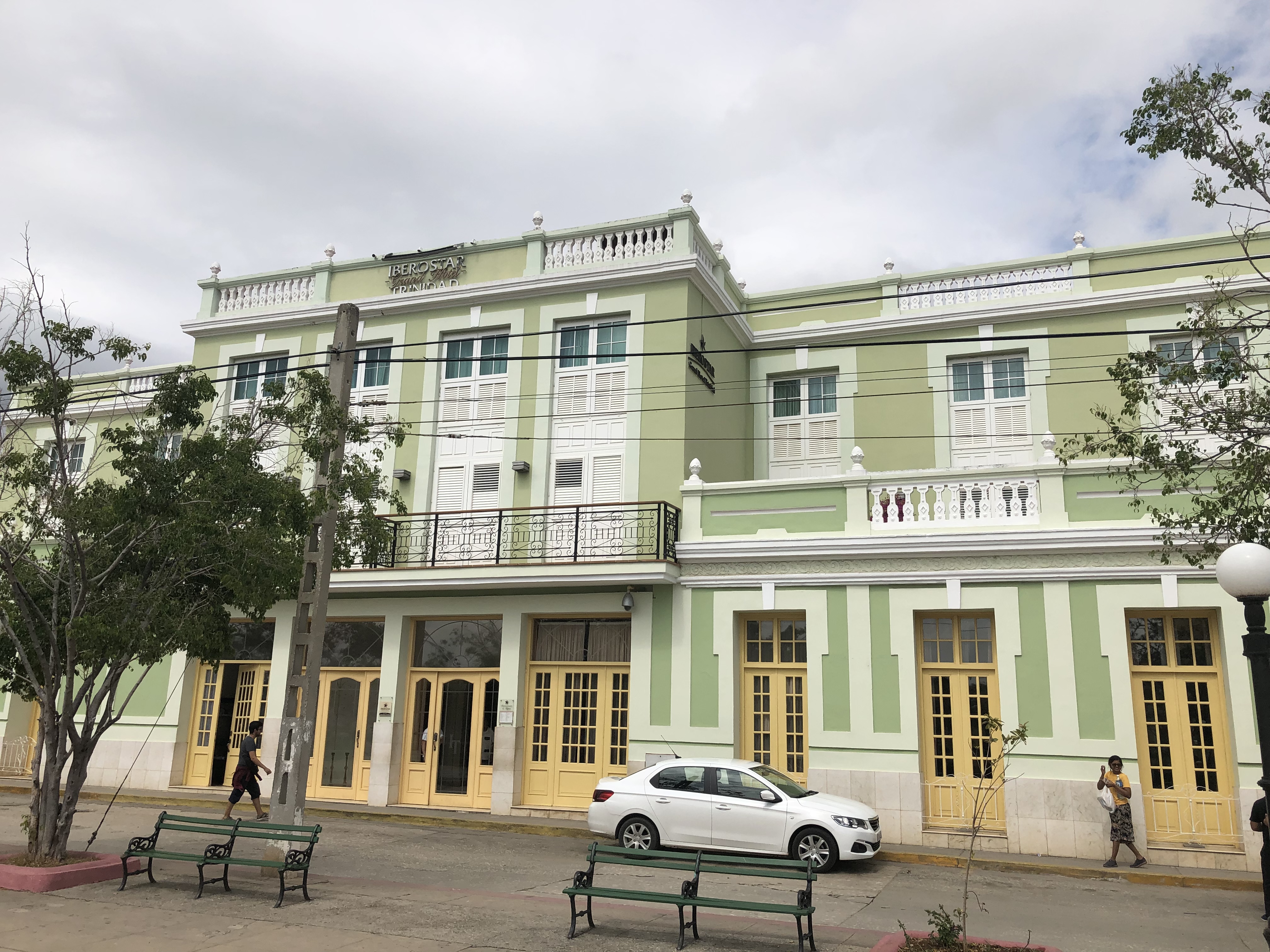

That is until a tropical downpour started. And it poured, for about an hour and a half it teemed. So we had cervezas and mojitos with a French couple until it finished.
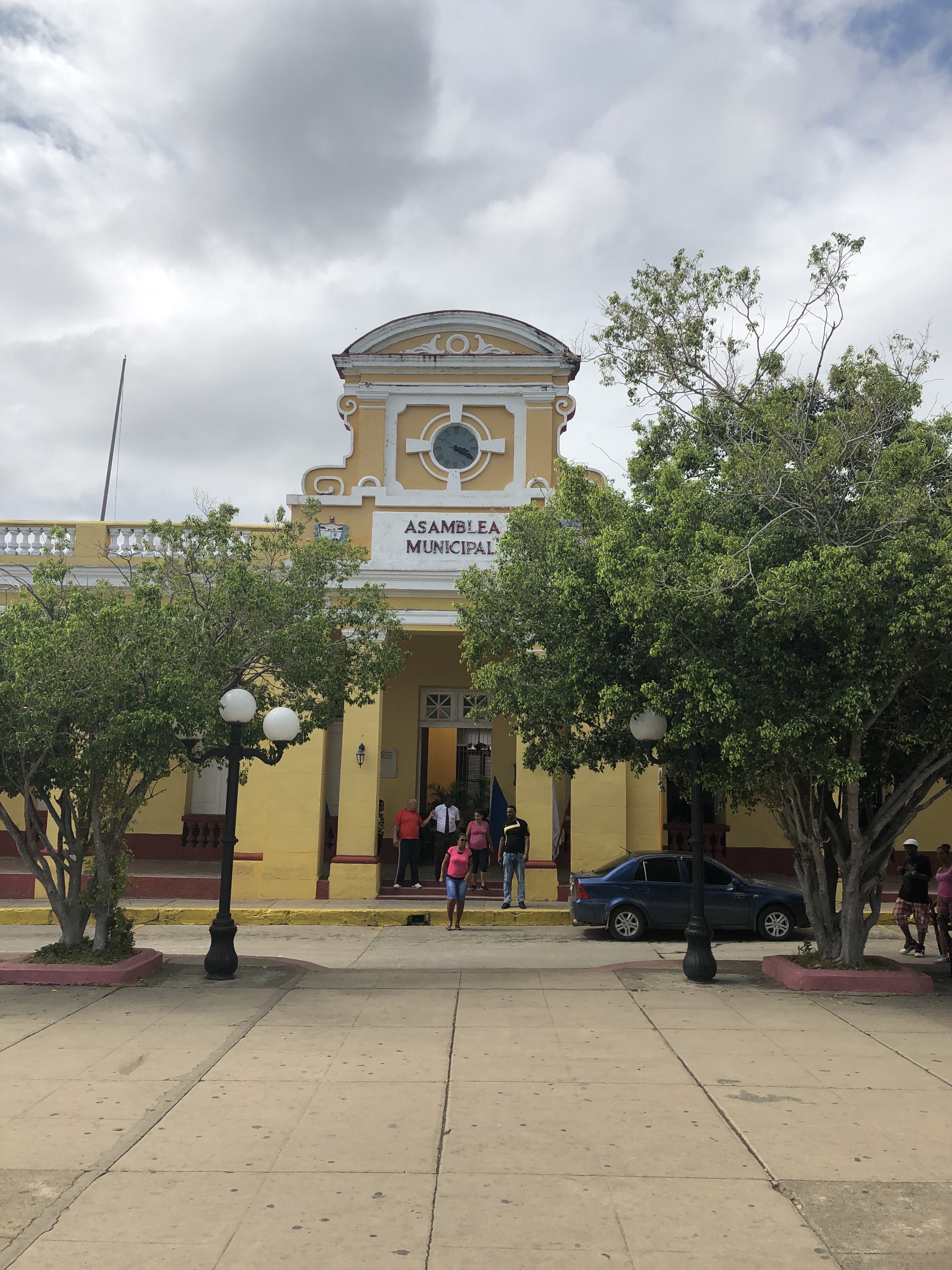
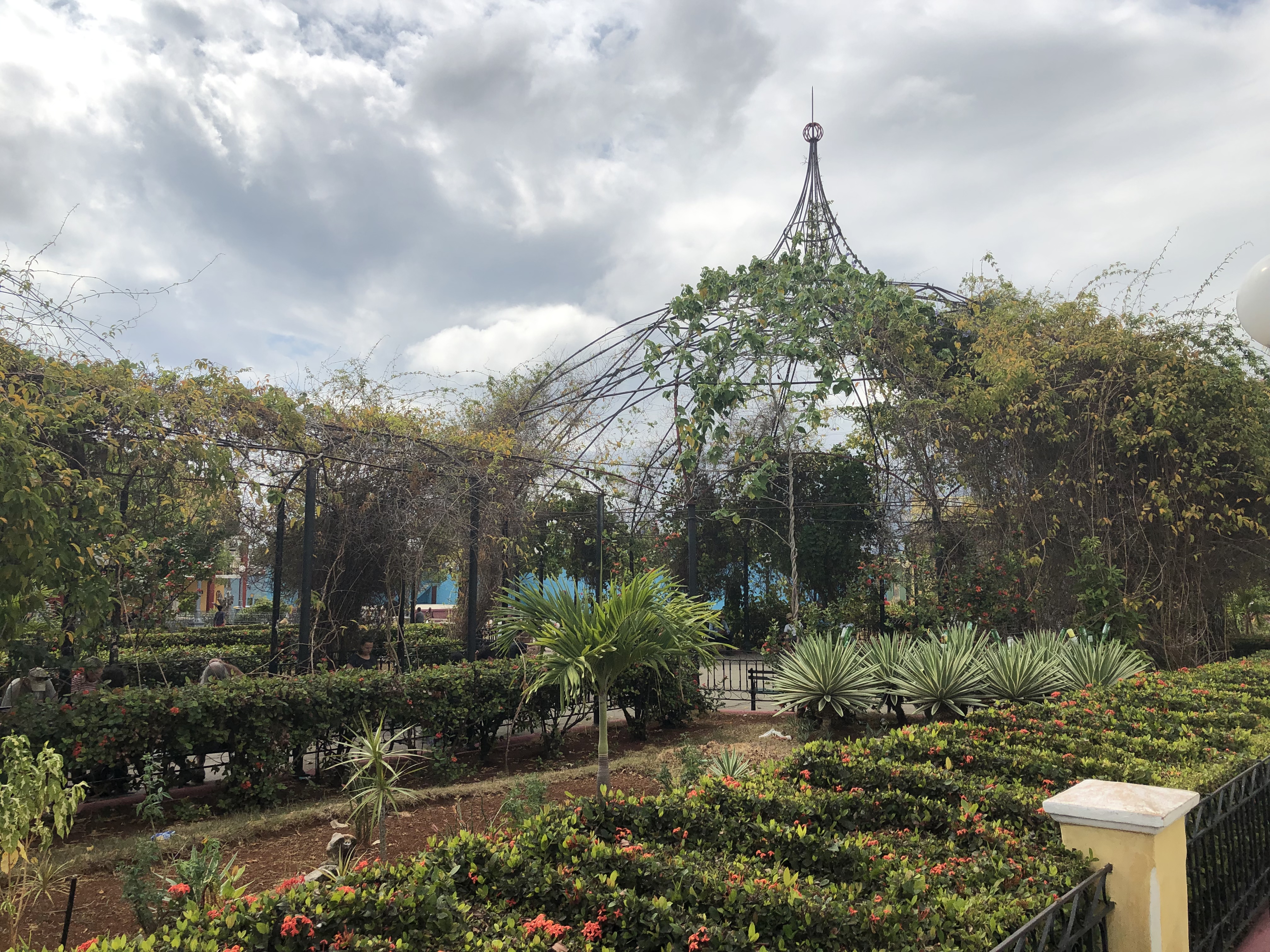
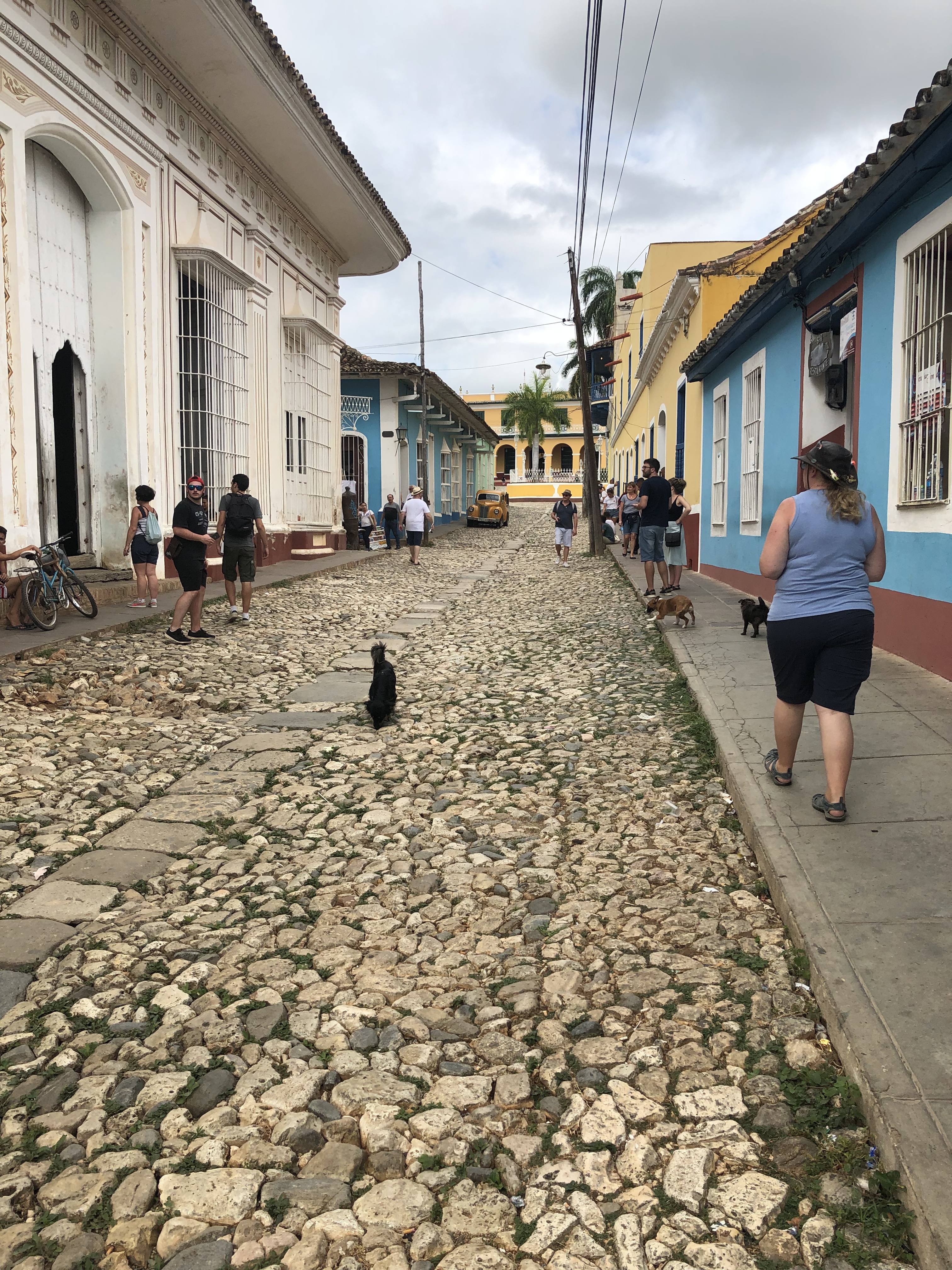
An interesting sideline that we came across in Havana and now again in Trinidad was the use of old cannons as bollards in the street. I guess with the Spanish and pirate heritage of the region, there were no shortages of cannons either laying about or contained within sunken vessels near the shore. Many of these have been salvaged, repurposed and buried to block traffic into pedestrian areas. It is nothing massively noteworthy but adds to the charm of the place.

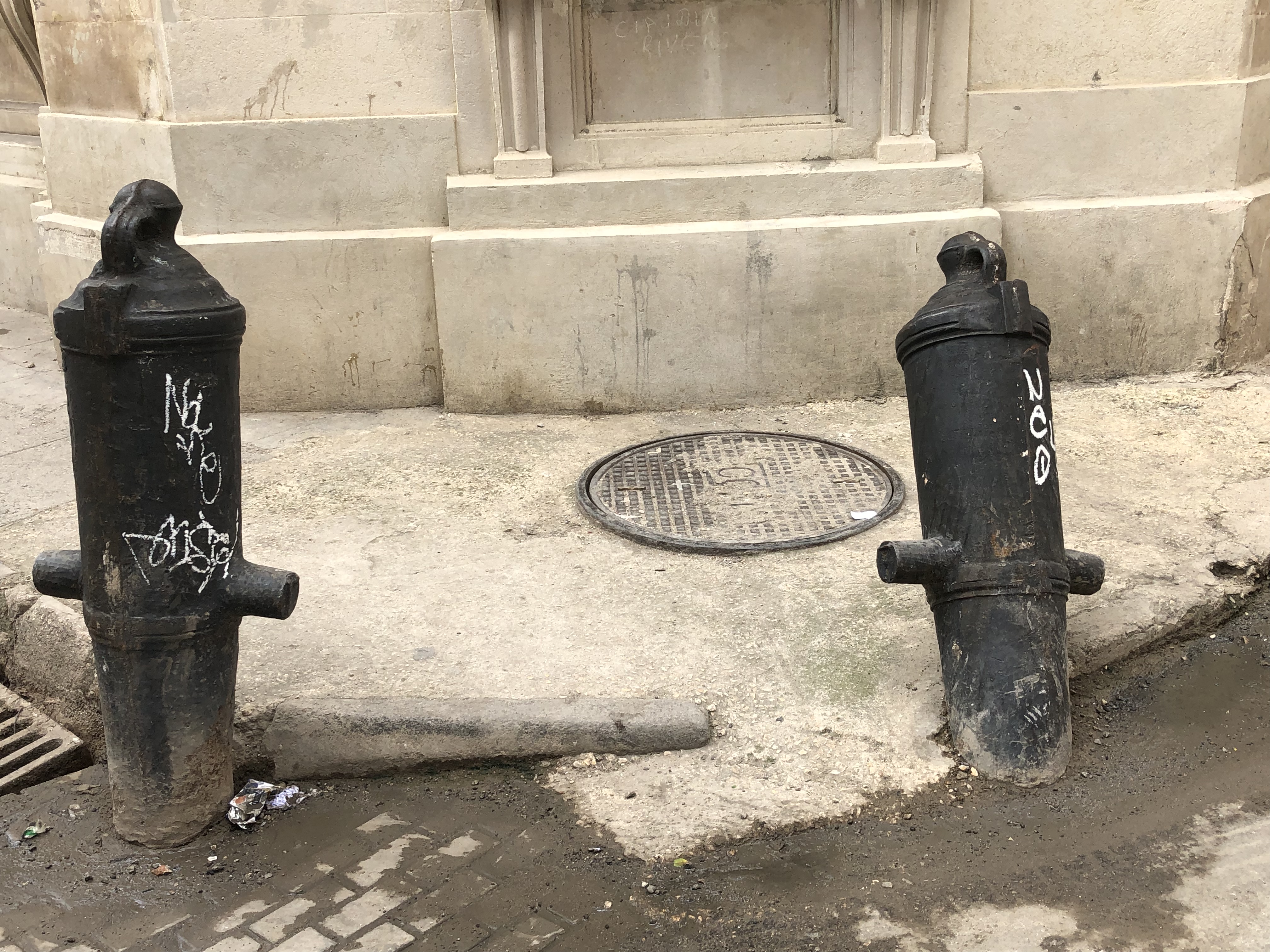
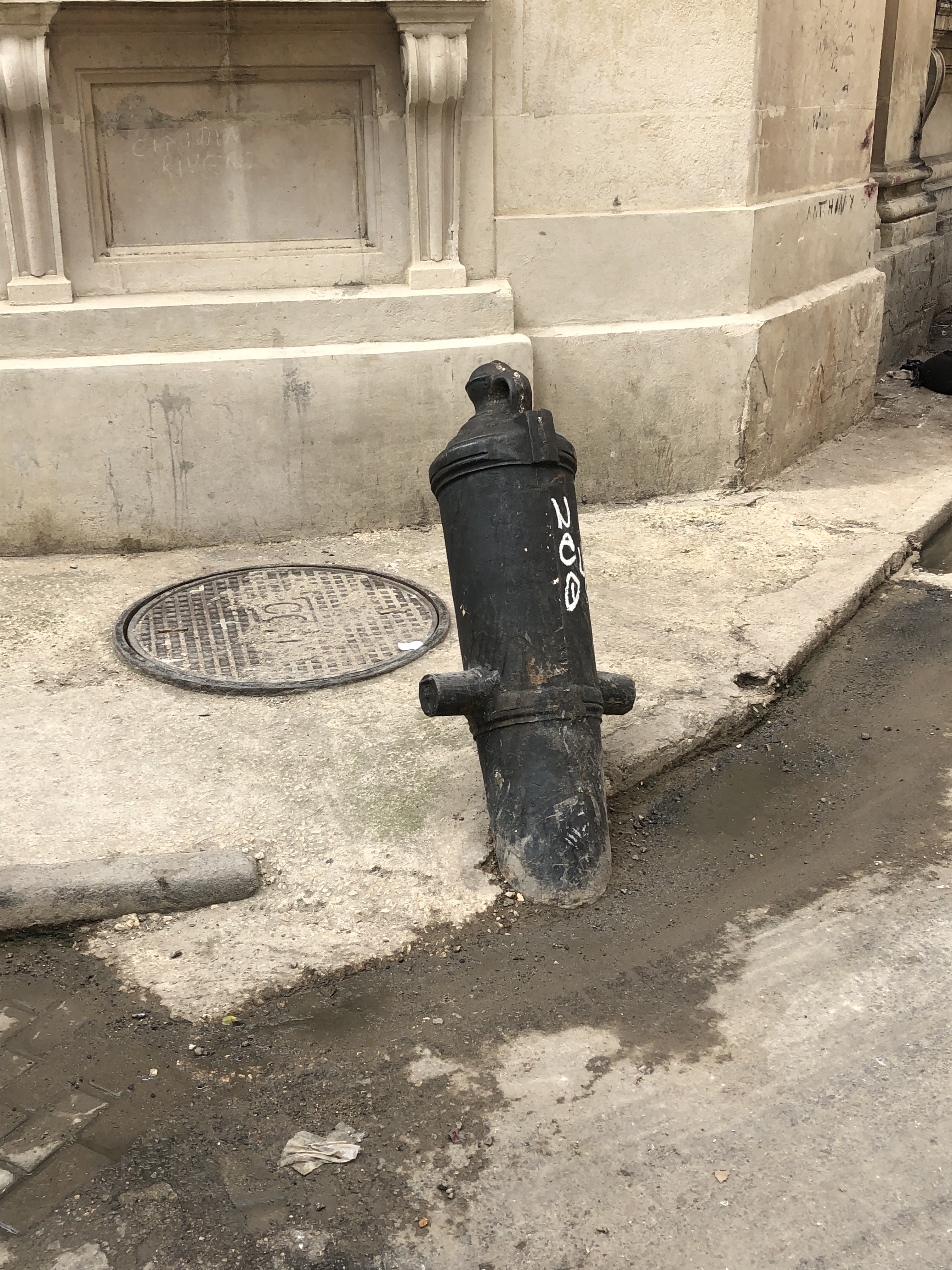
Fourteen kilometres down the road from Trinidad is Playa Ancon one of the best beaches in the country. So on day 2 we hopped a cab and spent 4 hours lazing on pristine white sand underneath palm frond umbrellas. I lolled about in the water while Jill worked on her Canberra tan.

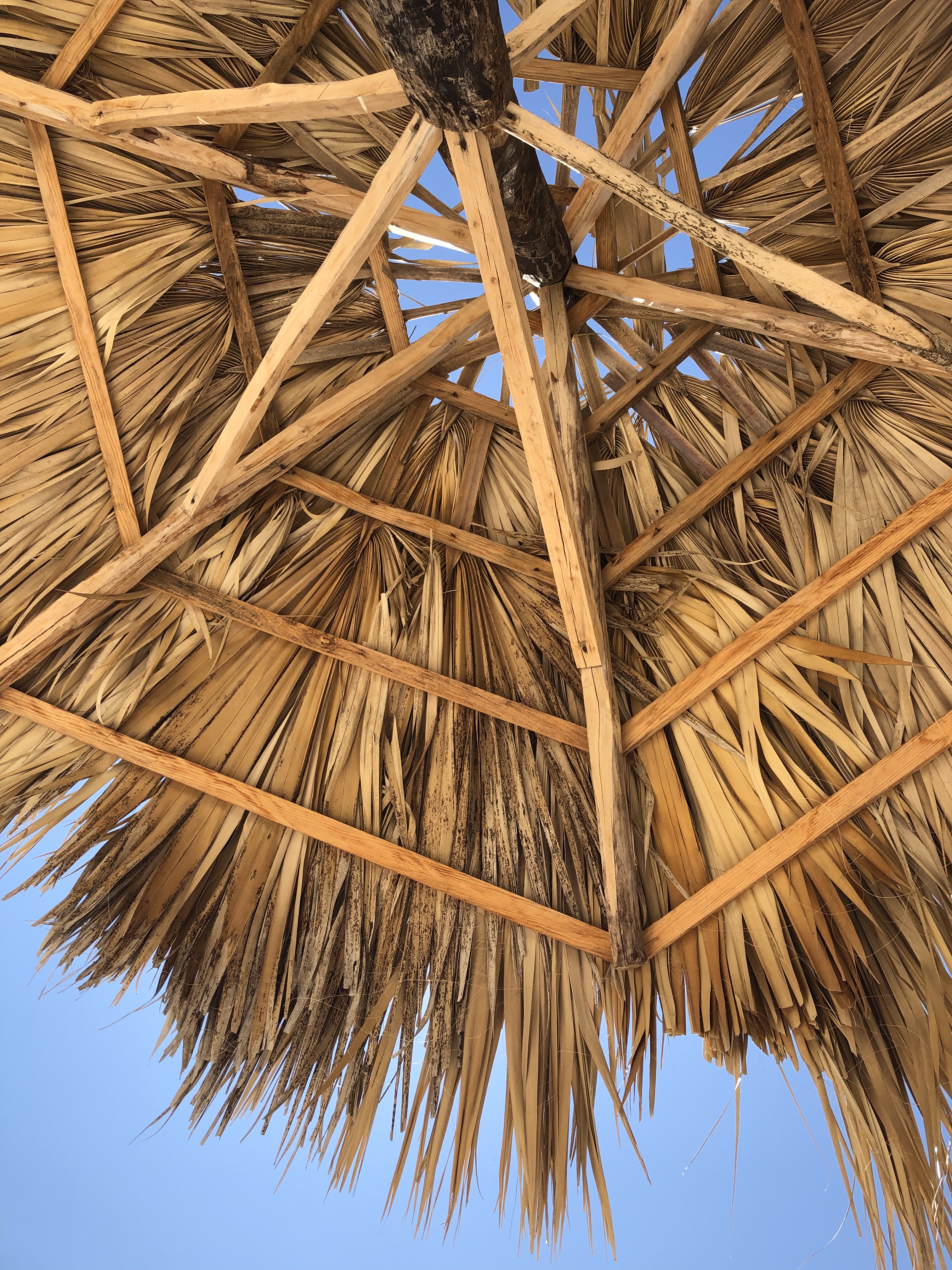
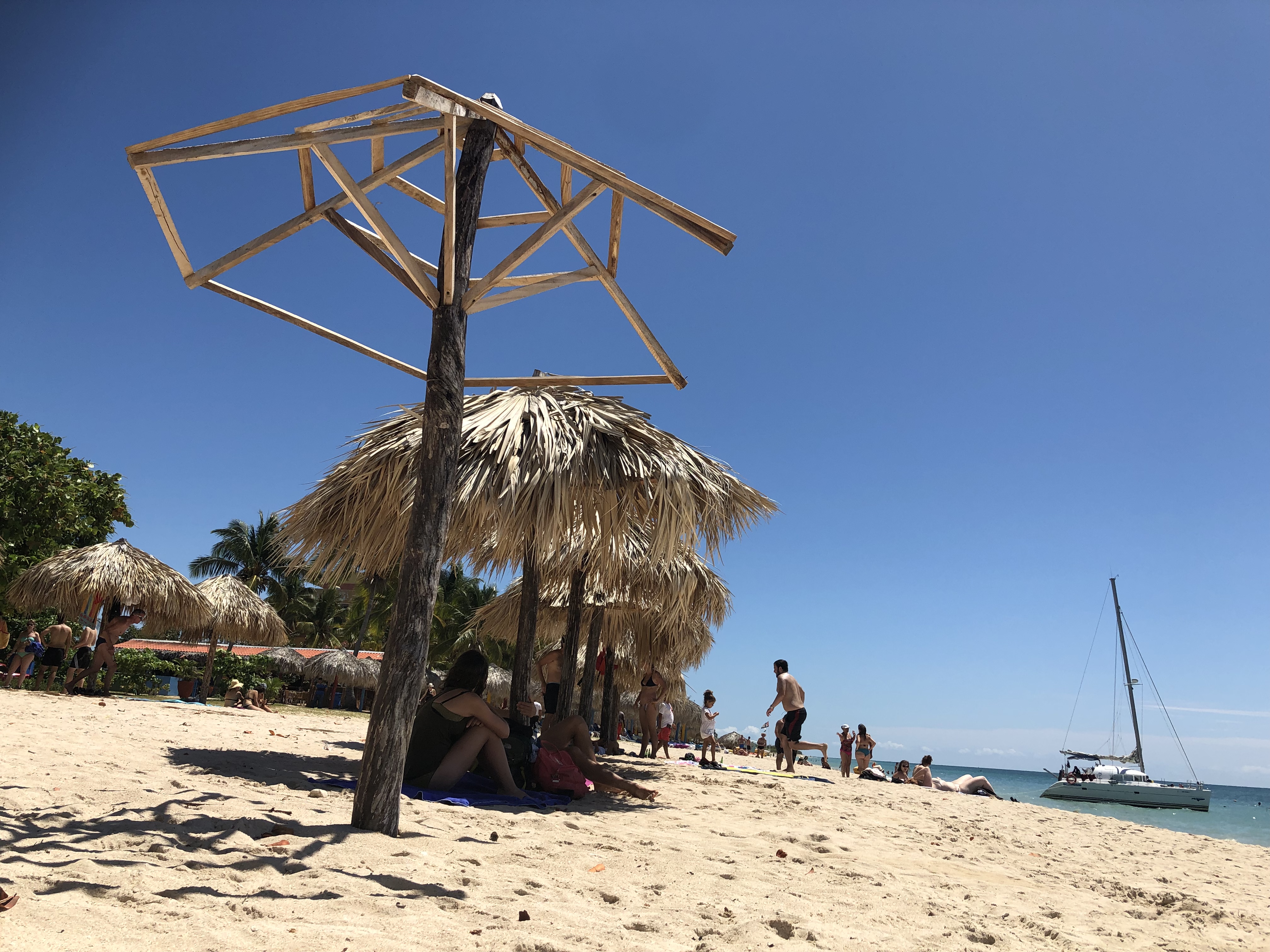
You wouldn’t believe it…I got sunburnt…I haven’t been sunburnt in decades. Something about the tropical sun, breeze and water got me. I got red as a beetroot on my chest and a bit on my back. It is a shame it is about a week early otherwise I could have blamed it on the “April Sun in Cuba”.
Another early start for a 6 1/2 hour bus ride to one of the few beaches in the country reportedly better than Playa Ancon.
Cuba an overview
On the whole I loved Cuba and am so glad I got to experience it before the tourist hoards turned it into every other largely homogenous island nation. But it is an island of contradictions. Many of the things that give it its charm are also detractors to its effective operation.
Rubbish collection is a major issue in Cuba with many corners occupied by stinking, messy skip type bins awaiting removal. Dogs infest the streets during the day, rifling through the uncollected rubbish bins. Cats cannot be seen during daylight hours but come out in force at night and (yep you guessed it) raid the uncollected rubbish bins. This means that very little of the rubbish remains inside the original receptacle but rather is scattered in the vicinity. And when it does get collected, only that which remained in the bin gets removed, leaving piles of filth and stink on many corners.
The lack of internet was annoying but less of an issue than I thought it would be. The adoption of the French attitude to smoking (including at meal tables) was more of an issue than I thought it would be. But the people are wonderful. There is virtually no crime, no drugs, no guns just sunshine and sea breezes.
Propaganda (anti US) remains high to this day. Billboards are filled with images of Fidel Castro or Che Guevara and words like viva la revolution are commonplace, especially in the country areas.
And of course there are the cars…
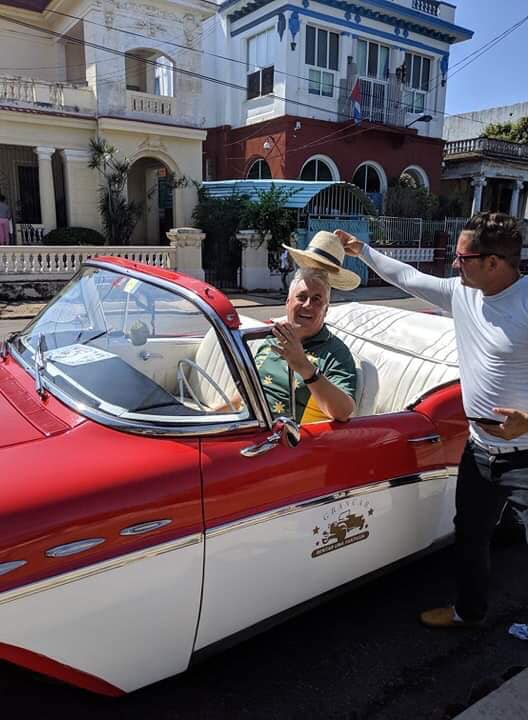
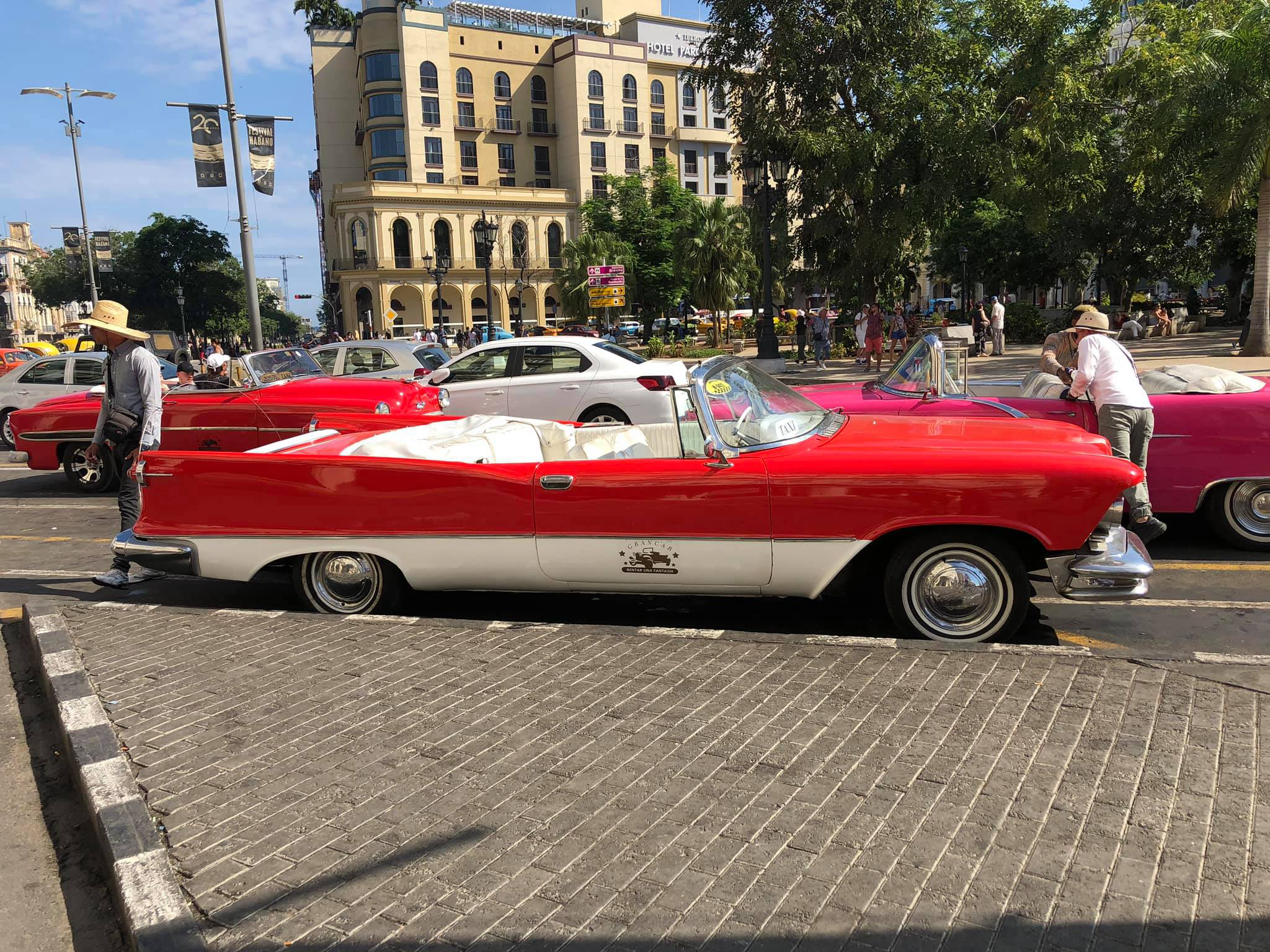
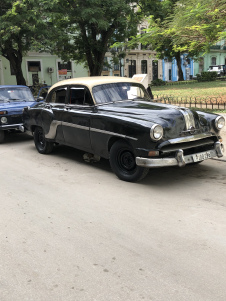
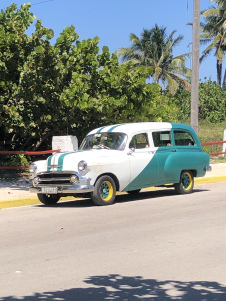
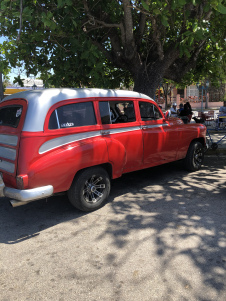

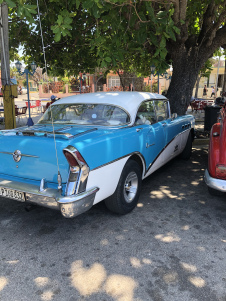
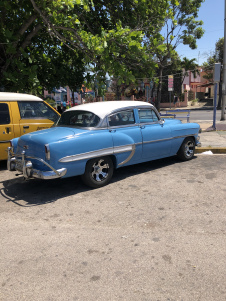


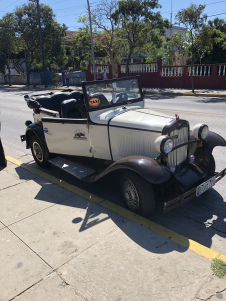
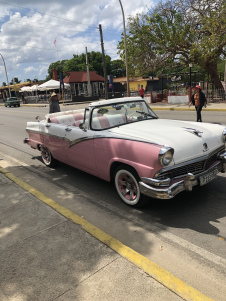

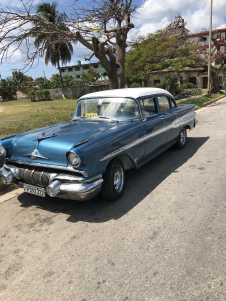
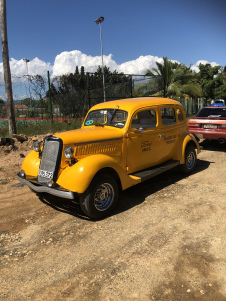

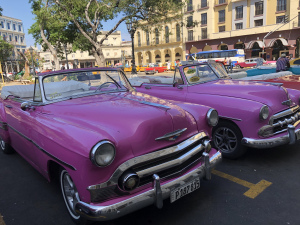

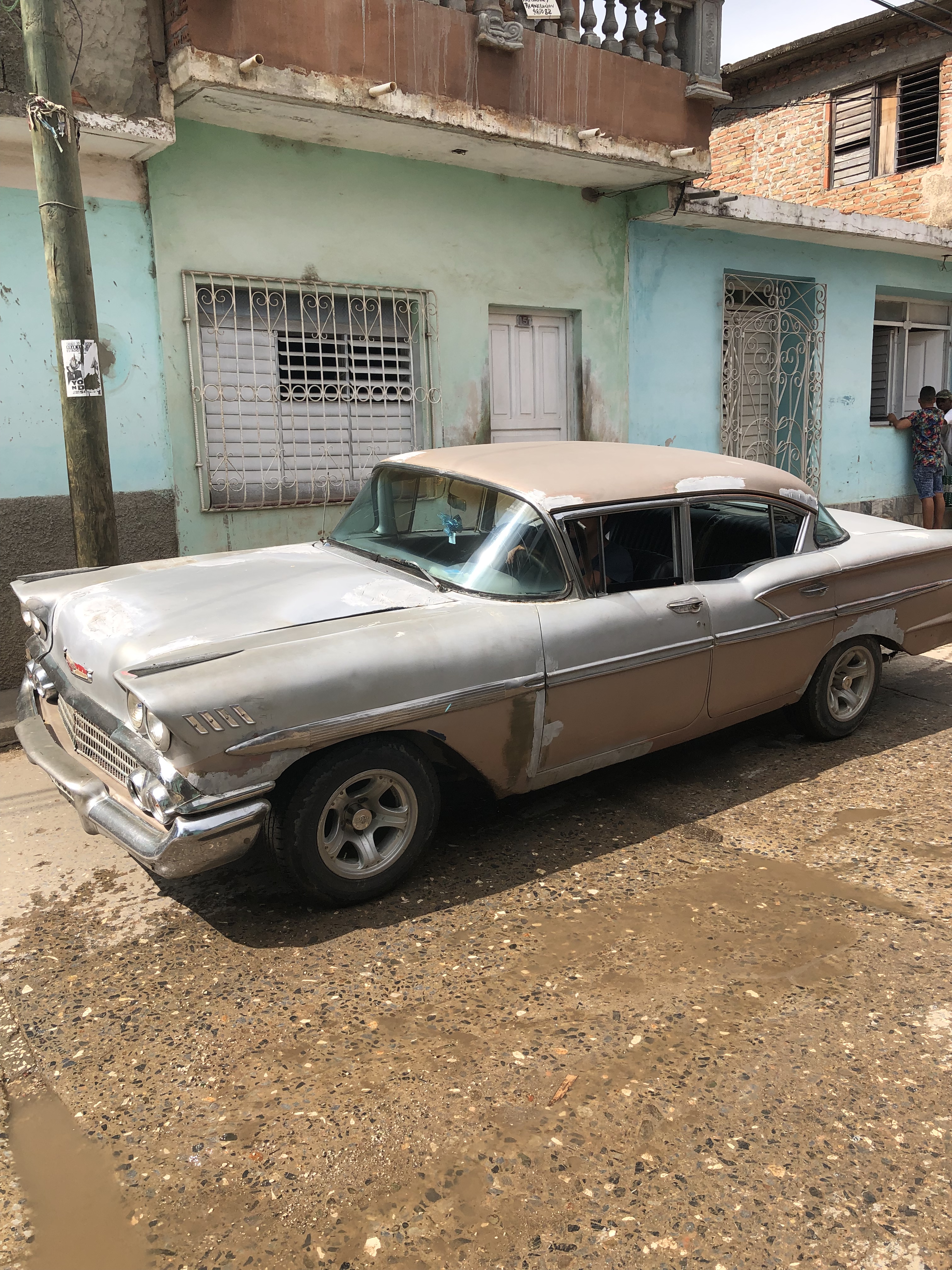
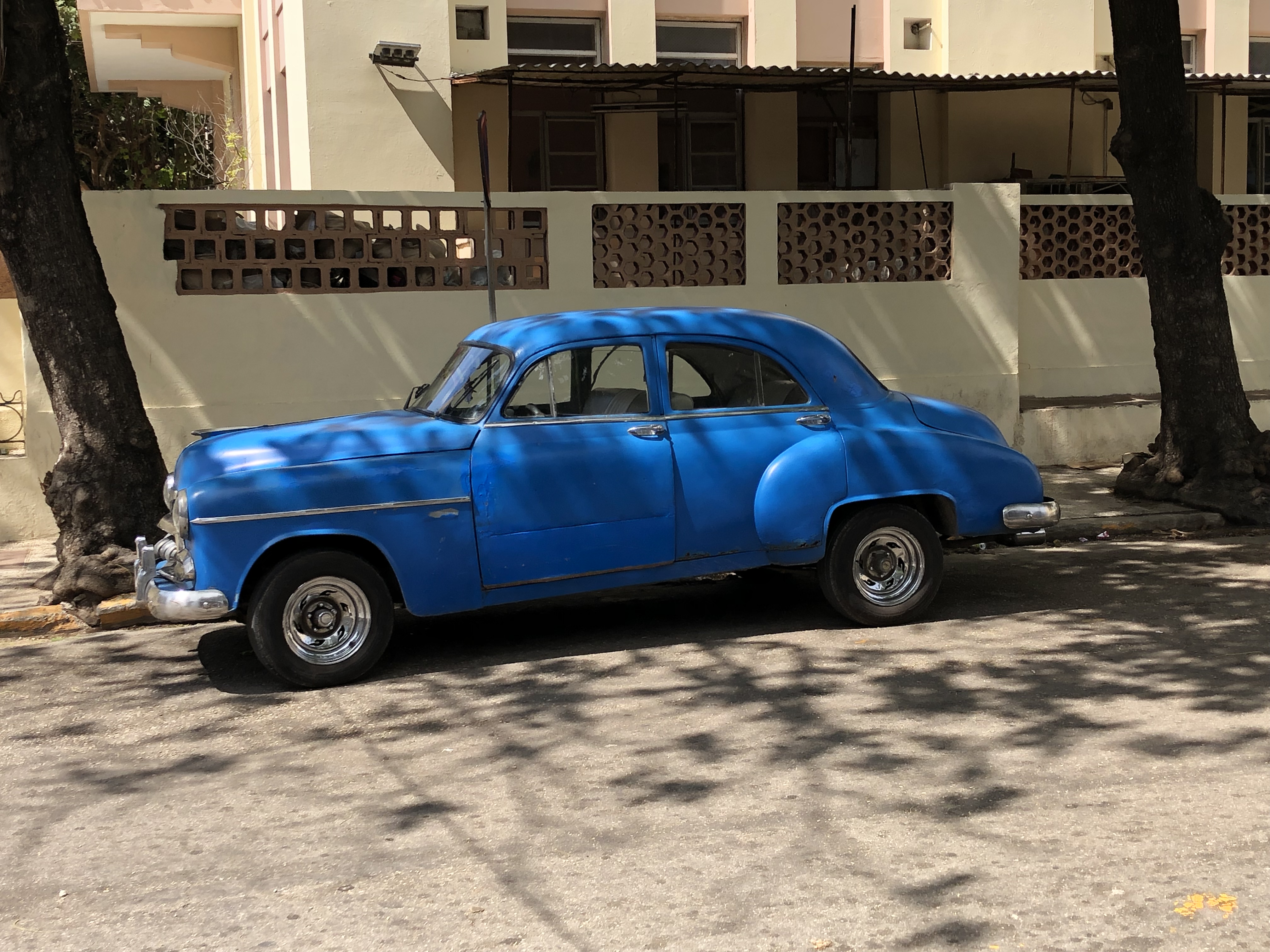

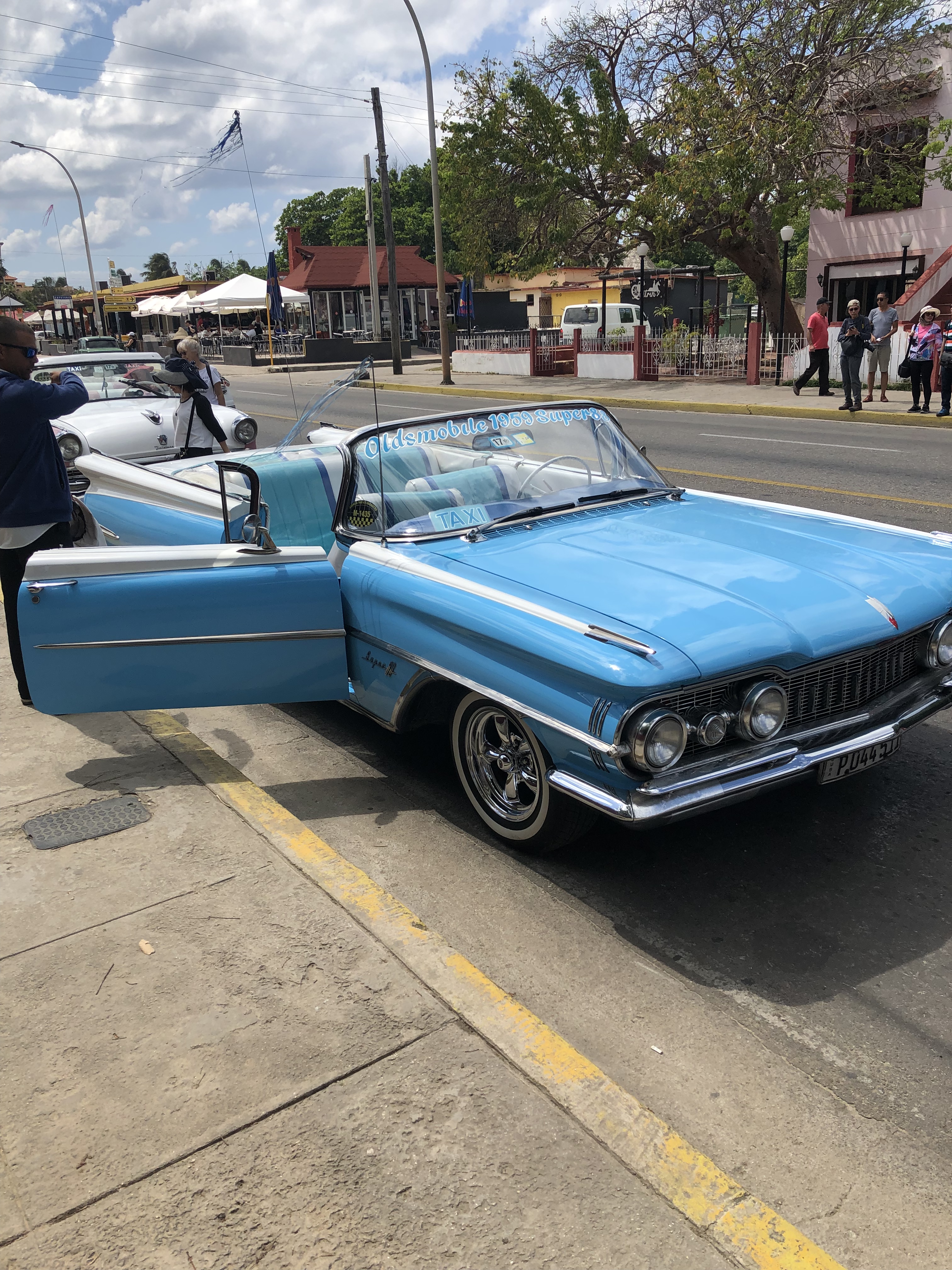




Cancun, Mexico
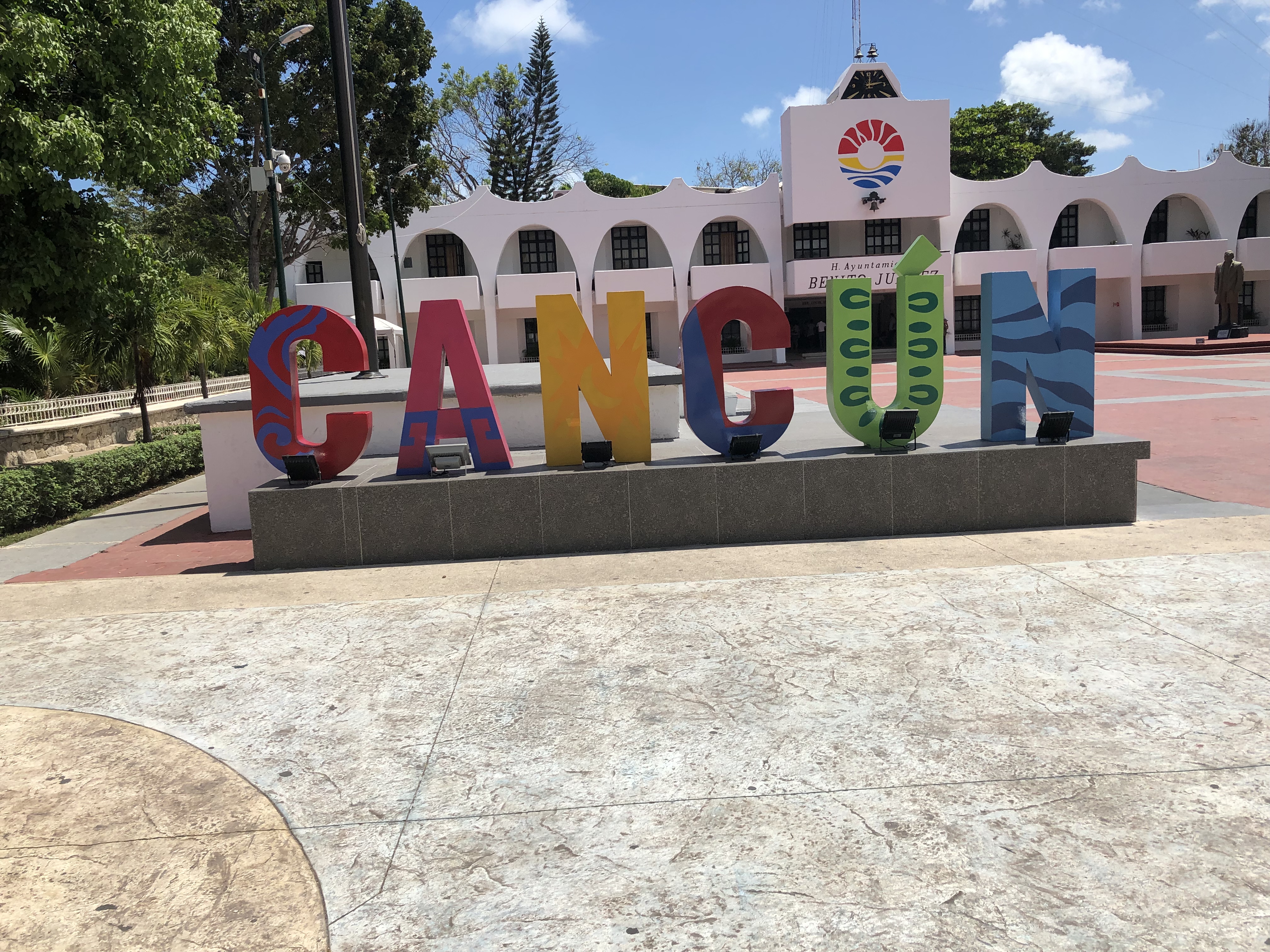
Well I nearly didn’t do this post because I couldn’t work out what to say about Cancun. Almost everything I say will be wrong…but at the same time be 100% accurate.
It is safe to say that Cancun has absolutely everything and that it offers nothing. It is Las Vegas by the ocean. Everything is overpriced. There is nothing here that is authentic but there are some very real experiences to be had here. Our exposure to Cancun is by no means representative but in hindsight I am not sure if anybody’s experience would be… it is ultimately whatever you want it to be.
It starts at the airport…from the Margarita Bar as you walk out to the $70US cab fare into town…you will be stung.
I think that it is fairly safe to say that every single 5 star resort conglomerate on the planet is represented here in Cancun at least once, with many having multiple offerings. For the most part they are incredibly flash, opulent and lavish…and the sit side by side in a 17 mile stretch of beach between the Nichupte Lagoon and the Caribbean Sea. They offer all inclusive resort deals at a premium price. A haven where your every need is catered to and there is no need to ever leave your private enclave.
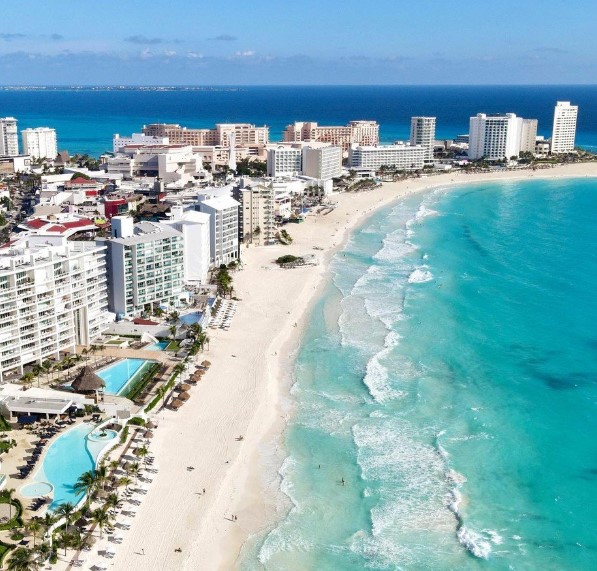
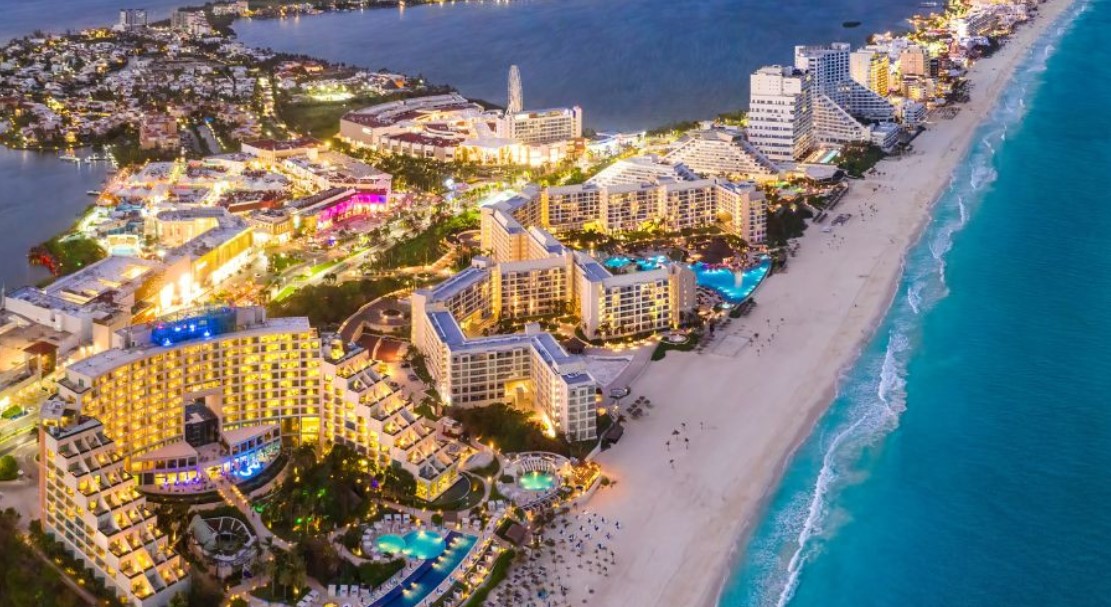
Across the road from the hotels is the shops…of course…and every brand name is represented. If you can afford it, it will be available for purchase. Interspersed with the usual suspects of elite fashion and consumerism are local artisanal offerings at hugely inflated prices. These are held within large market type areas where the tourists can haggle to get their local souvenirs.
The most persistent and shrewd of hagglers may be able to get away with paying 250% over what the item is actually worth. These guys are professional sellers…and they are good at it. Enter the oblivious tourist with a wallet full of cash and an “I’m on holiday” mindset and the prices skyrocket.
The drinks are overpriced and often watered down and the food is typically exorbitantly priced. But the beaches are stunning, the service is first rate and the water is crystal blue, warm and inviting. And attached to overpriced tours are some incredibly good options of things to do in the nearby vicinity.
Of particular note are the ancient Mayan ruins (including Chichen Itsa), numerous sinkholes or nearby islands. But we were only here for around 24 hours and none of this was done by us, and certainly the 5 star world was avoided.
Instead we stayed true to form and crashed at the local backpackers in search of something that resembled the real Cancun. In this we were wrong, and we (for the most part) failed. But this more reflected our ignorance of the many versions of Cancun operating simultaneously, in parallel, and almost entirely mutually exclusively.
So what did we do…not very much. We wandered the backstreets, shopped in dodgy markets for overpriced trinkets and tried to find traditional, local places to eat. What we ended up with was a fantastic, authentic Mexican meal, from a dodgy restaurant that aimed to attract the tourists. It was cheap, tacky and brilliant.
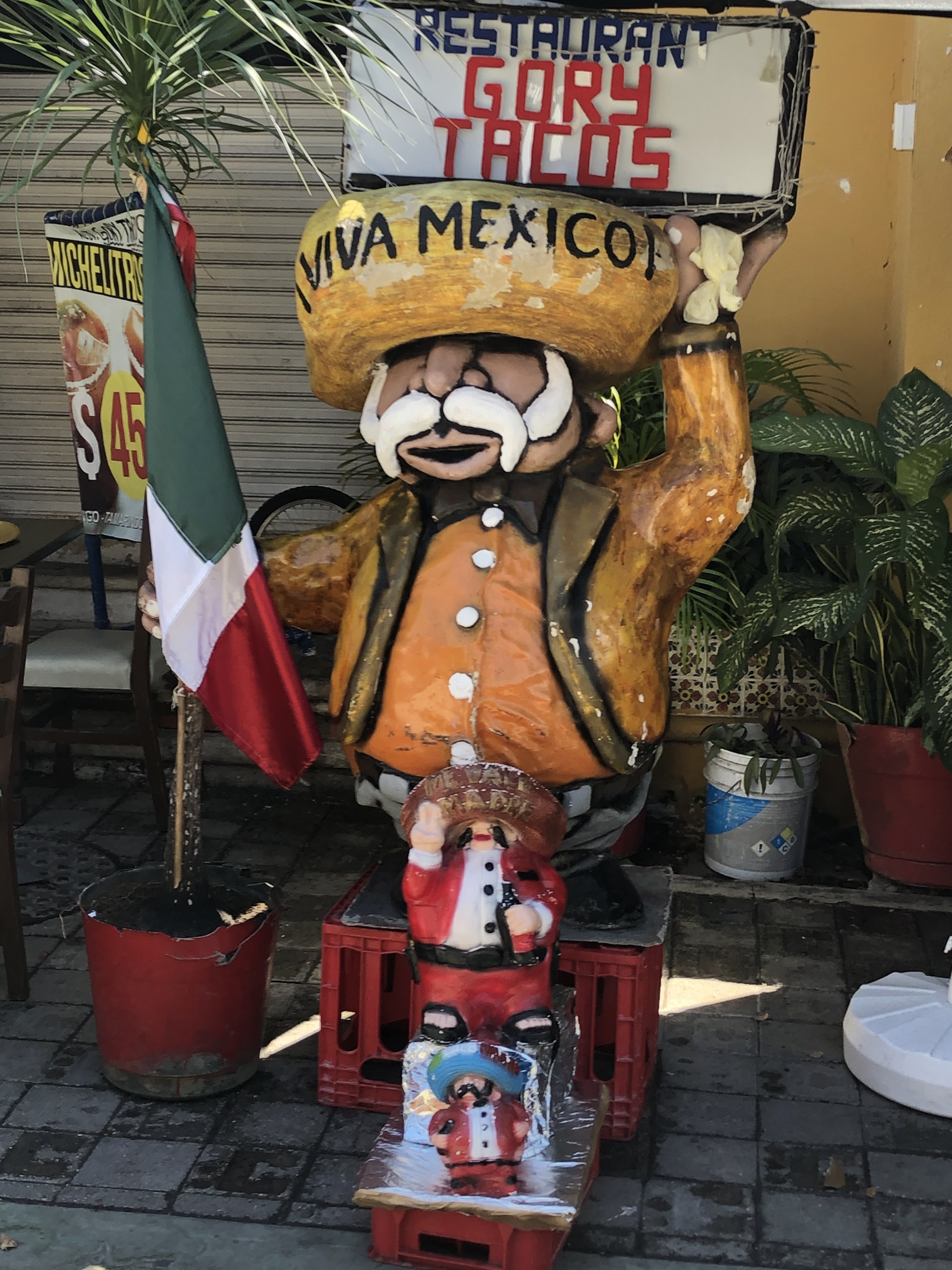
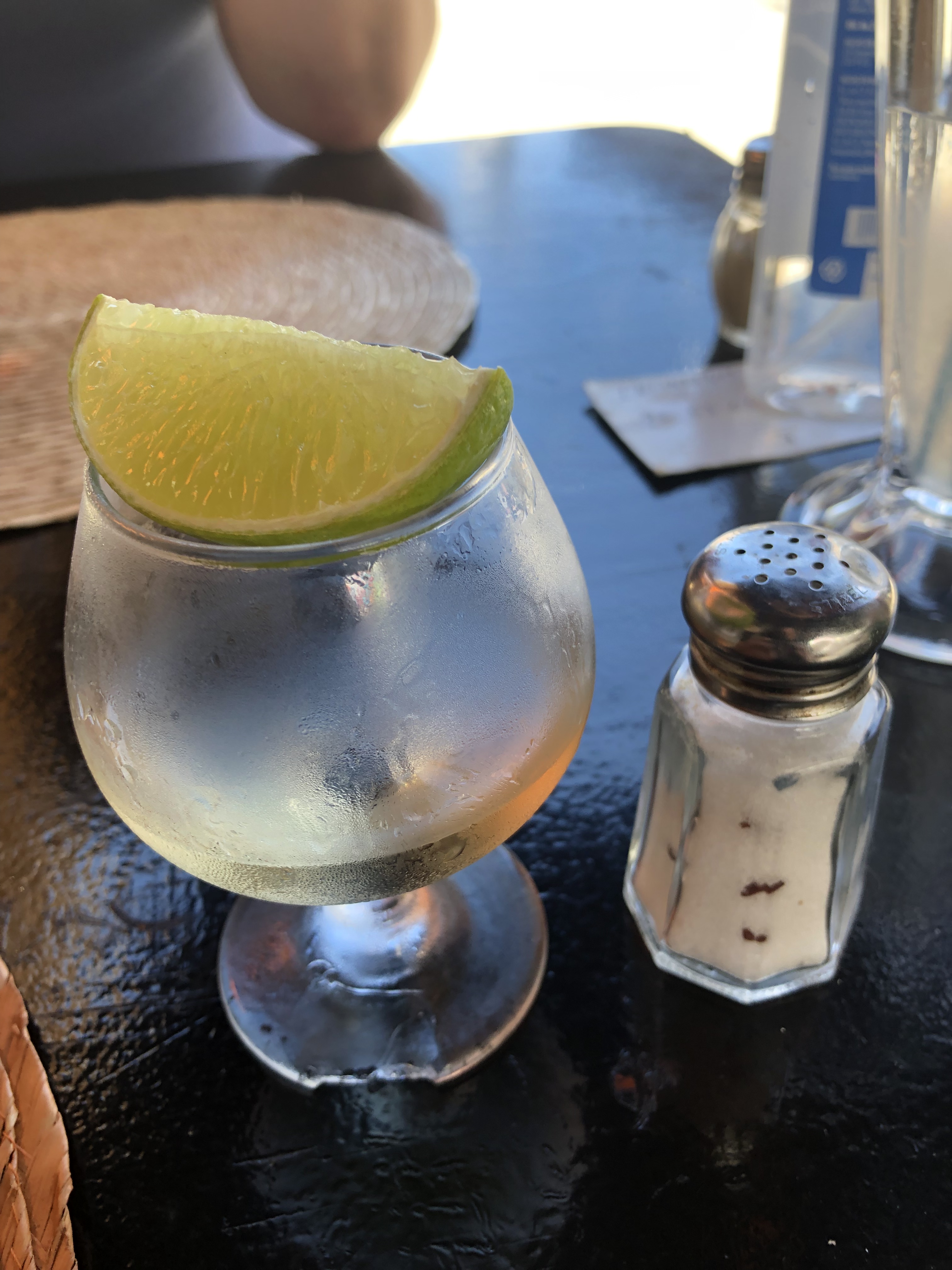
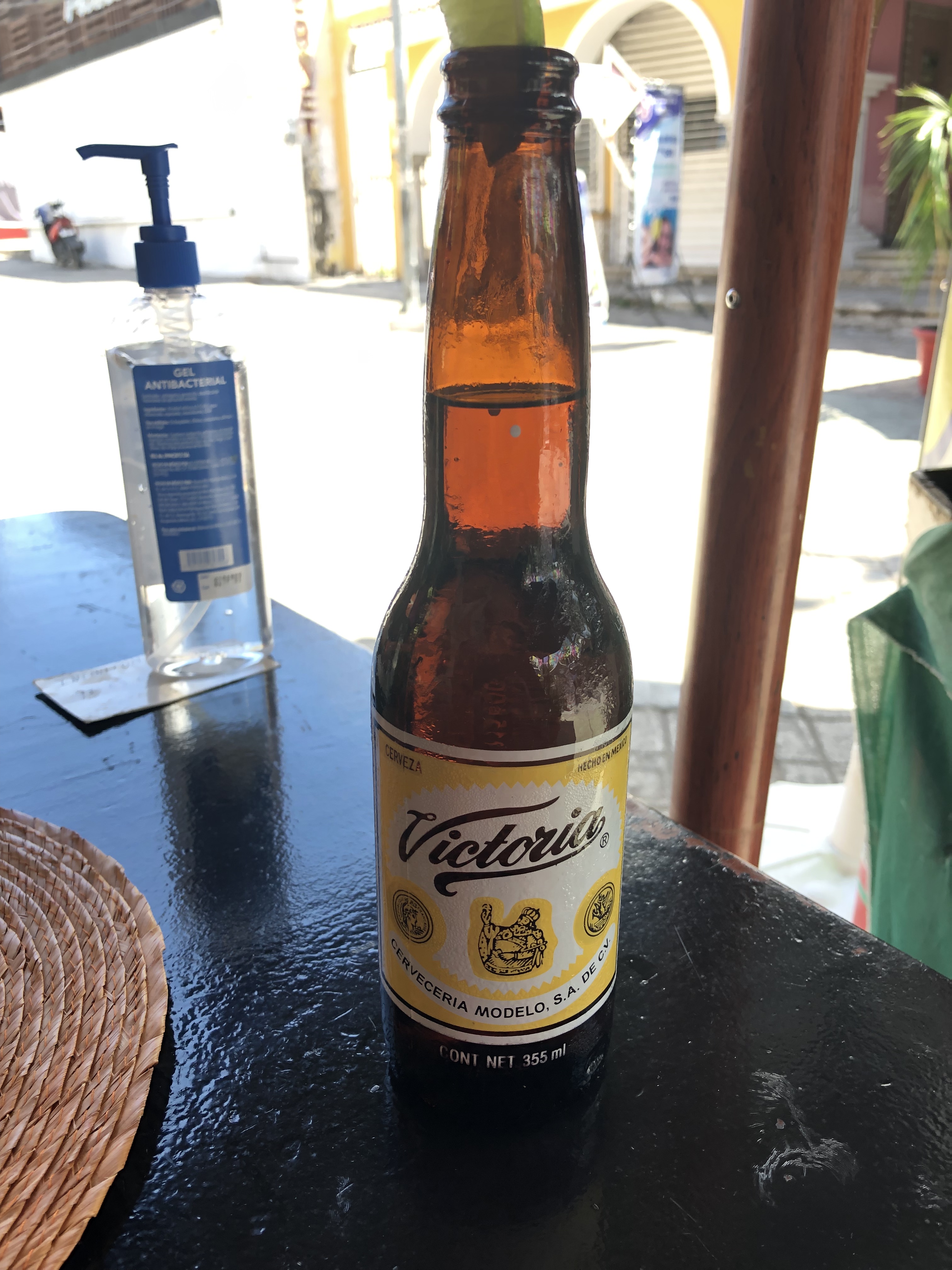
We got incredible food, the best service we have ever received, 2 for 1 drinks, huge grins, lots of banter and a thoroughly enjoyable afternoon…and all for an reasonable price tag. And of course the meal was washed down by some of the finest Mexican coffee (tequila). And if this is the real Cancun then we dipped our toes into the water, if it isn’t then we were miles away.
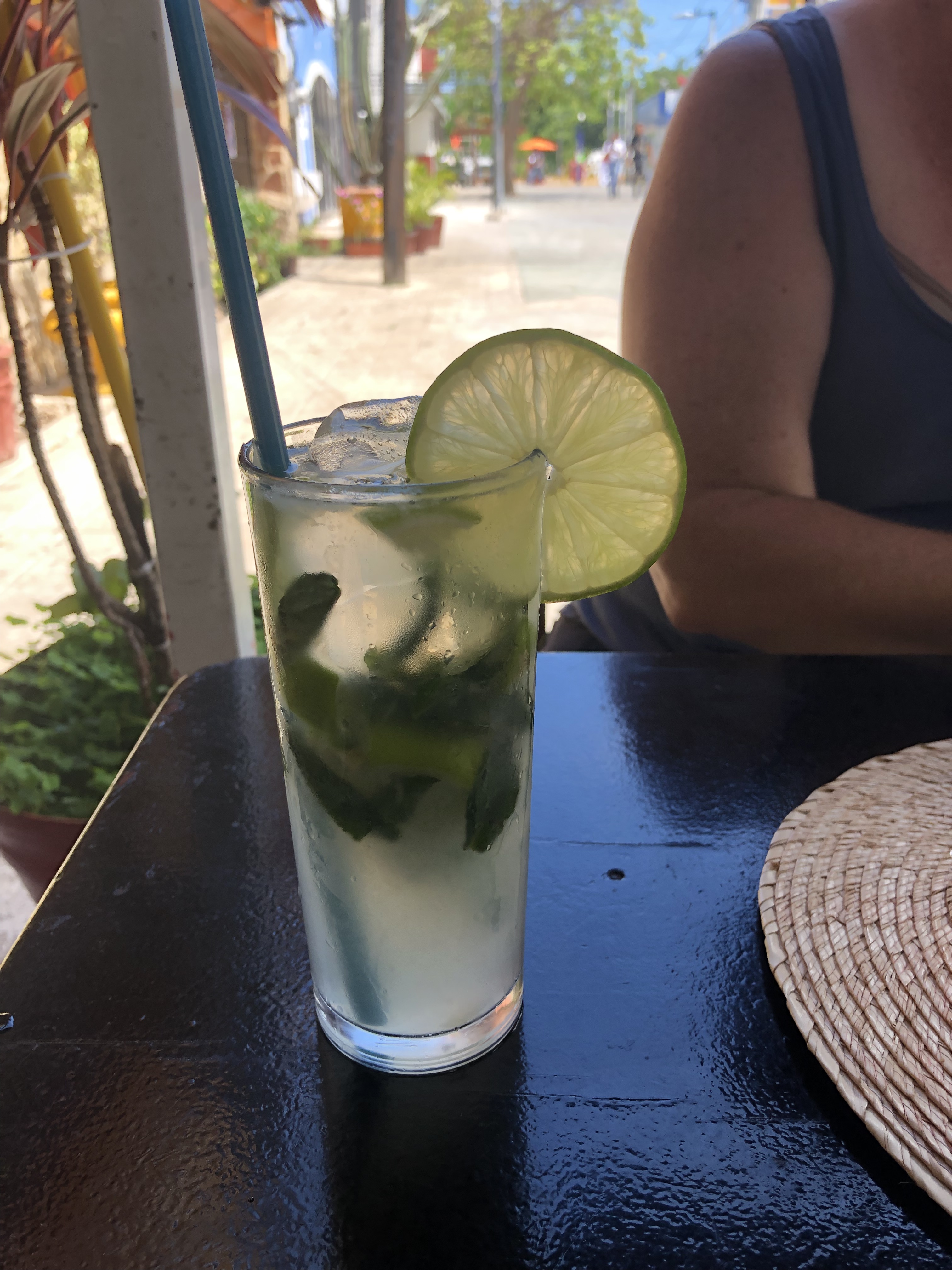
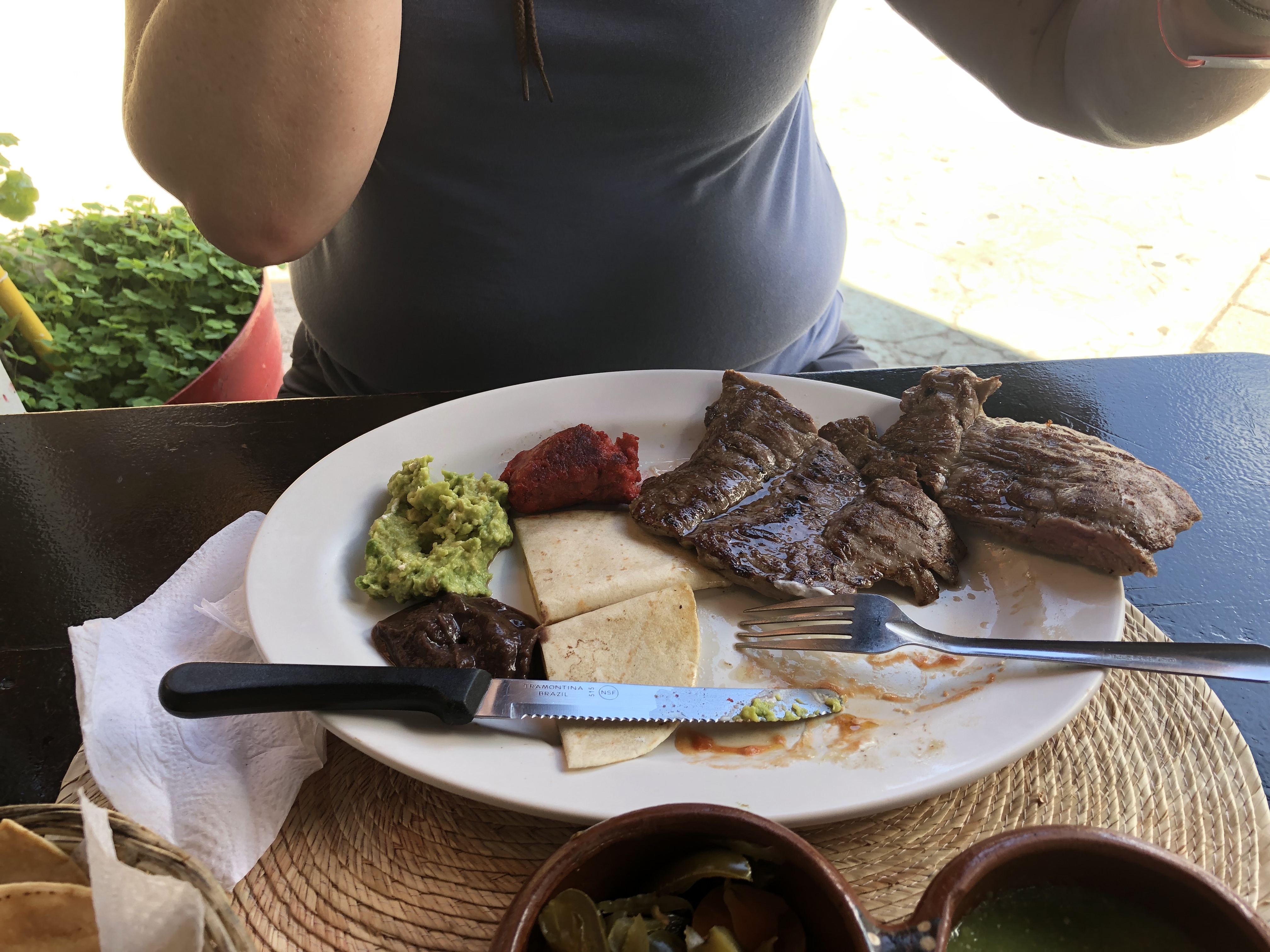
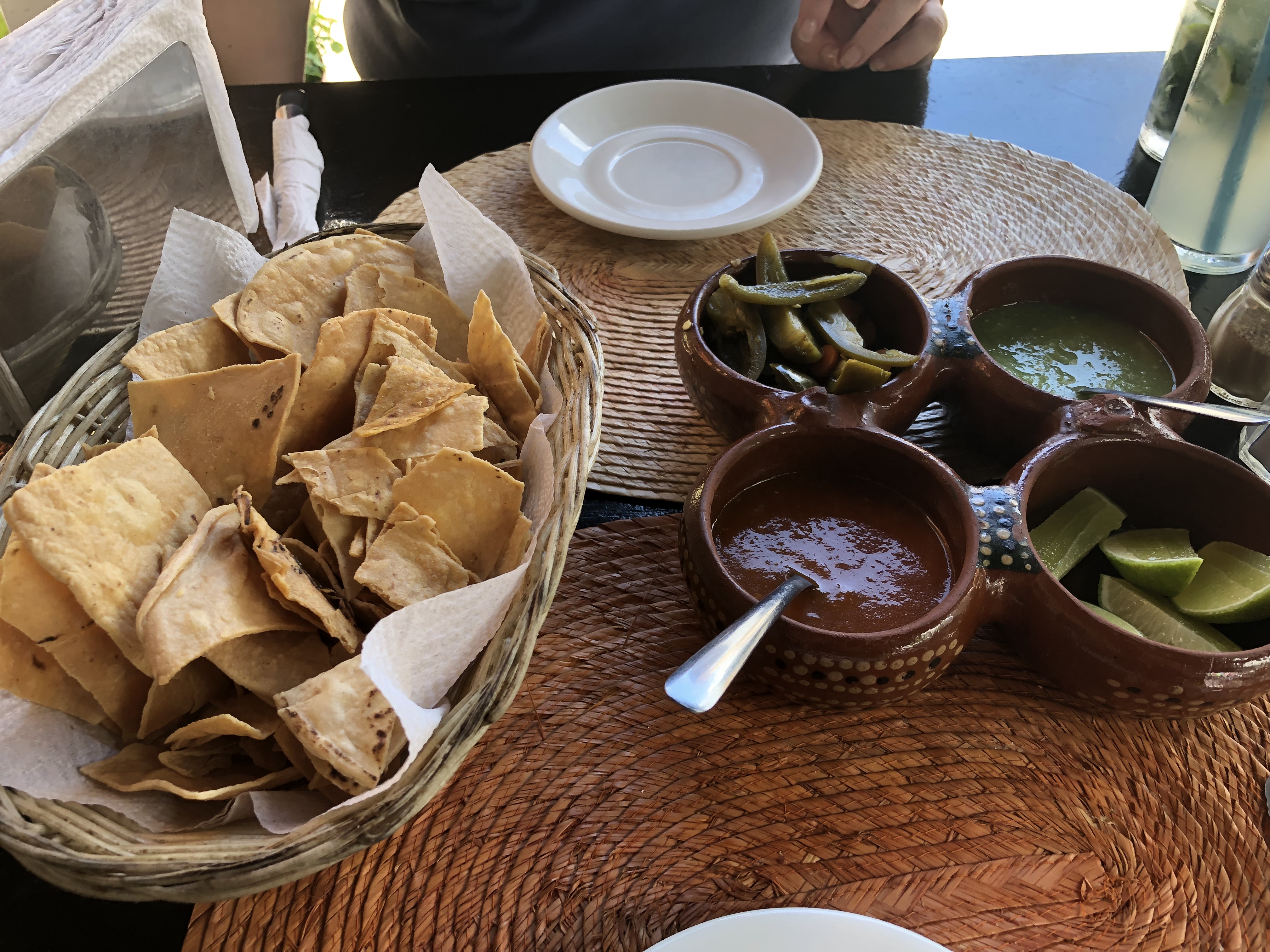
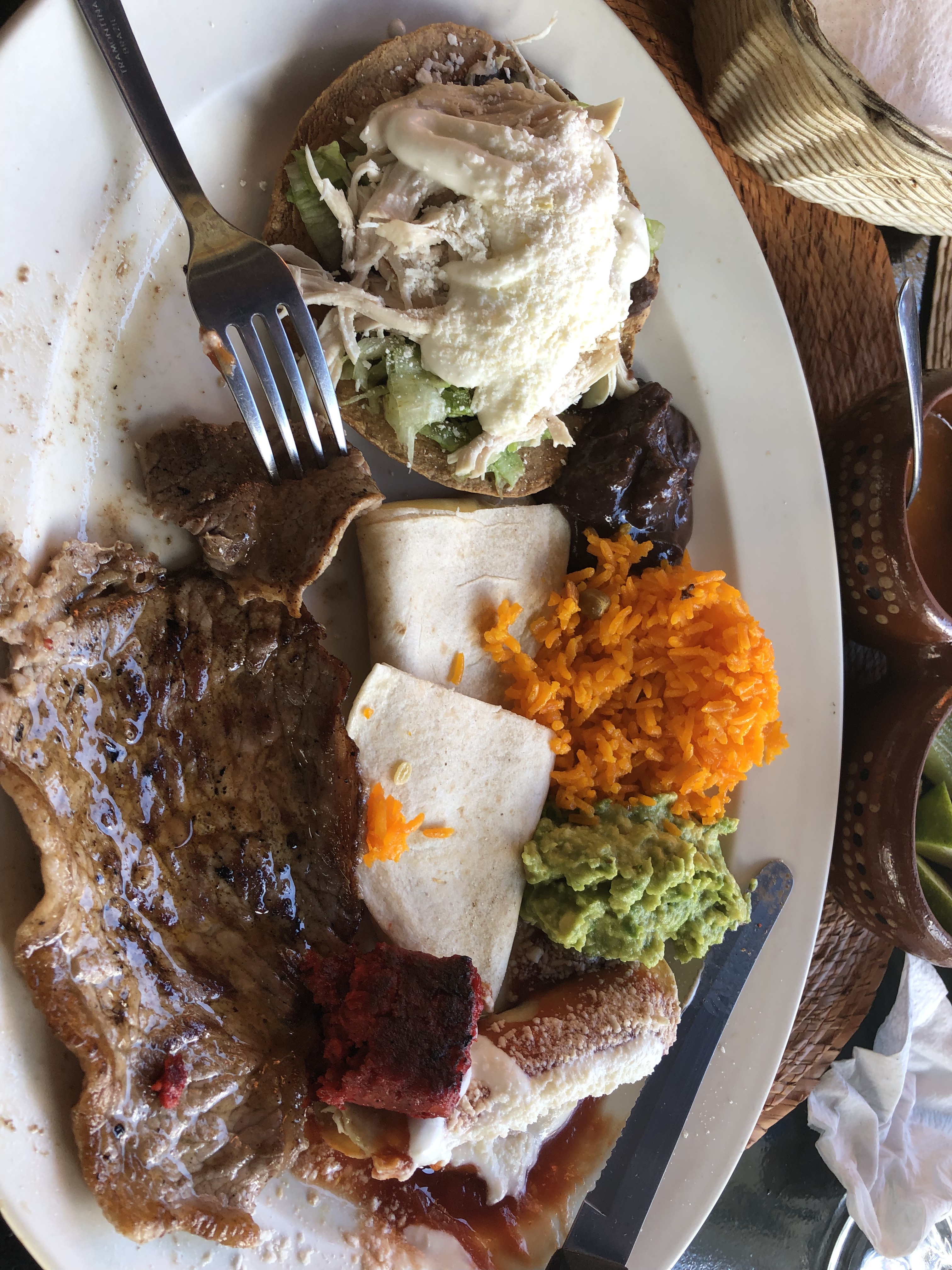
Our philosophy of travel has been to get as close to what is authentic as is possible. This mostly means living meagerly and eating from street food stores or dodgy street-side restaurants. And this is what we sought and found here in Cancun, but I am not entirely sure that this was what passes as an authentic experience. Some places (like the Gold Coast in Australia) have evolved to be true tourist towns and that the tourism in its various forms is what is actually authentic. Perhaps this is the case in Cancun.
Long story short, we had a nice time and I would happily return.
Lima, Peru.
Well if first impressions count…I am going to hate this place.
The traffic was horrendous. And this coming from two people who spent so much time in Asia. I have not seen traffic so bad in a very long time. The volume of cars was high, the honking and beeping was constant and the fact that lane markings were not even considered made this place a hellhole…and that was just getting from the airport. We turned right from the left hand lane, across 3 normal but 5 actual lanes of traffic, at speed. It was certainly a white knuckle ride and we both decided that perhaps it was better if we just didn’t look.
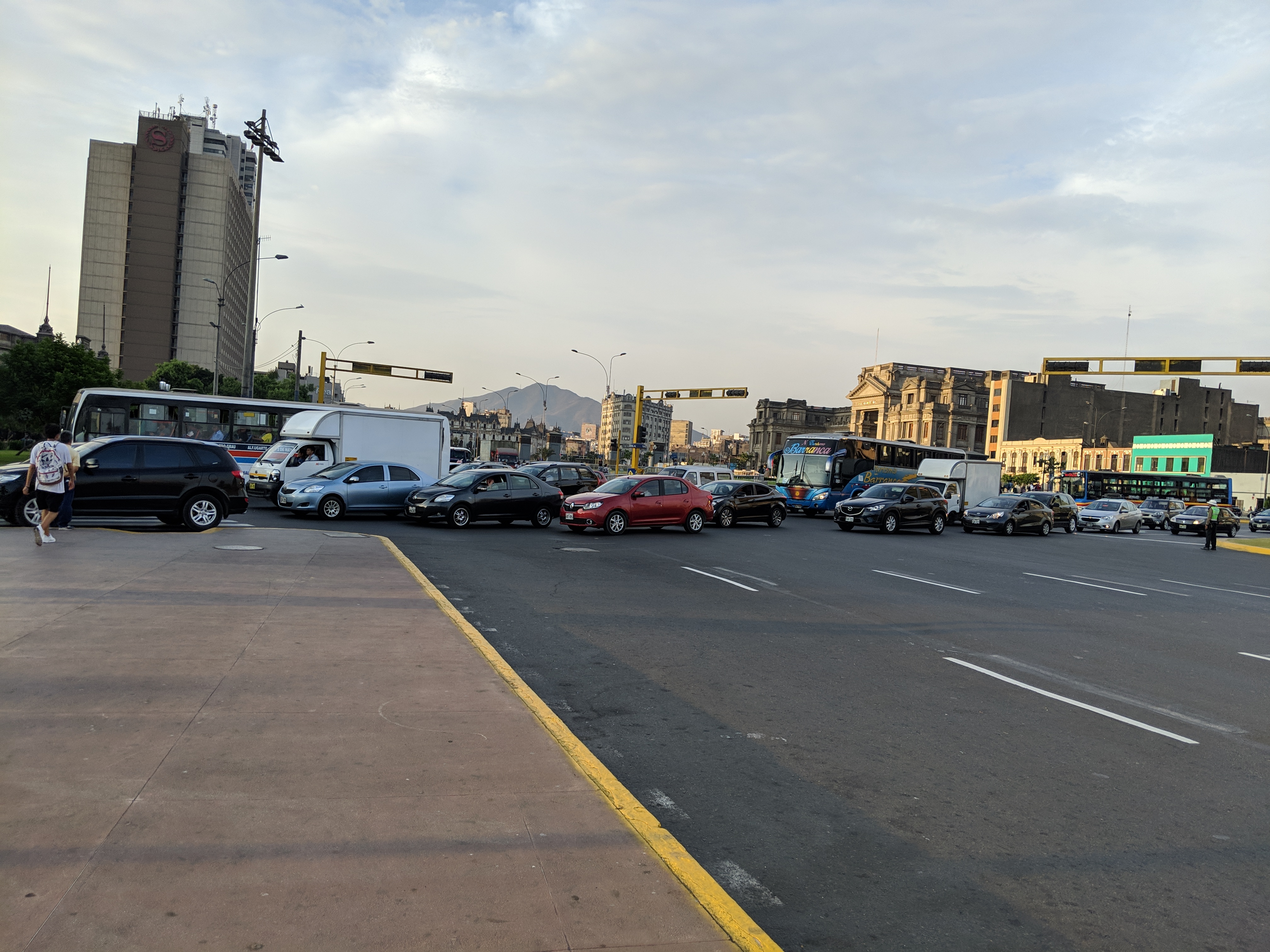
But everyone I spoke to told me I would love Lima…so lets see…
After a nap (early morning flights and another 2hr time zone change) we headed out for a late afternoon stroll and a bite. While the traffic remained devilish there was some semblance of order to it…but not enough to trust. We wandered along the park in front of our hotel towards the centre of town.

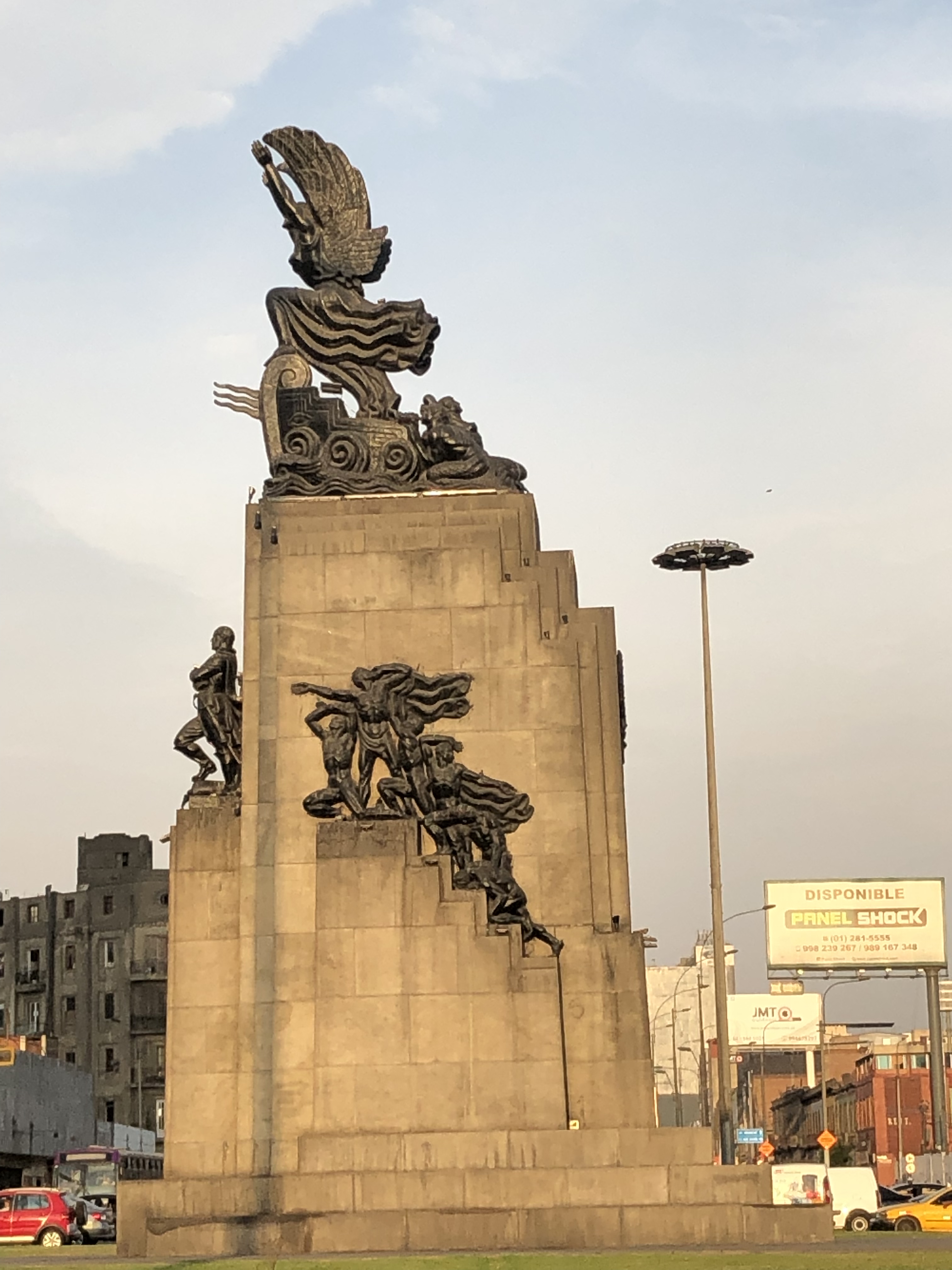


We came across a seafood restaurant that we had seen during our “what is nearby” searching that has become commonplace when we hit a new city…so we gave it a try. And wow…we picked well. The early bit was just basically bar snacks, corn kernels (concha) plantain chips and a mayo and a salsa type dip. All incredibly salty but perfect for ordering more cerveza (beer).


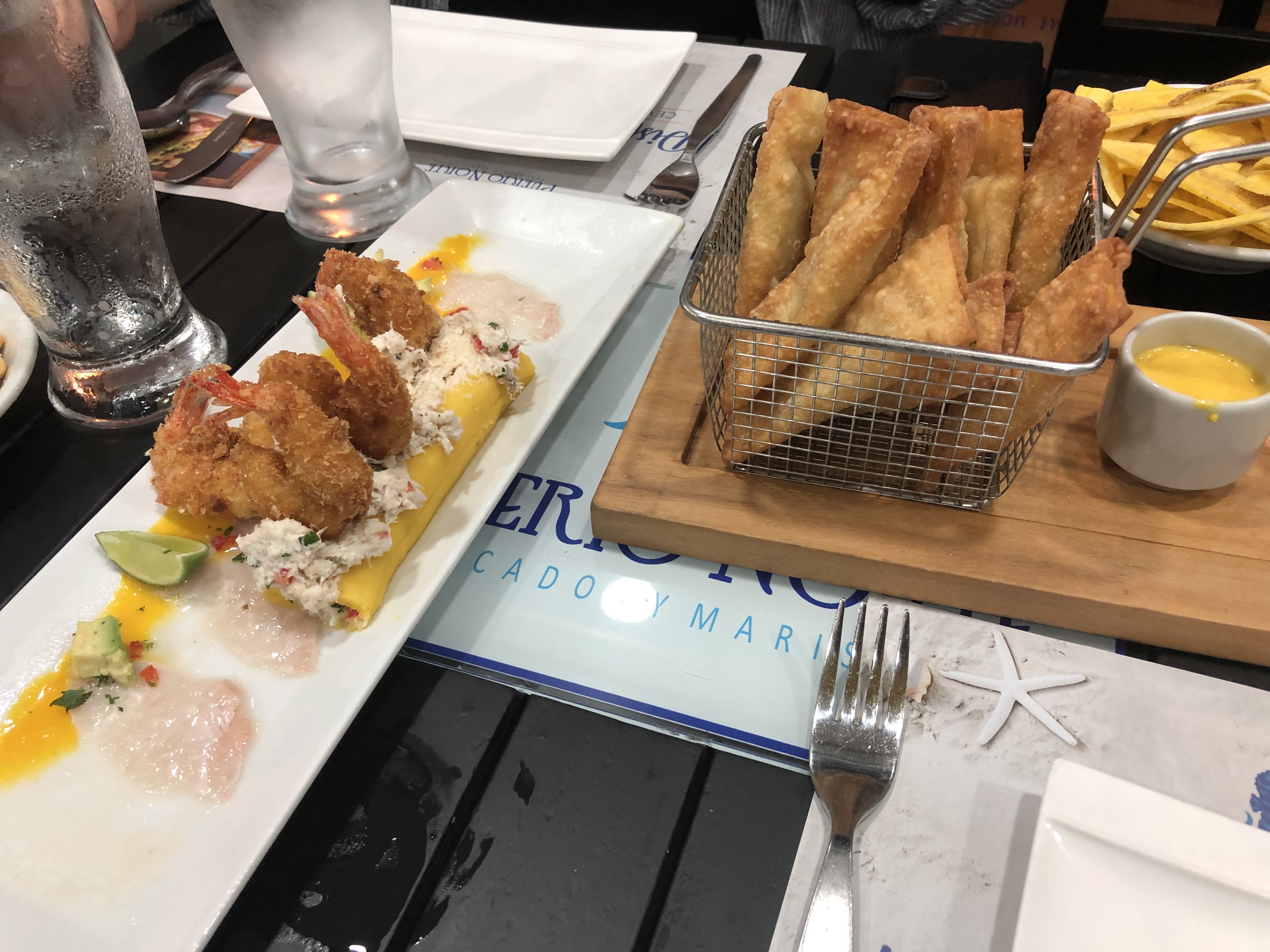
The next day we set off on the walking tour from the hotel. It was atrocious…the guide basically said “hello friends, follow me” and began to walk past everything that looks interesting (without a word)… about 2 kilometres later in the main square he handed us off to another guide and was never seen again. Despite his indifference, the city sights were good and my opinion of Lima softened once again.


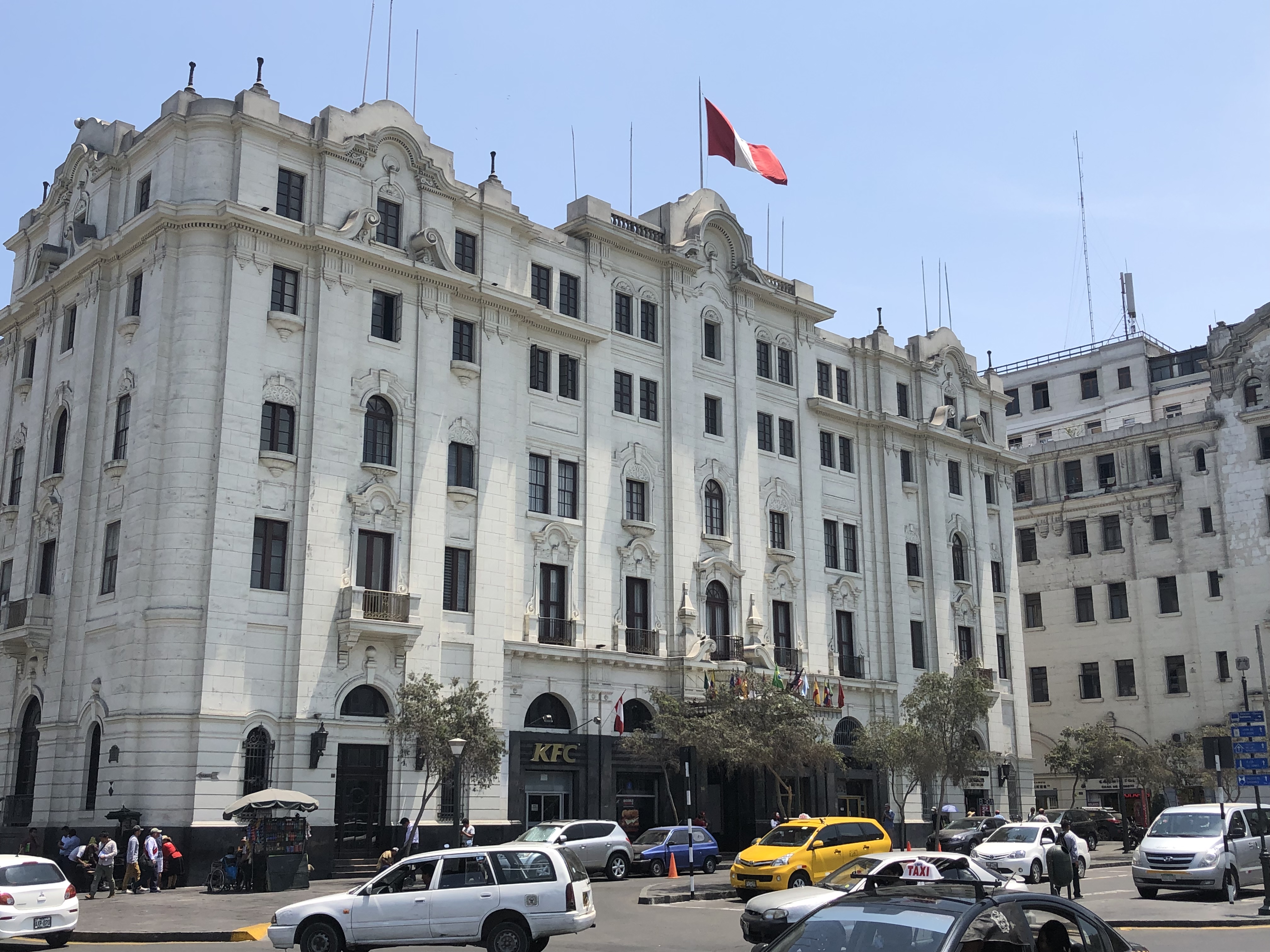
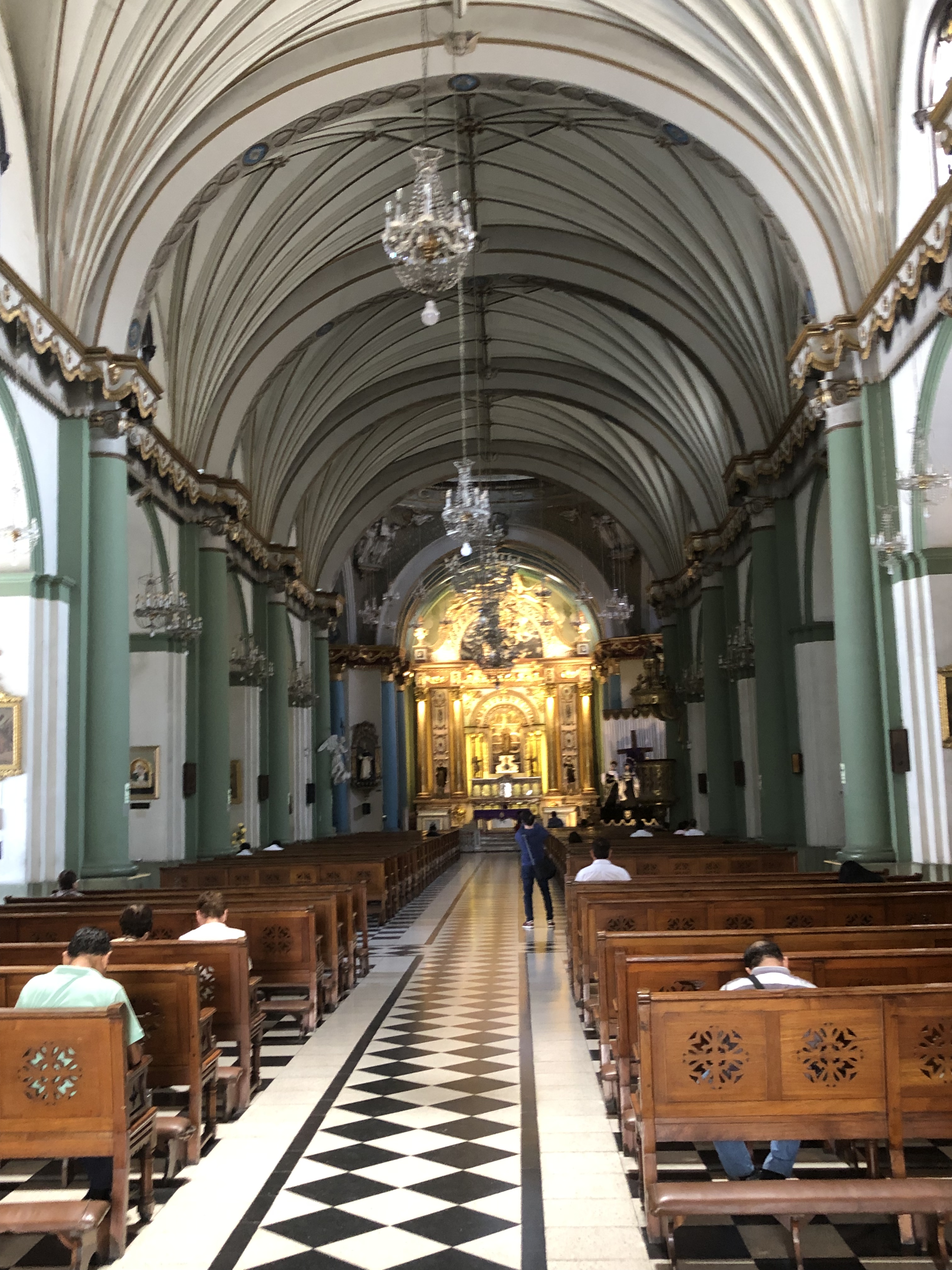
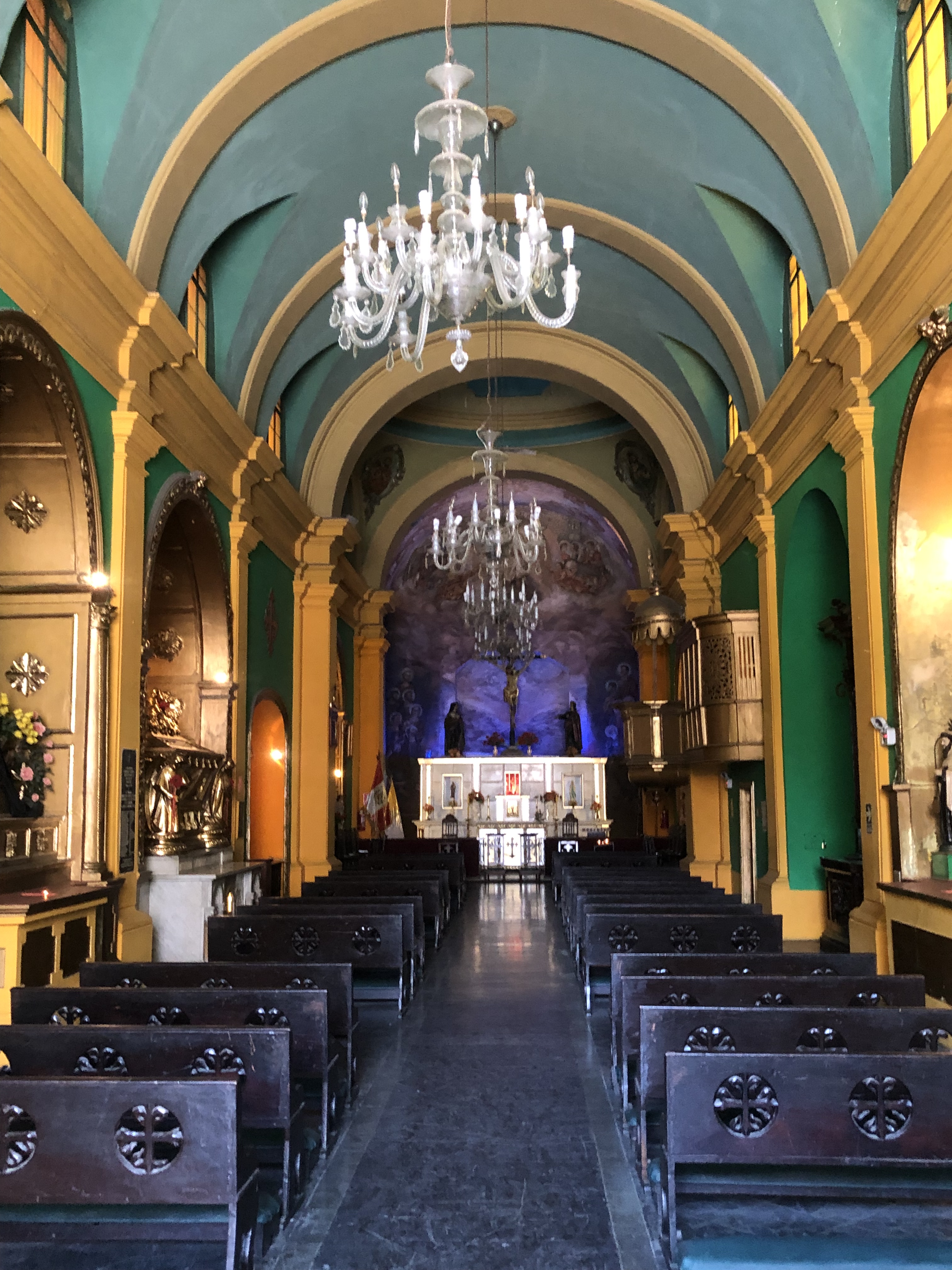
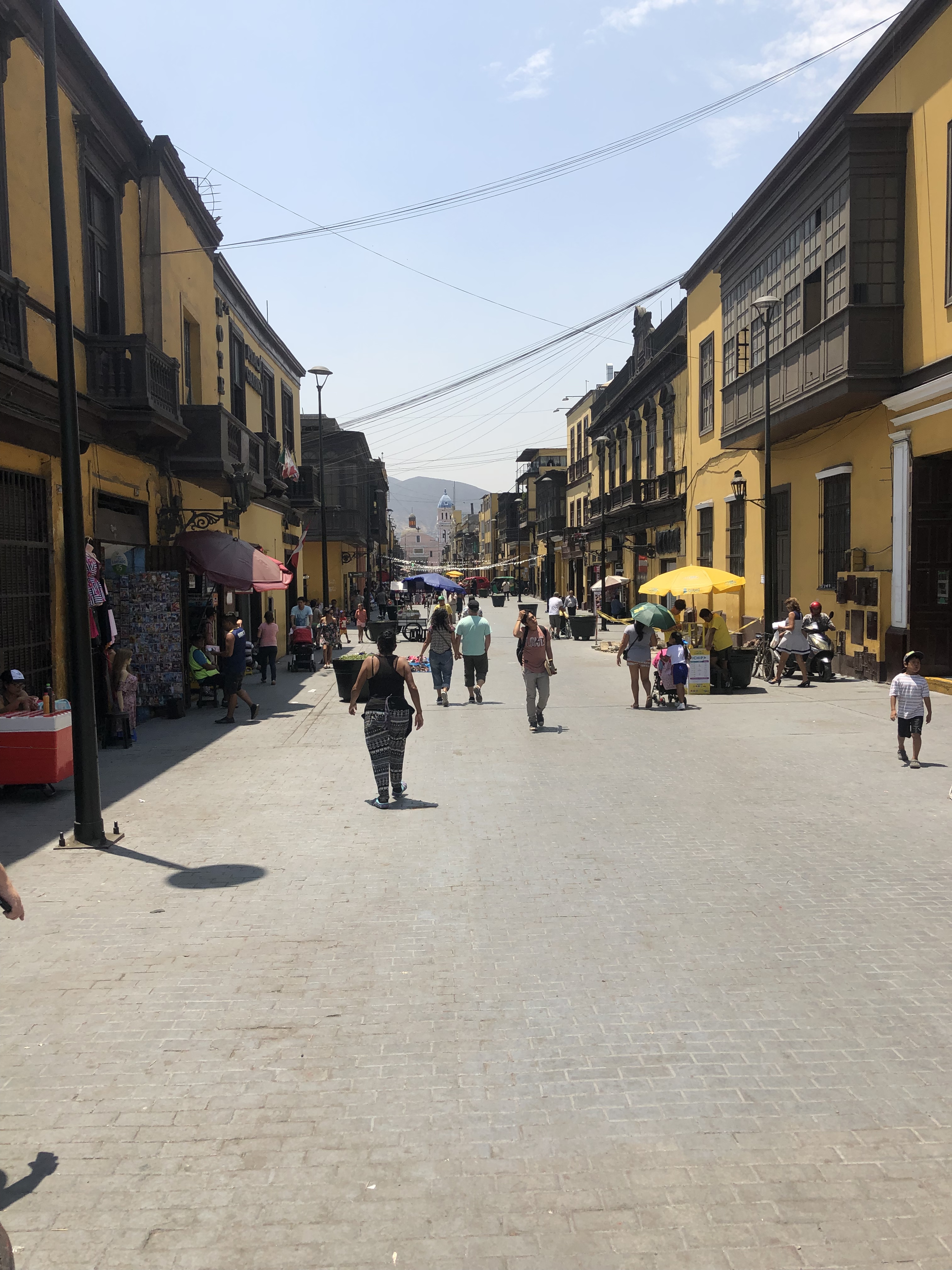
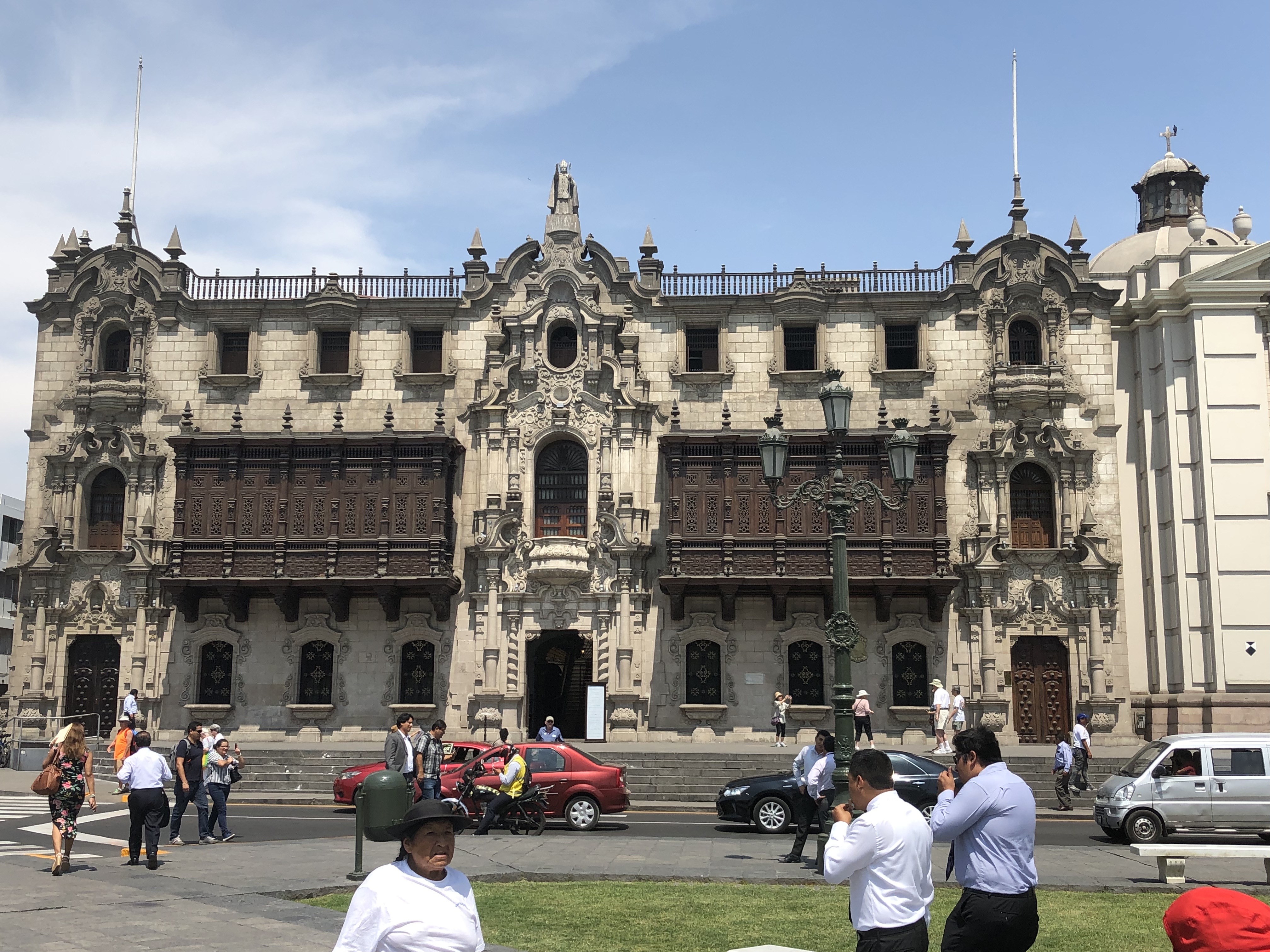
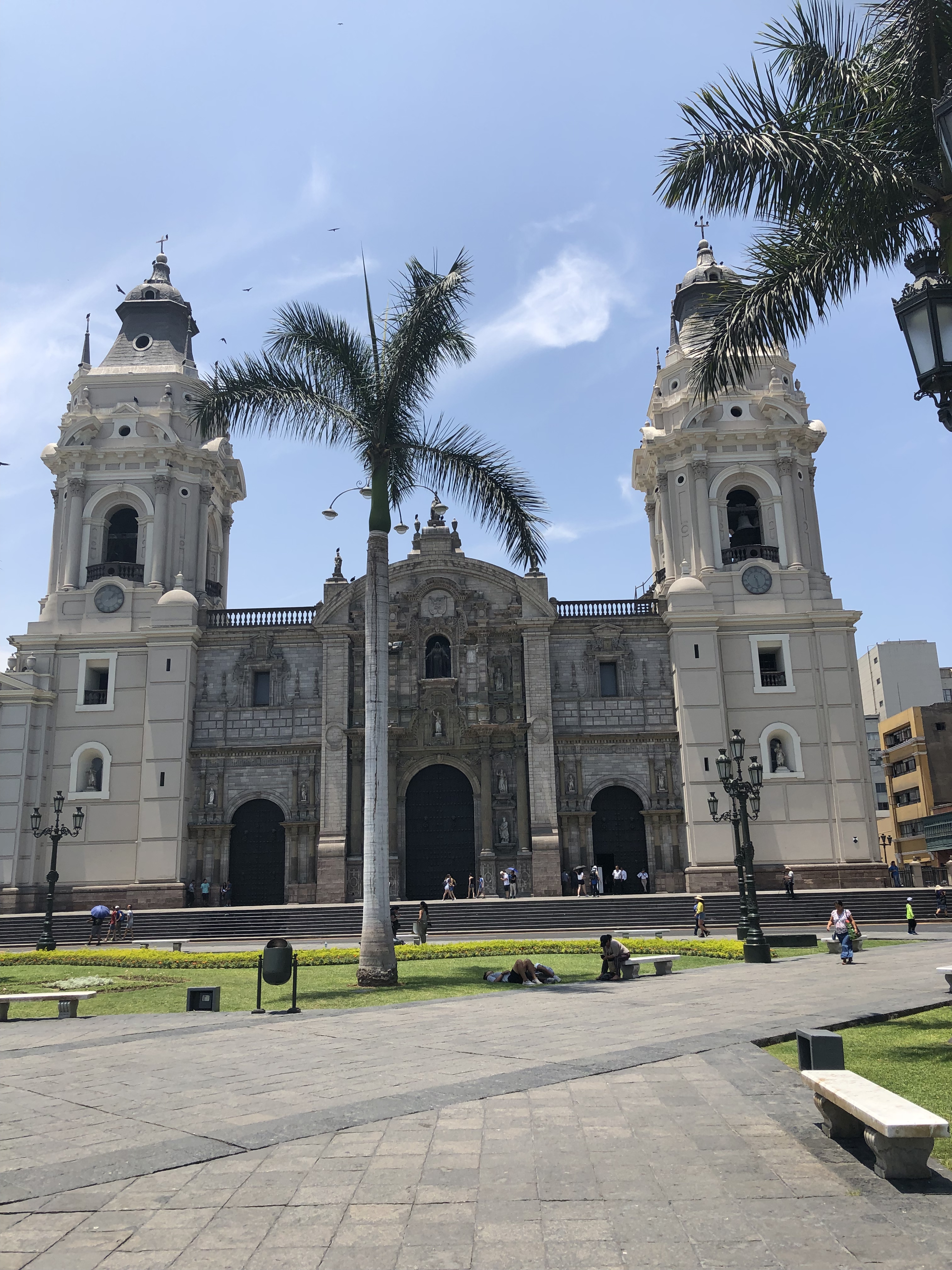
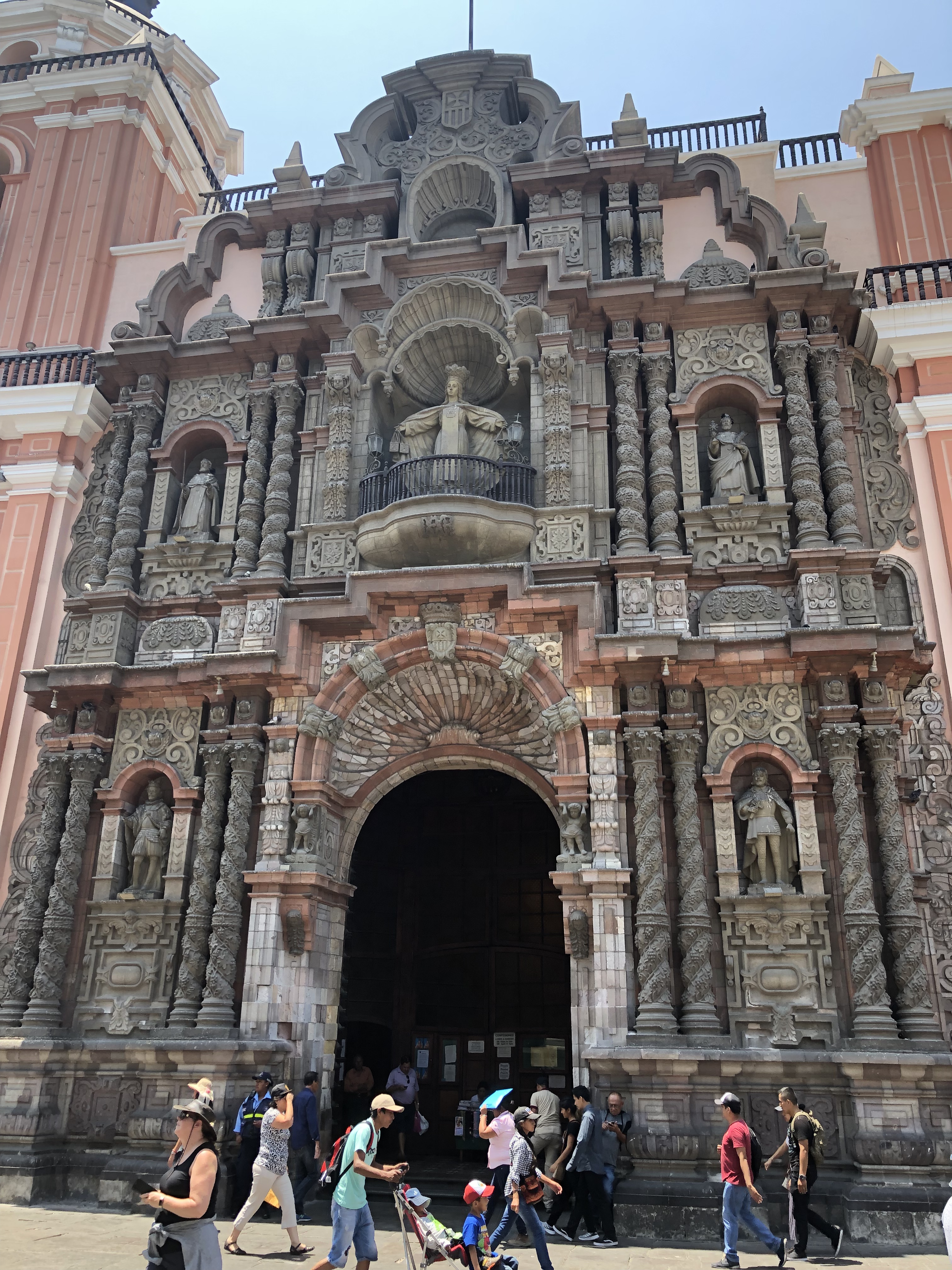
The piece that I really want to do is the street food. I have heard so much about it and have coveted it as I walked past it, but am yet to dip my toe in the water. Hopefully, today will be the day. The key they tell me to Peruvian street food is that it must be 3B
- Bueno (good)
- Bonito (beautiful)
- Barrato (cheap)
I did, as it happens, get to try some street food from two of the many carts around but was mainly foiled by my wife who NEEDED to sit down to eat like a civilised person. And after one of the generous servings (generally with change from a $20) the need to eat any more is both unnecessary and virtually impossible.
Alright…I really quite like this place…
So today became a day all about culture. We went to two museums the National Museum of the Archaeology, Anthropology, and History of Peru and the Larco Museum. They were both excellent and we got a real sense of the history dating back around 12,000 years.
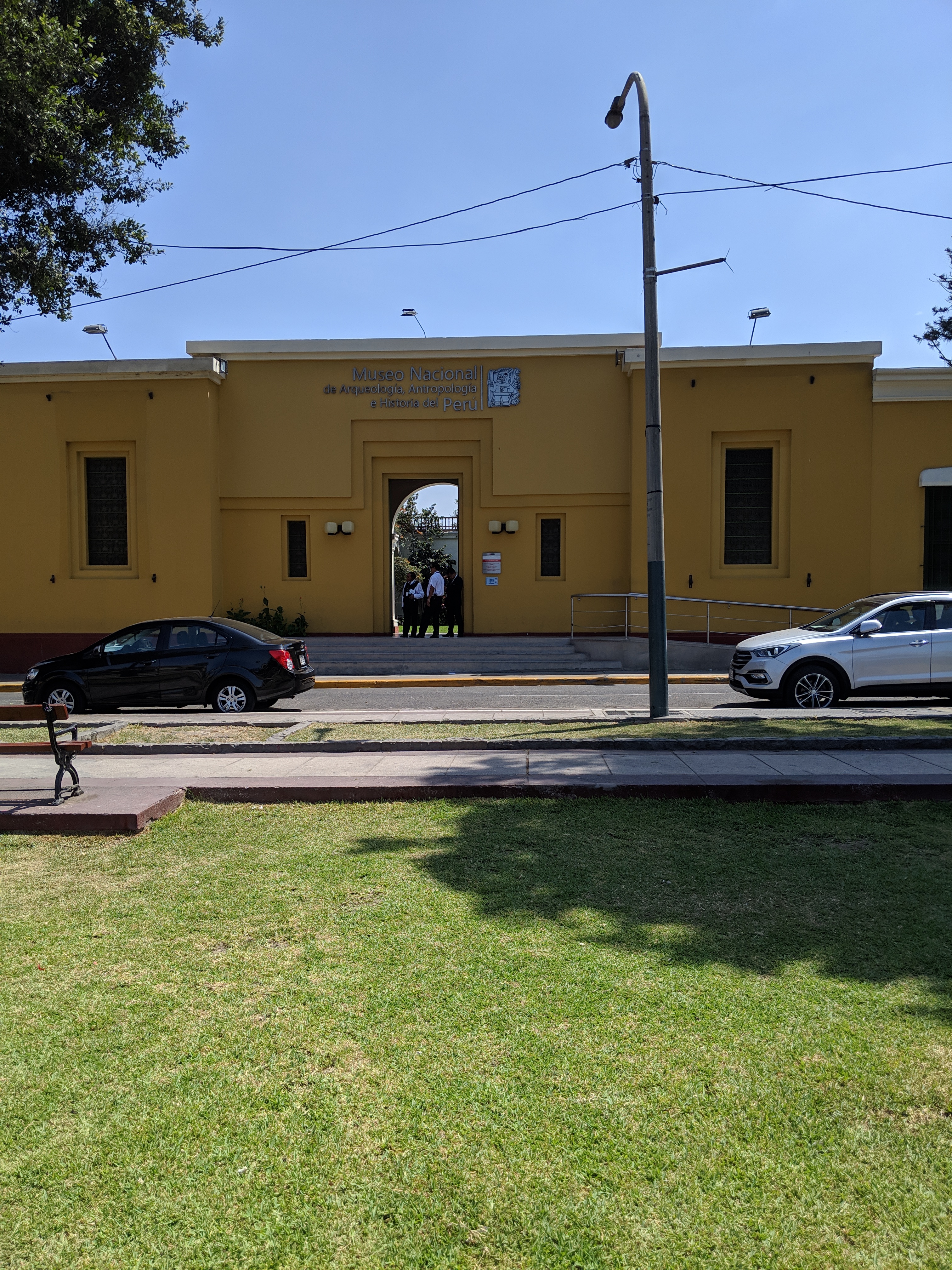
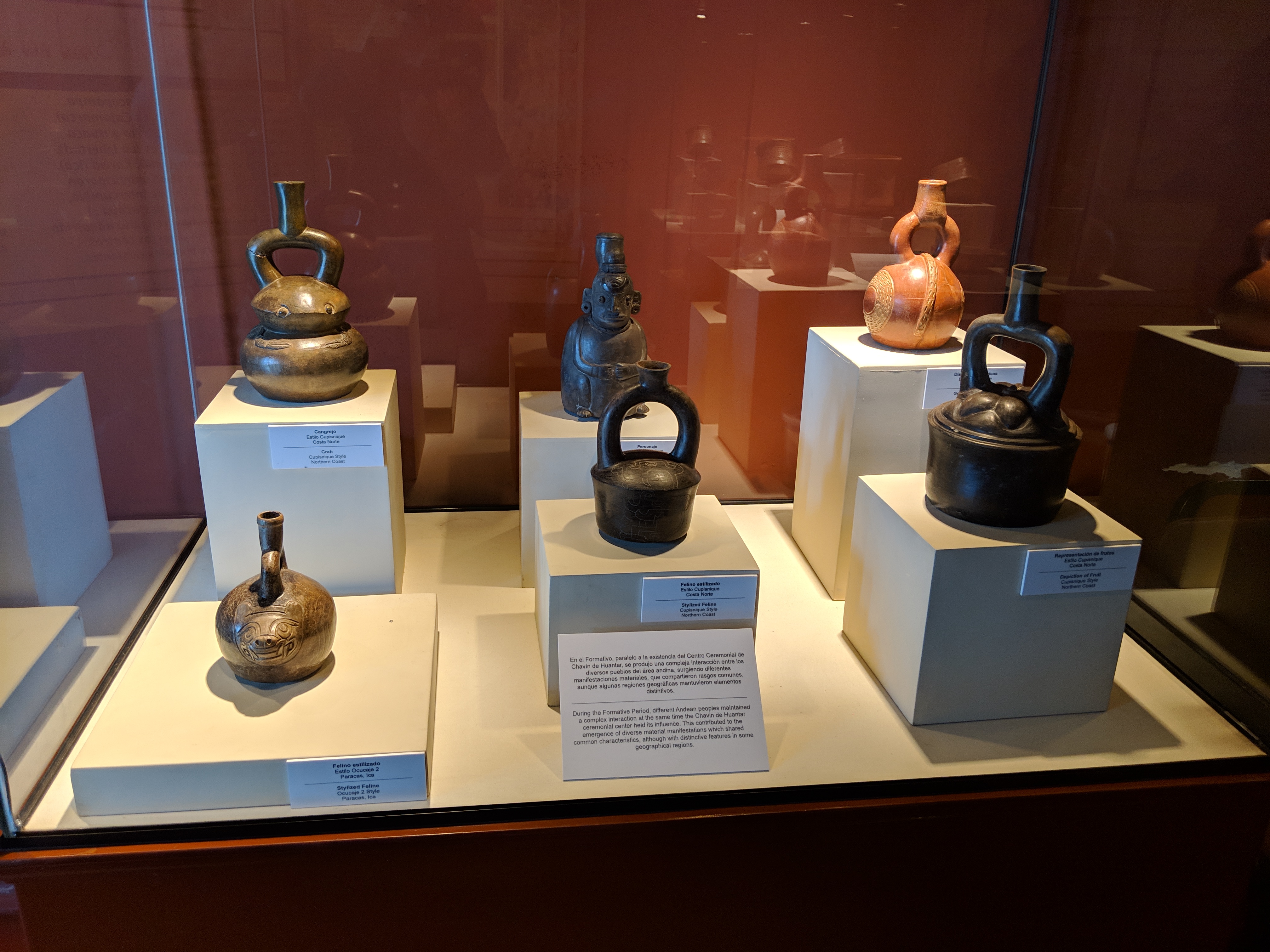
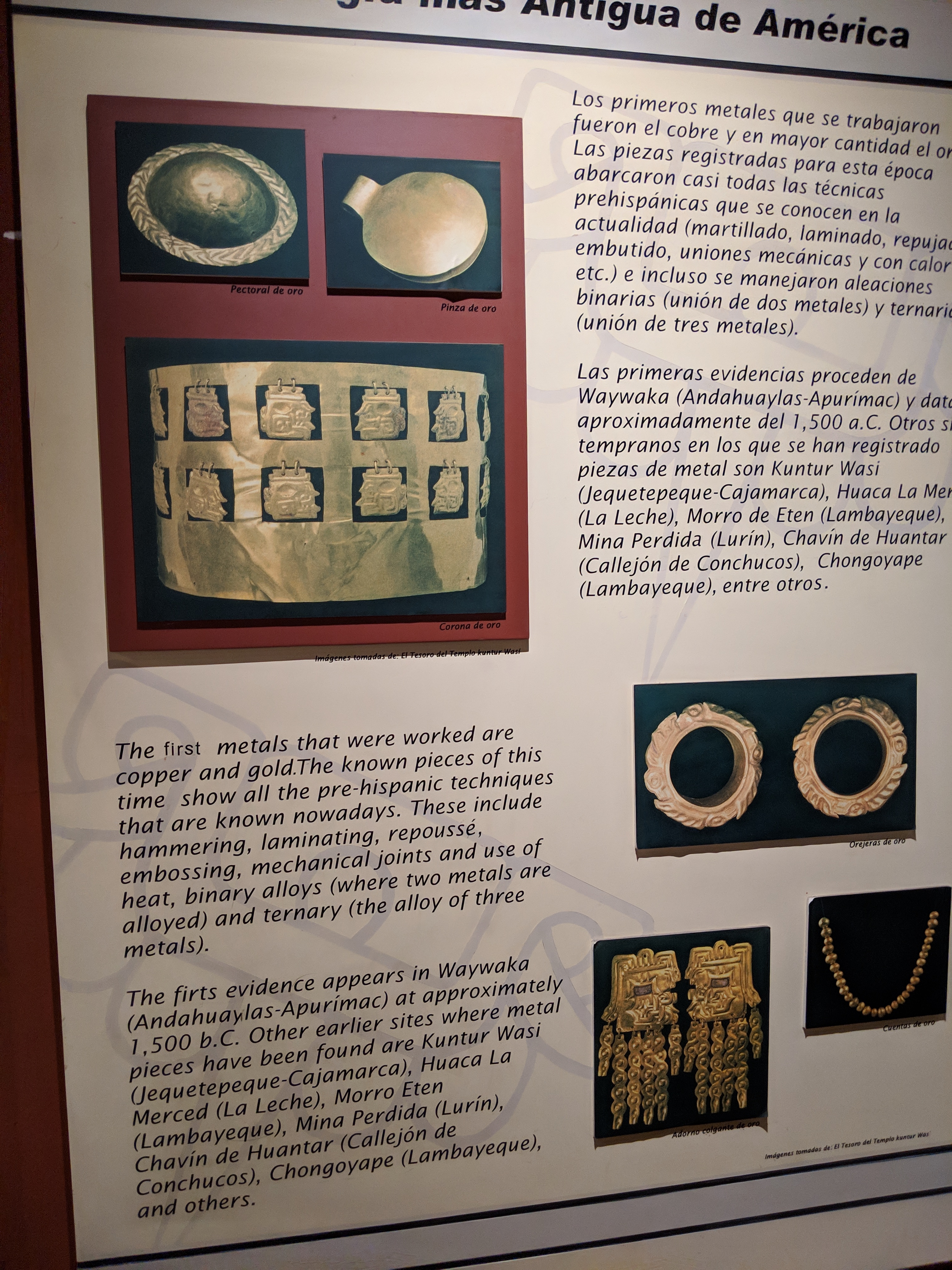

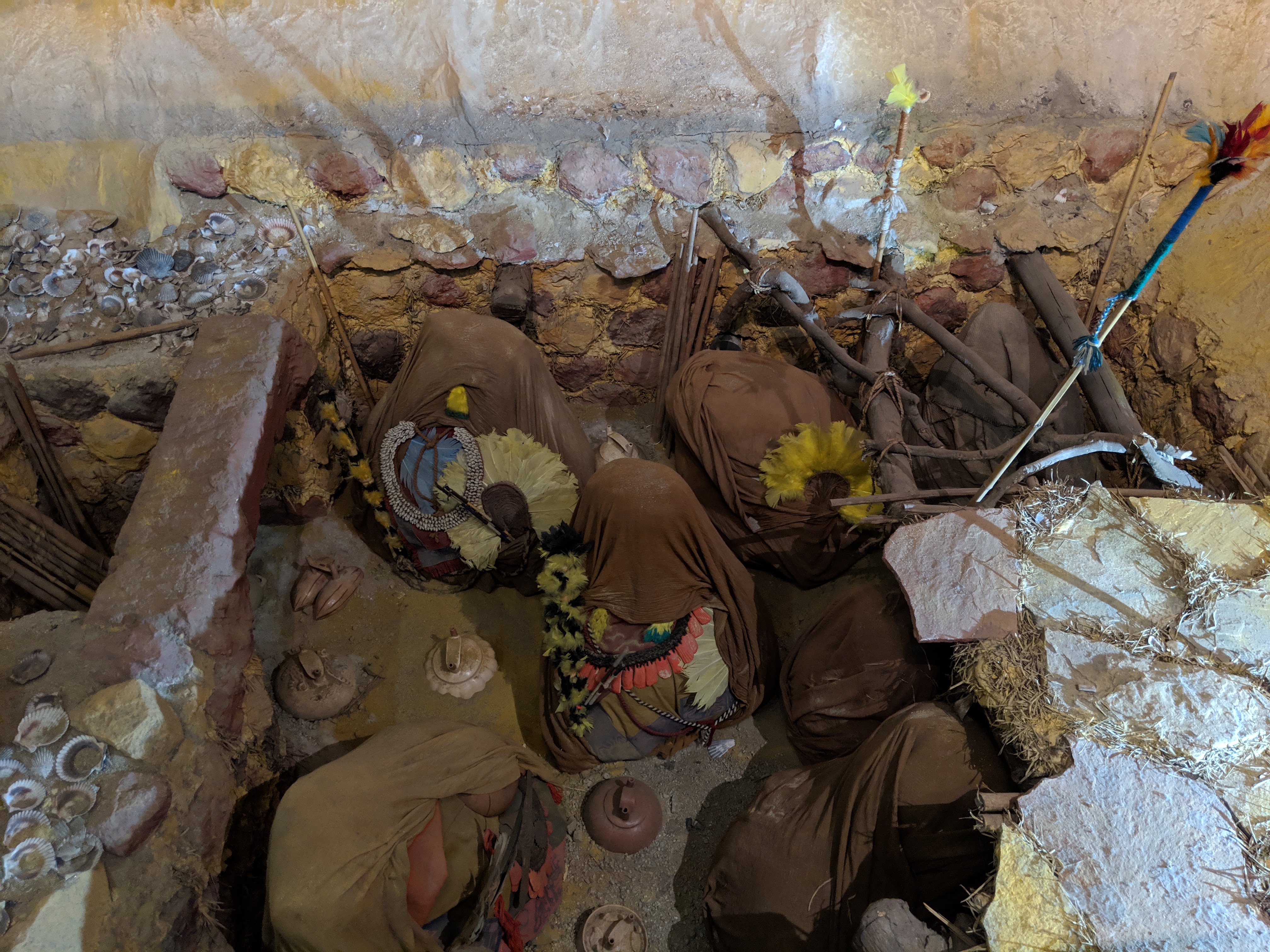

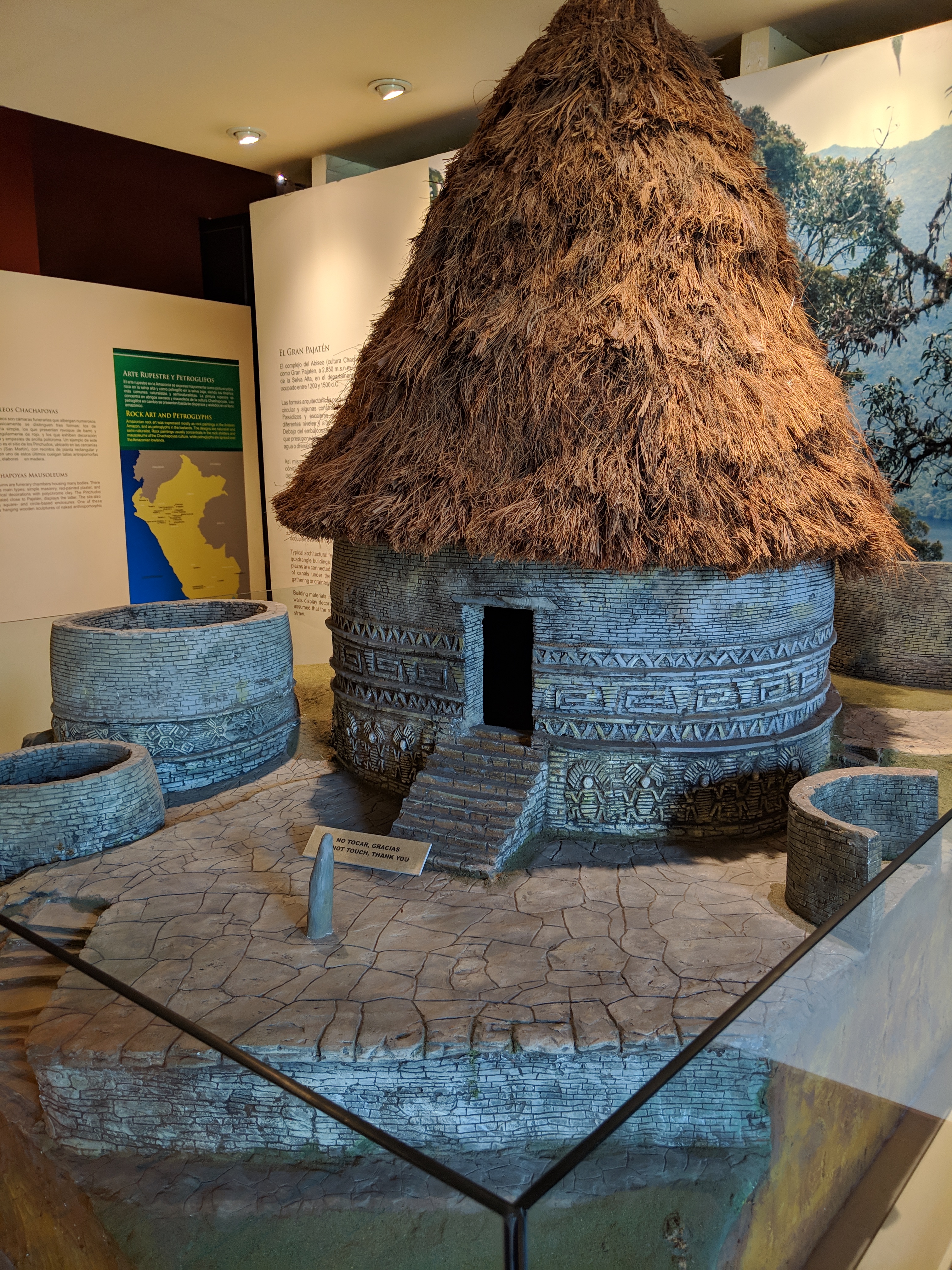
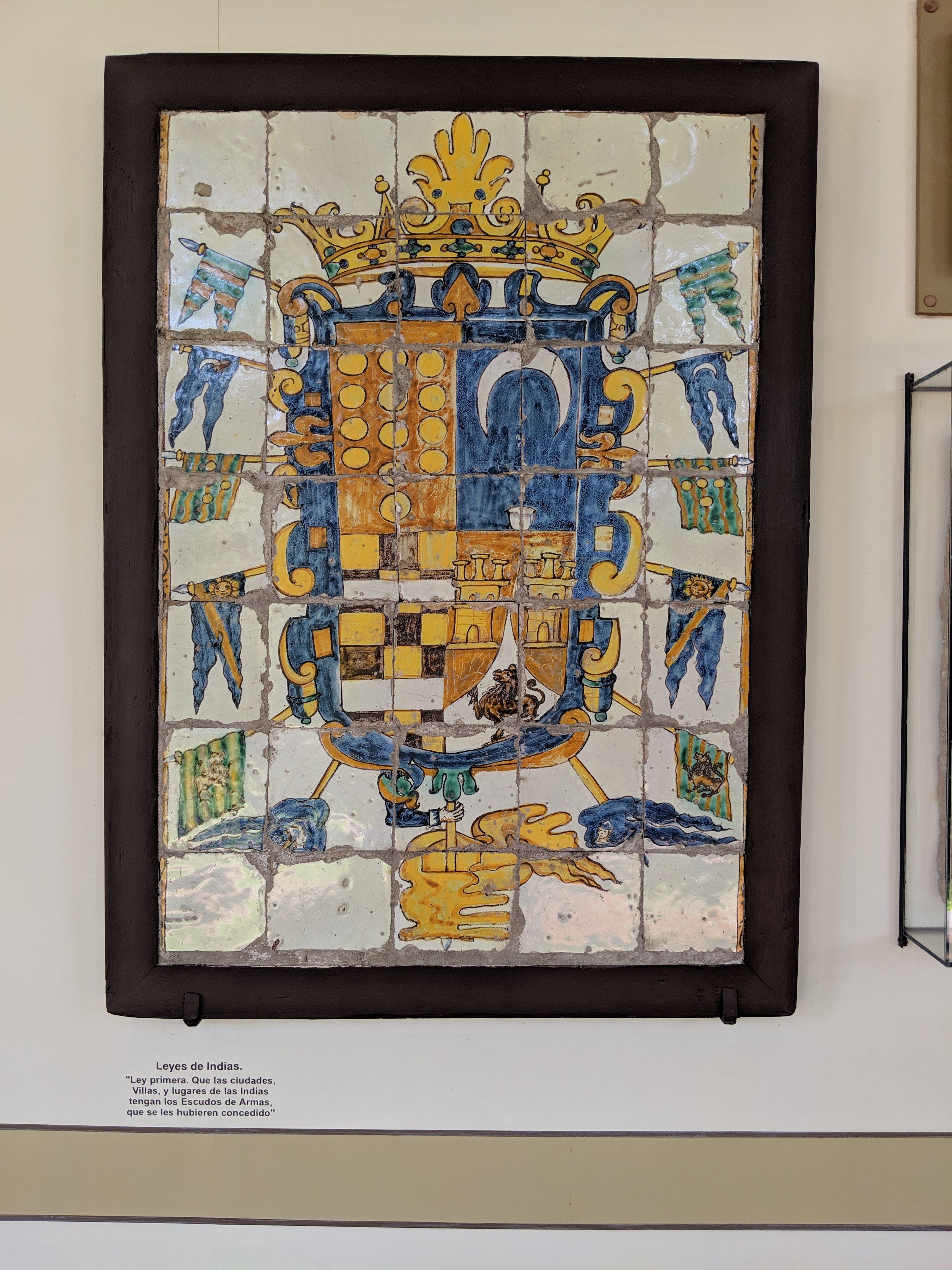
The Larco Museum was another level altogether. The first impression is stunning. It is housed in an 18th century vice-royal building that is covered in bougainvillea that are old and amazing. It is a private museum and was 3 times the price of the first one so we were highly skeptical. But we paid and entered. The intro was a 10 minute video and then the walk began. What immediately strikes you is the absolute quality of the pieces, they are virtually pristine. As you finish the tour through the actual display there is another room off to the side…this is the overflow. It is massive. A virtual warehouse of pre-Colombian artifacts that is seemingly endless. There was enough high quality pieces in the overflow area to stock another 10 museums. It is no wonder that the pieces on display were of such high quality, with such a massive range to choose from.

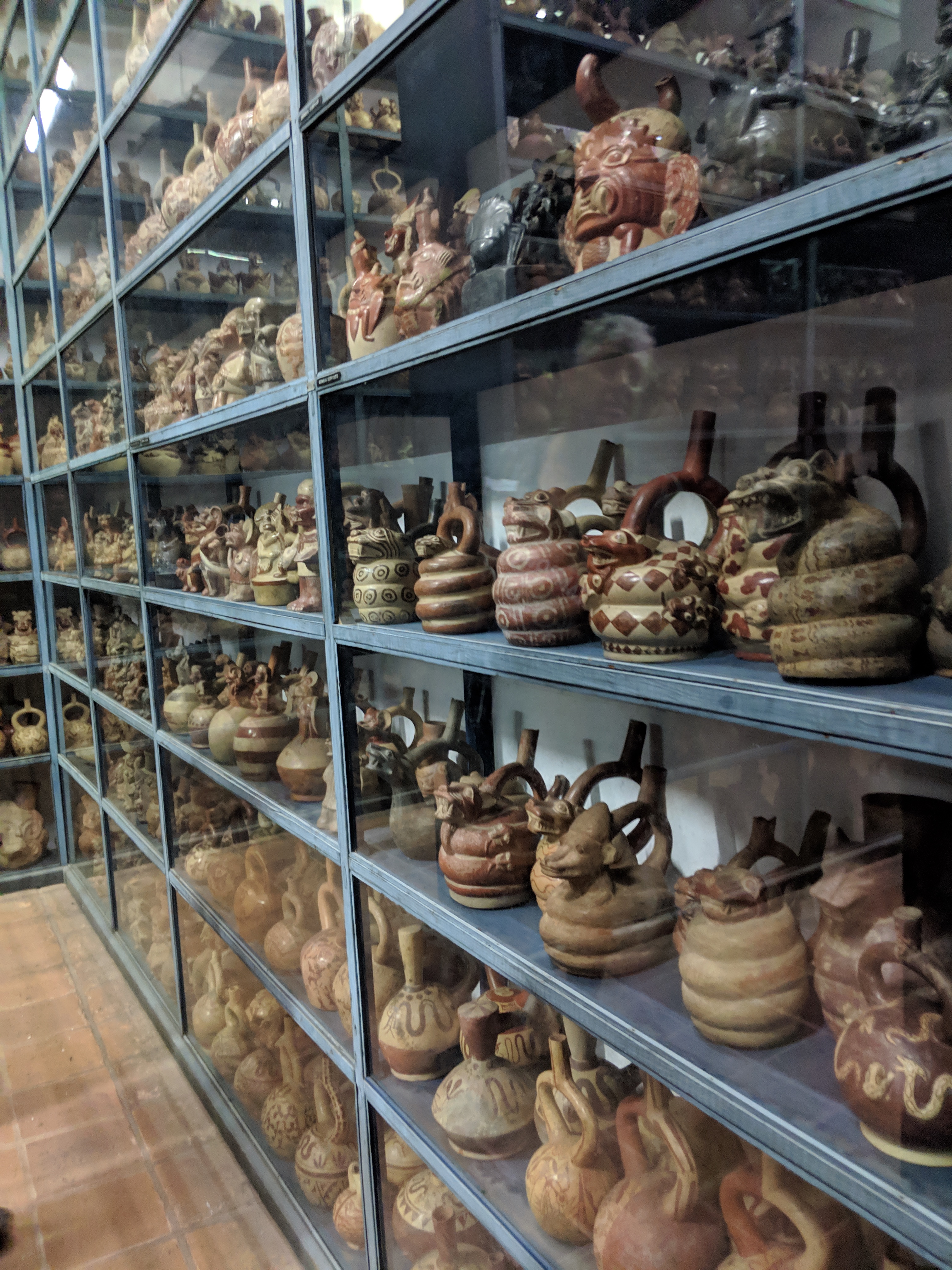
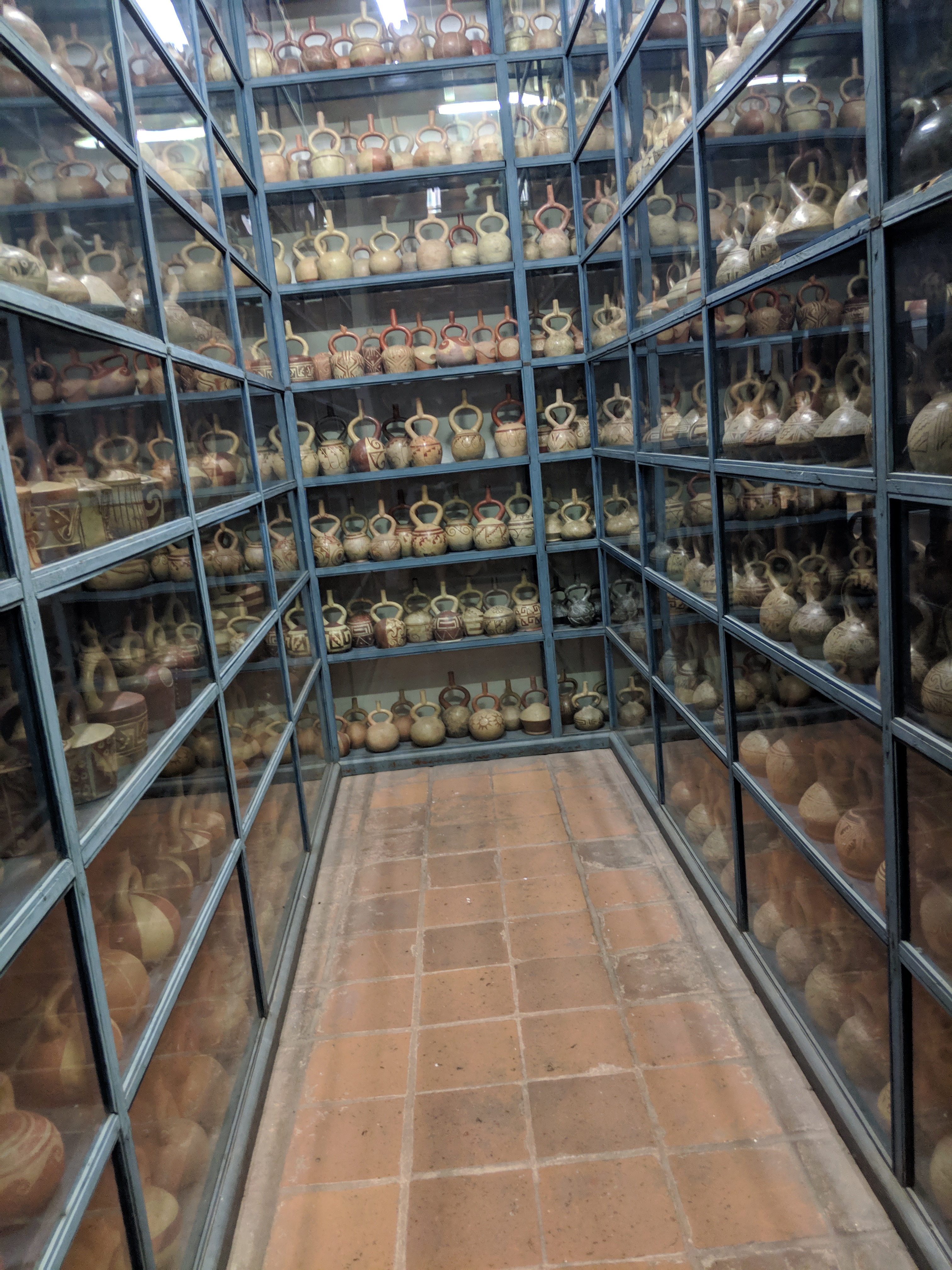
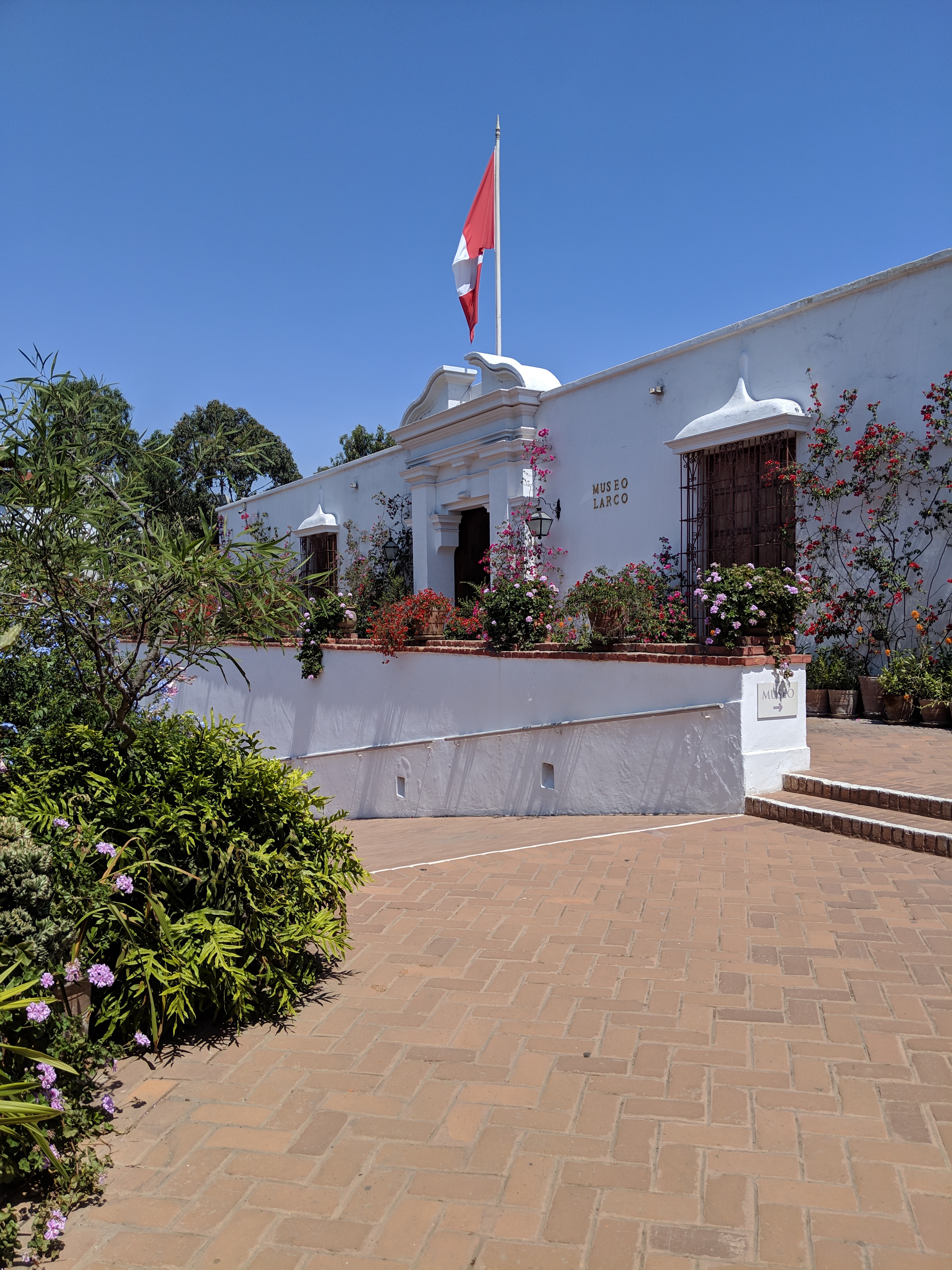
On our last day in Lima we finally bit the bullet and headed to Miraflores. It is the main tourist neighbourhood in town, that is described in the tourist blurbs as an upmarket suburb having a western feel. It is clean, safe, beautiful and is full of shops, restaurants and ritzy cafes…all those things that we try to actively avoid.
It has the ‘Malecon’ a 6 mile clifftop boardwalk starting at the marina and following the Pacific coastline. It hosts one of the world’s best paragliding spots as people launch themselves off the cliffs and for $US50 you can get strapped to one of the and launch yourself too…we did not do that.
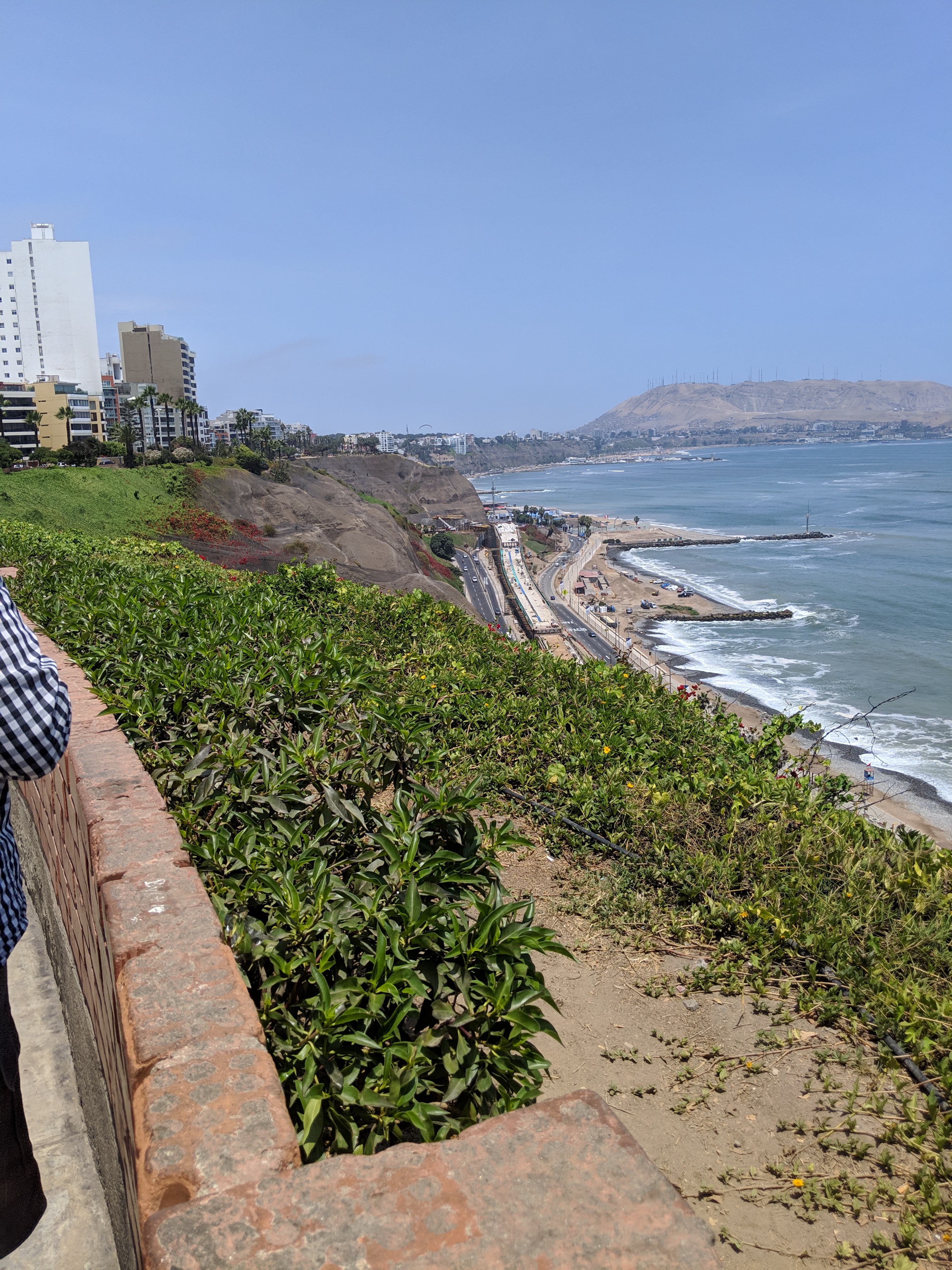
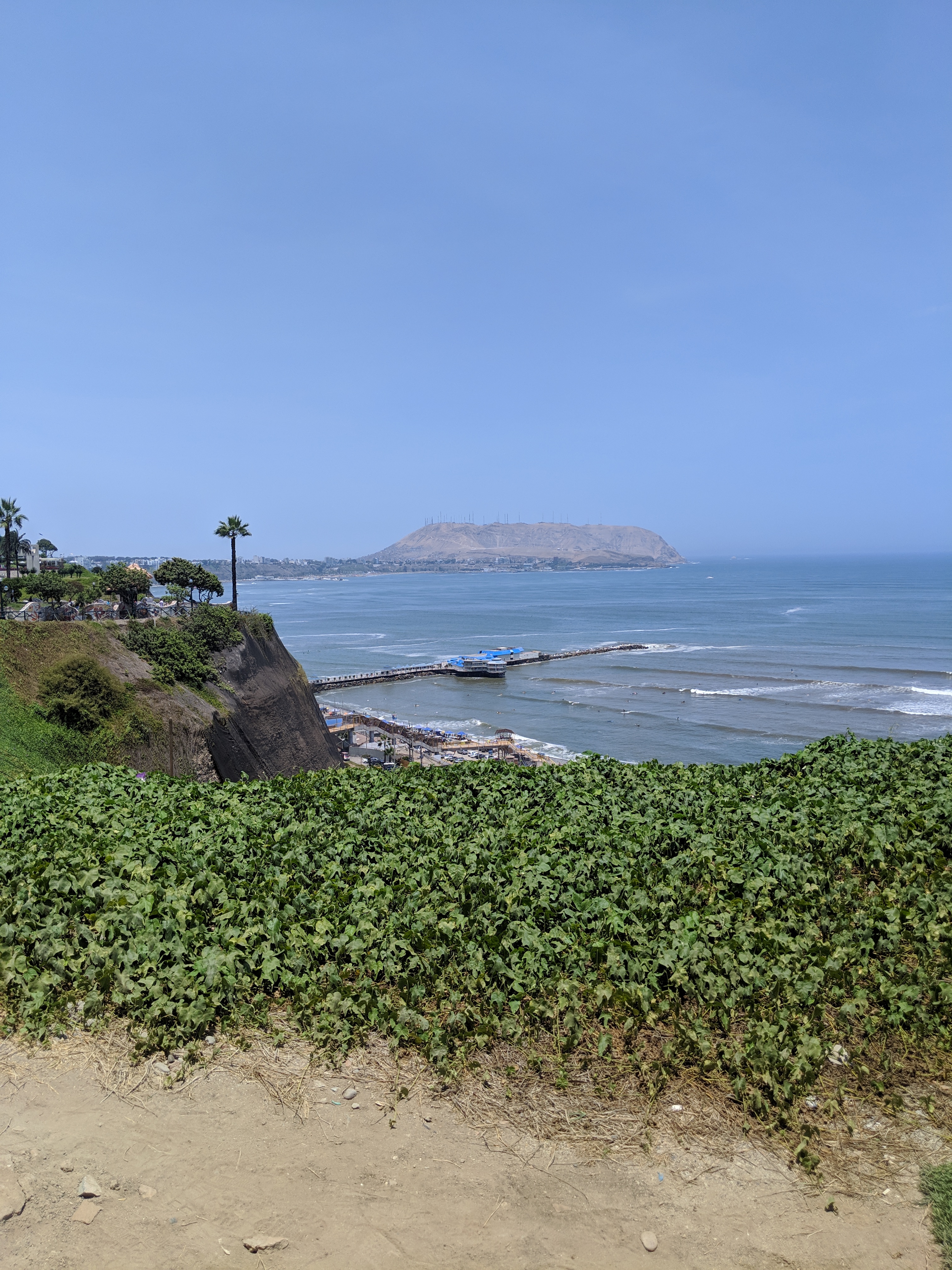
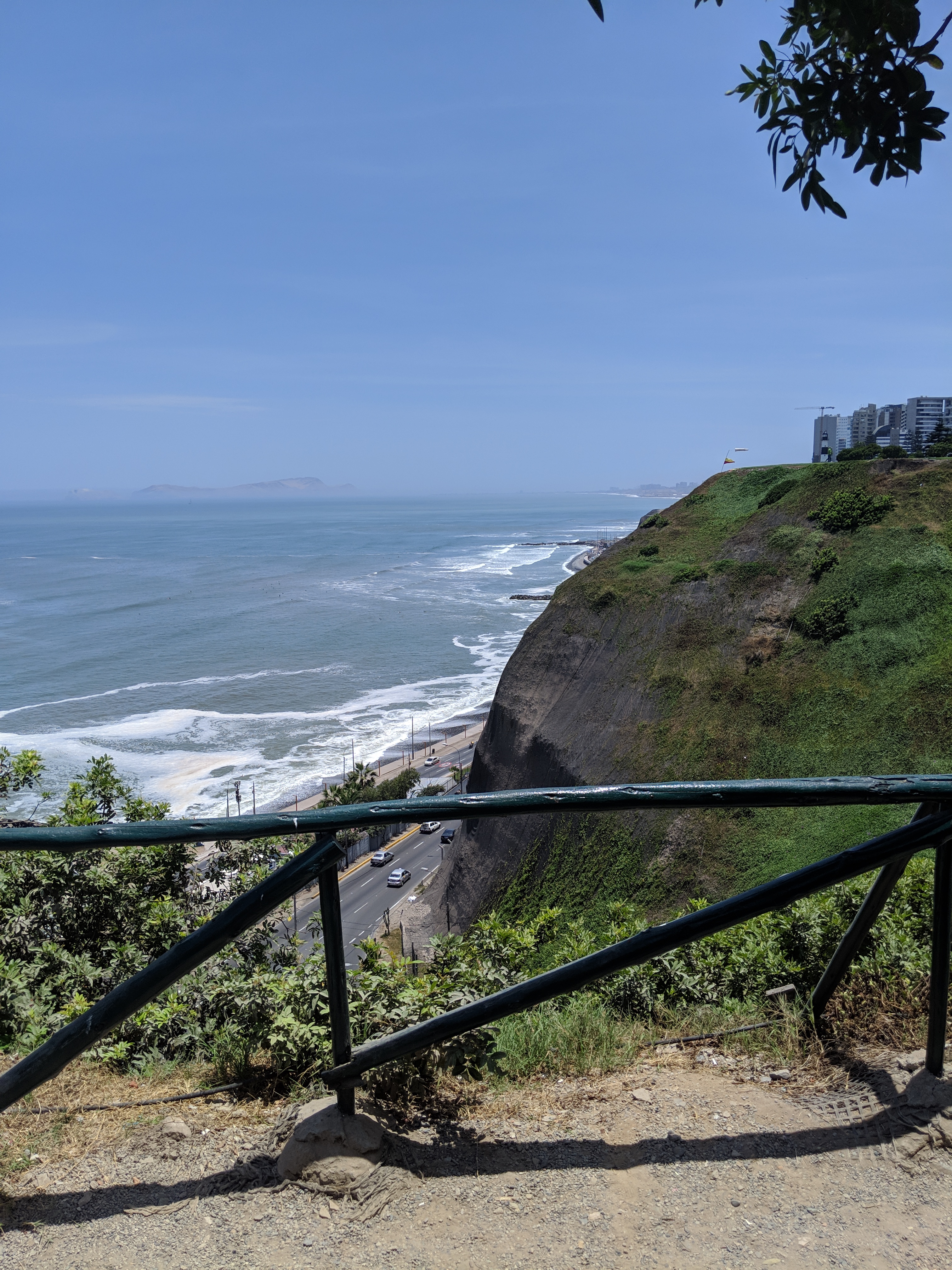
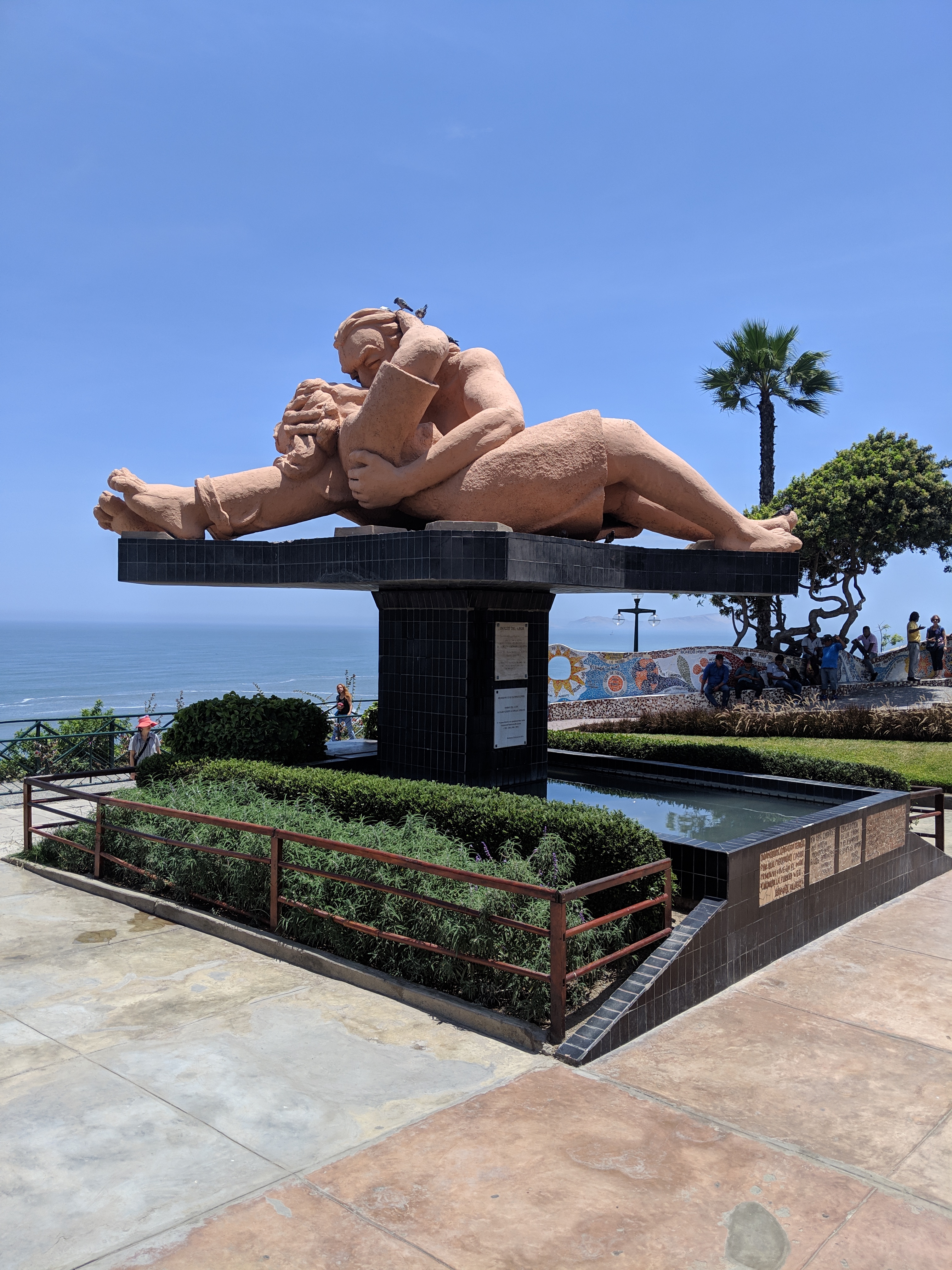
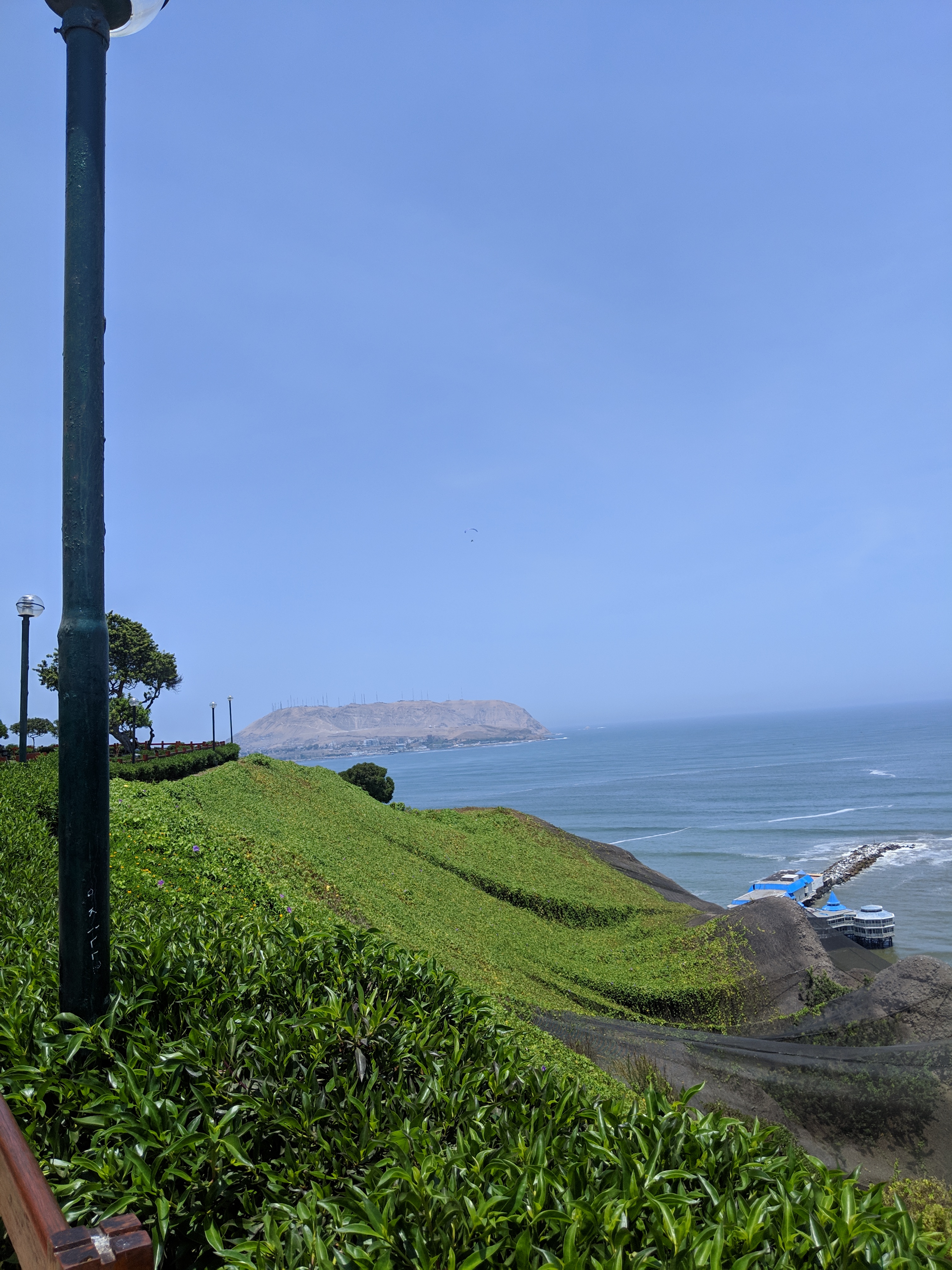
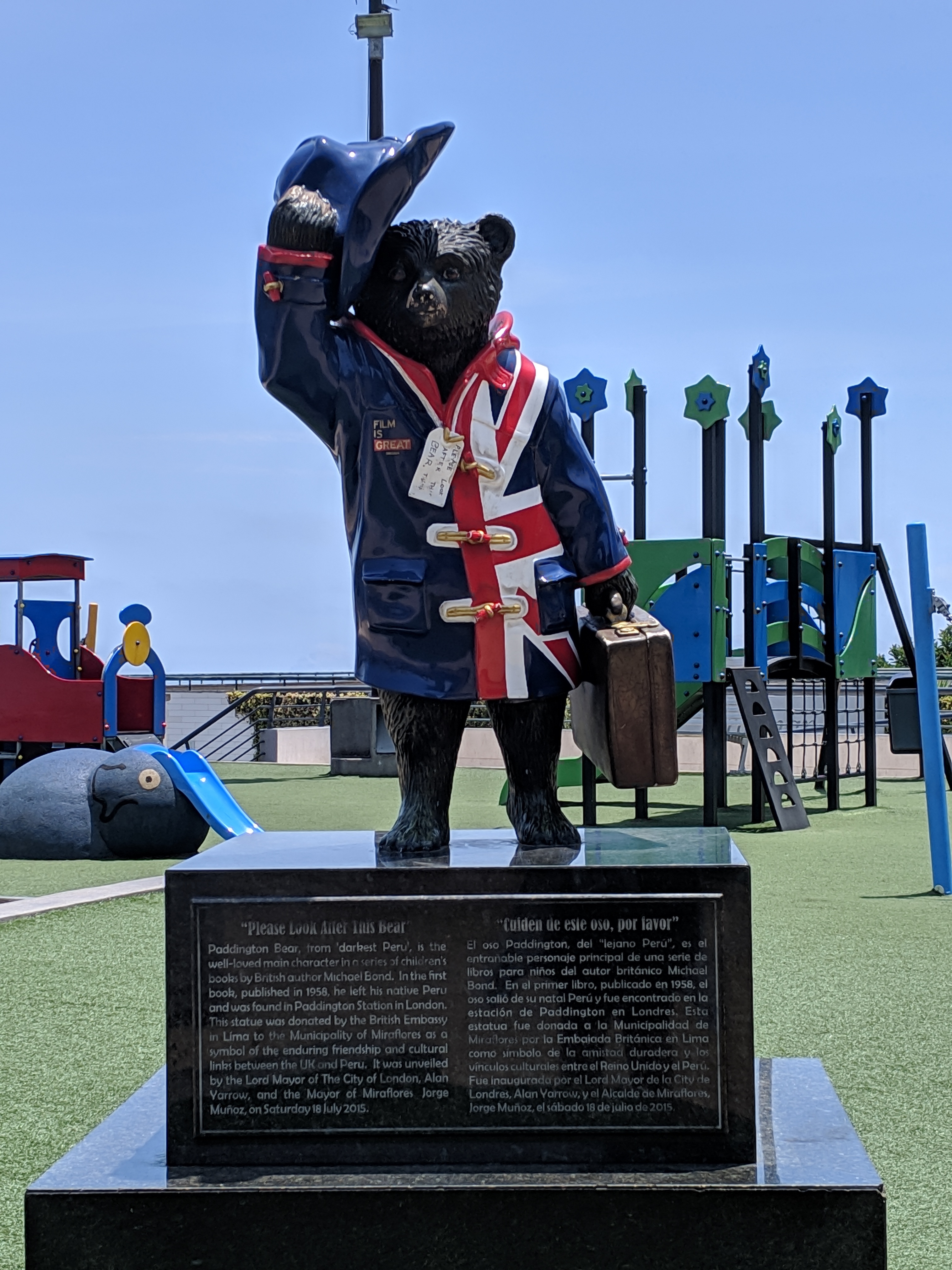
Miraflores was everything that it promised to be…it was just not for us. It was an expat enclave in the heart of Peru. All the usual chain stores and the culinary delights of McDonalds, KFC and Subway washed down by a Starbucks. And all of this for 4-5 times what you would pay in any other neighbourhood. It was pretty and the boardwalk was nice. but we were both so glad that we stayed in the centre of town rather than out here on the coast. On the up side, we did get to see the Pacific ocean from the other side. PS our side is bluer and cleaner. The one thing that surprised us was the sight of a Paddington Bear statue on the top of the cliffs at Miraflores. When you went to the plaque it said from deepest darkest Peru…and it all fell into place.
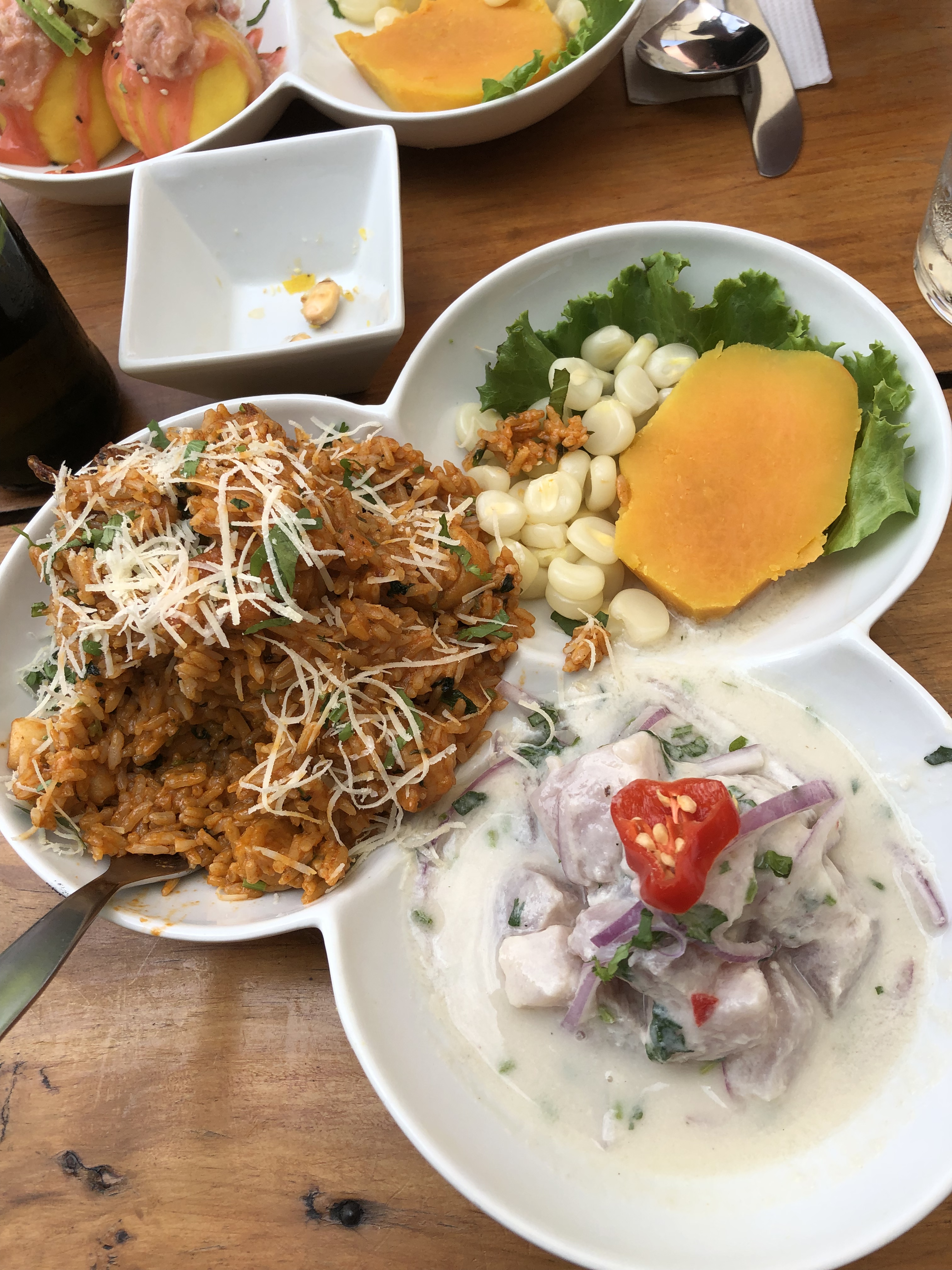

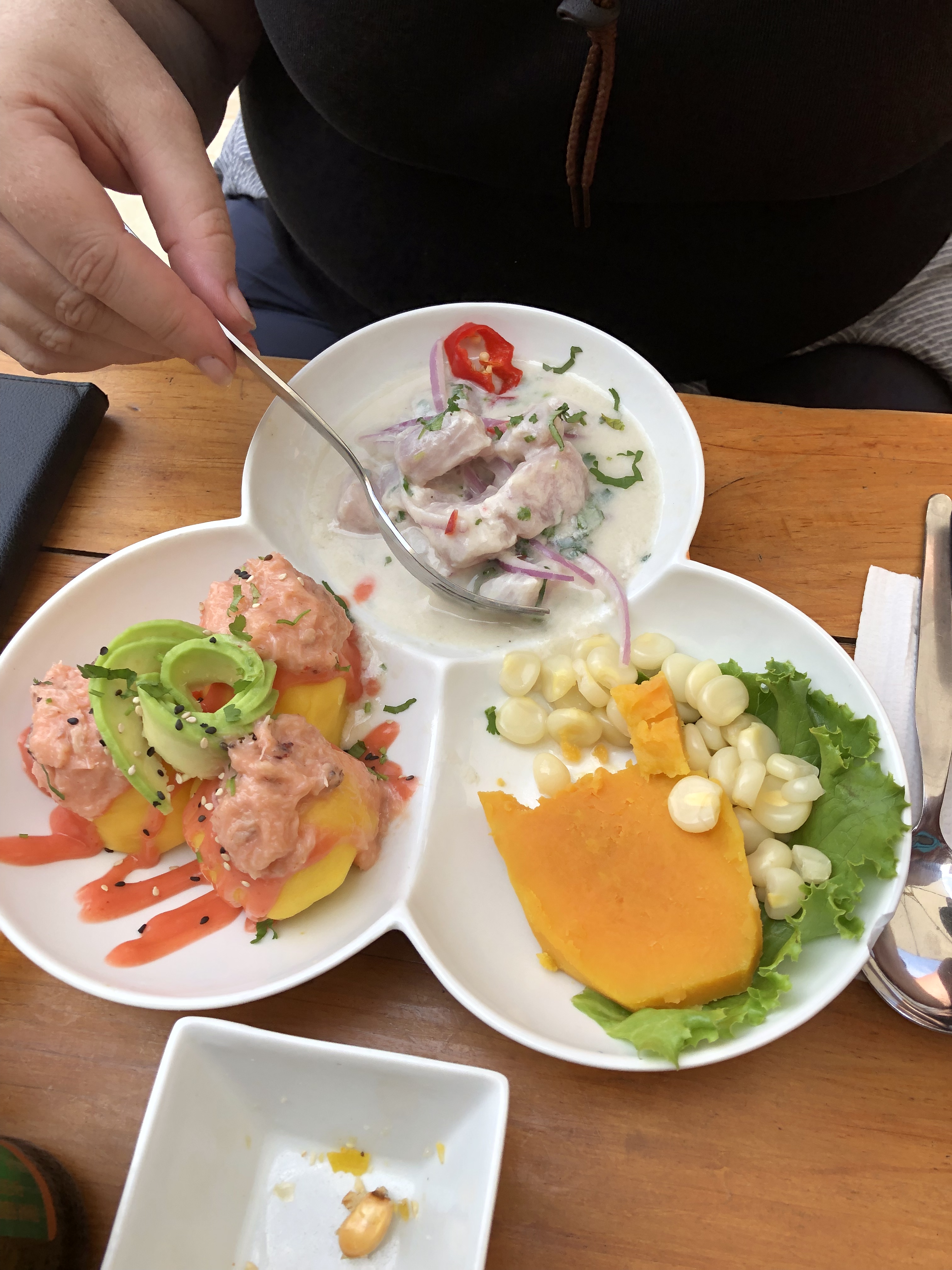
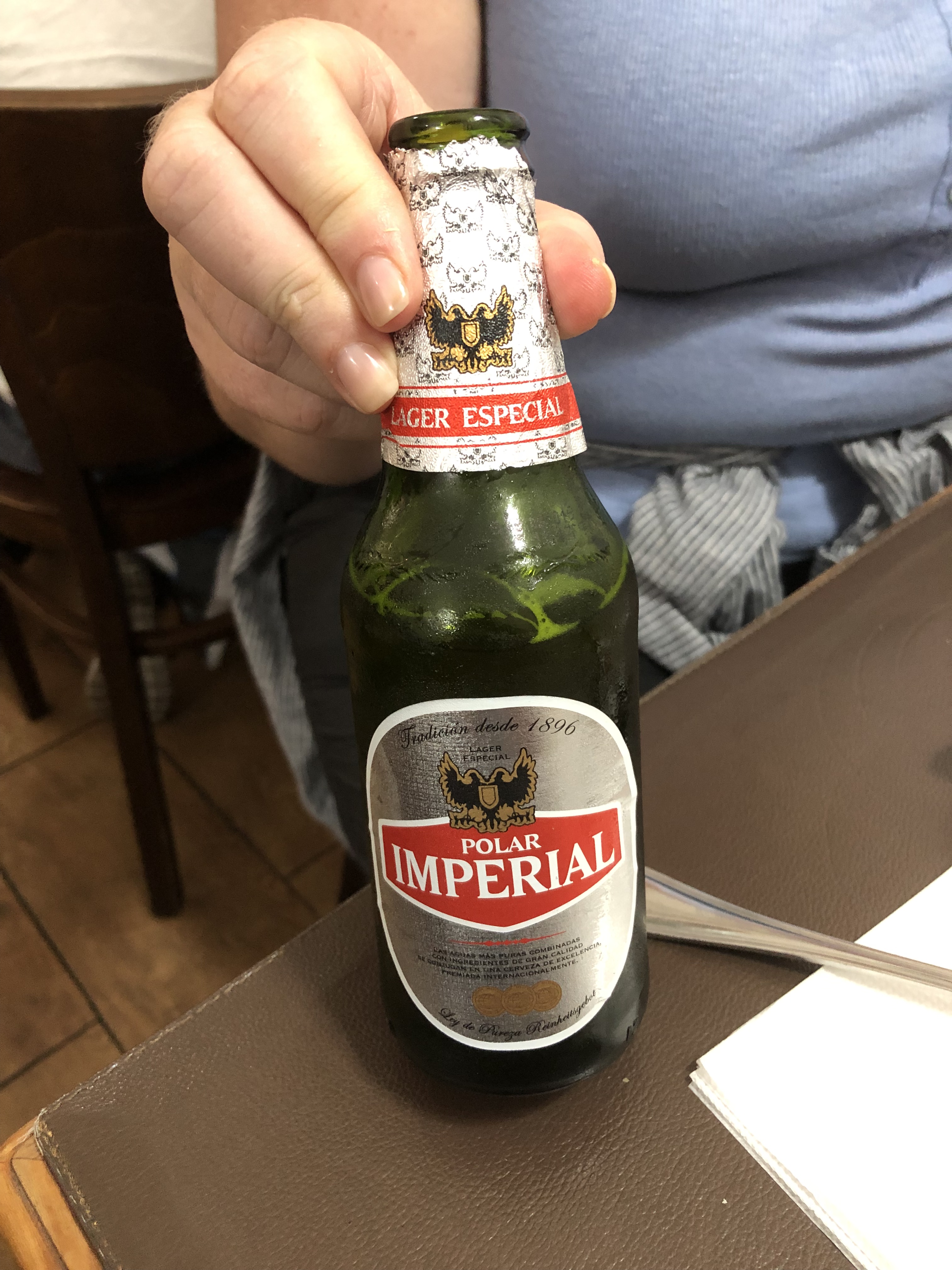
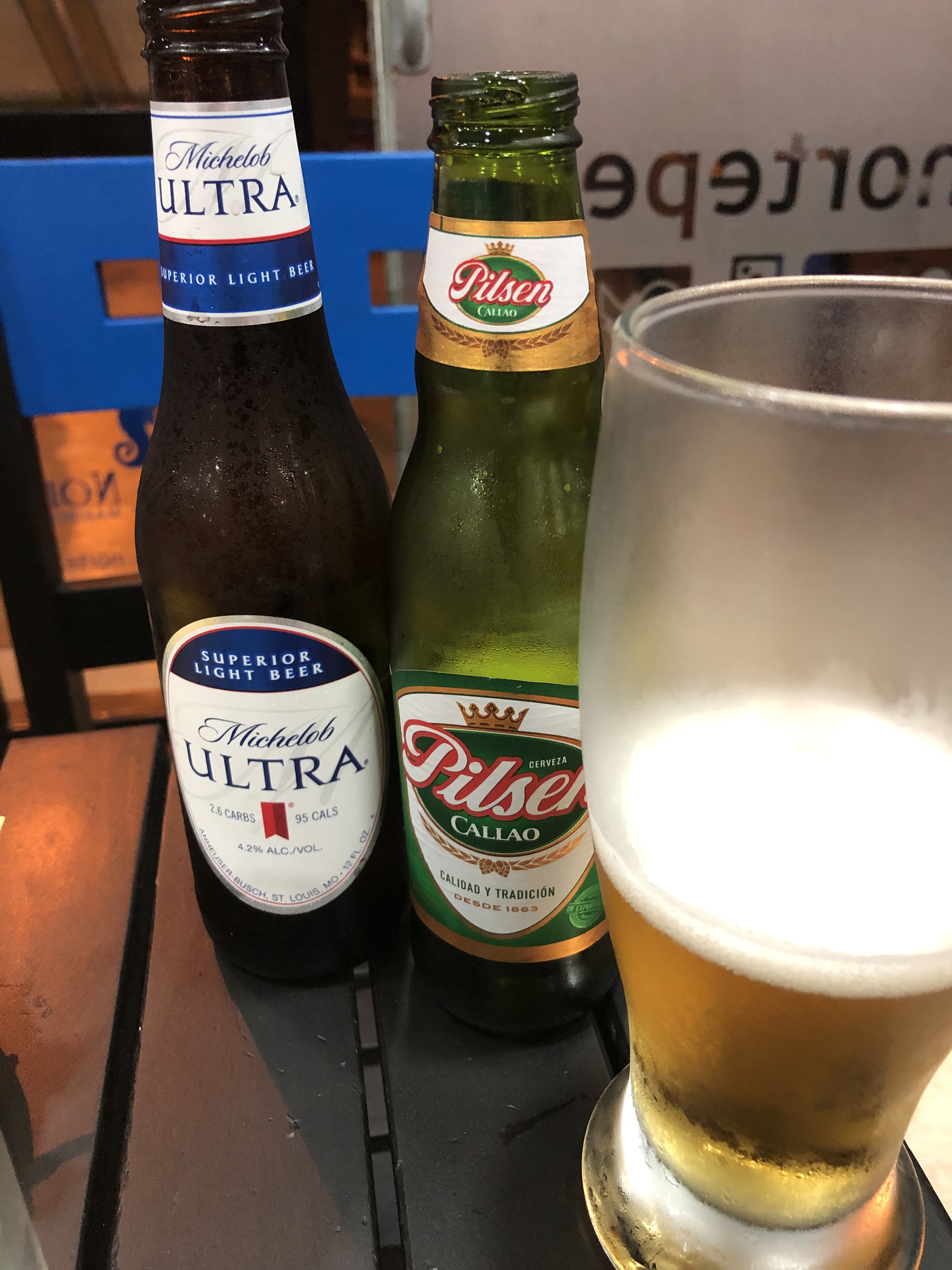
The final thing that we did on our last night was head across the road to the Circuito Magico Del Agua or the water fountain park. It is a light, laser and fountain show that runs almost every night and is quite the sight to see.
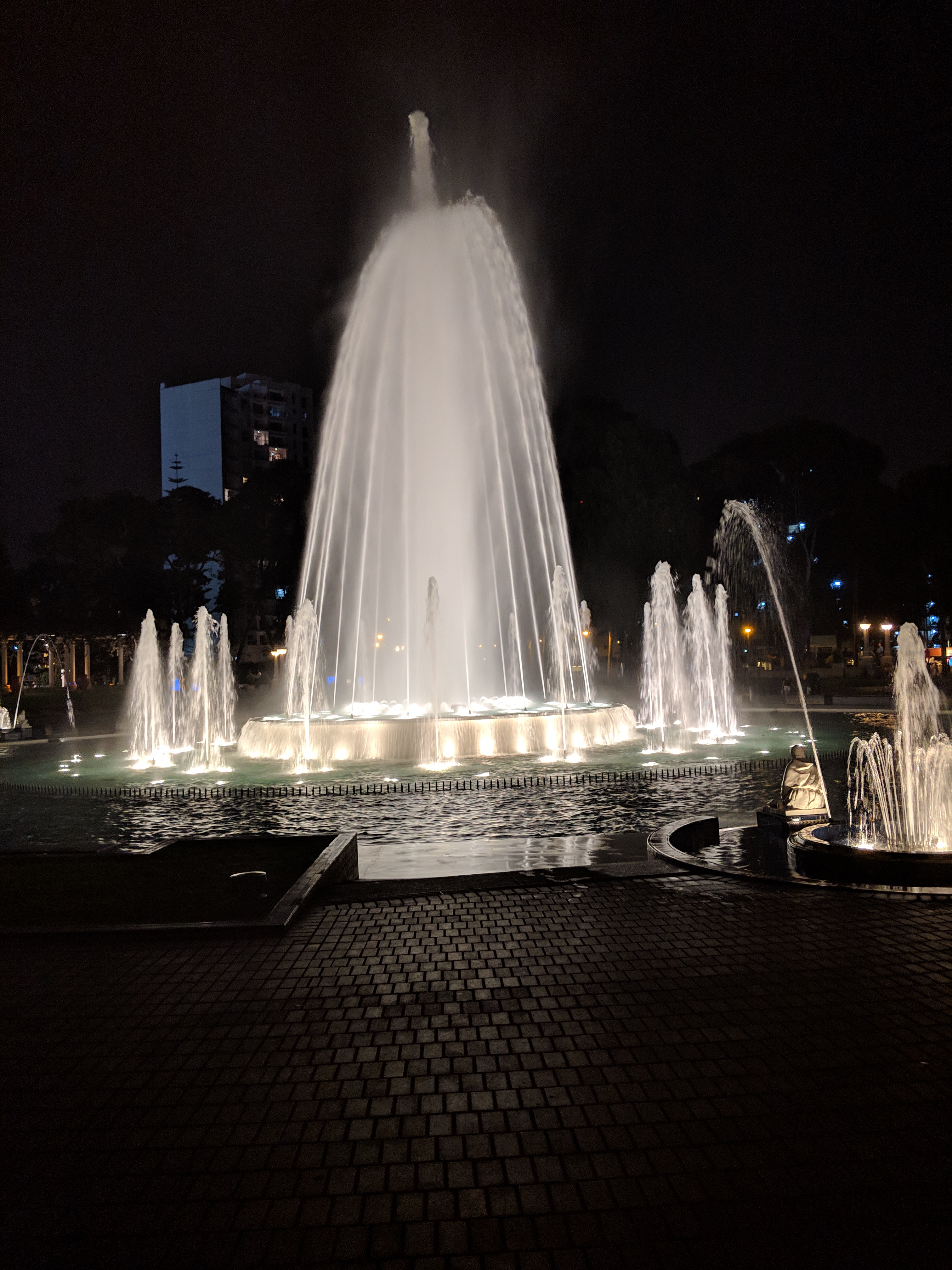
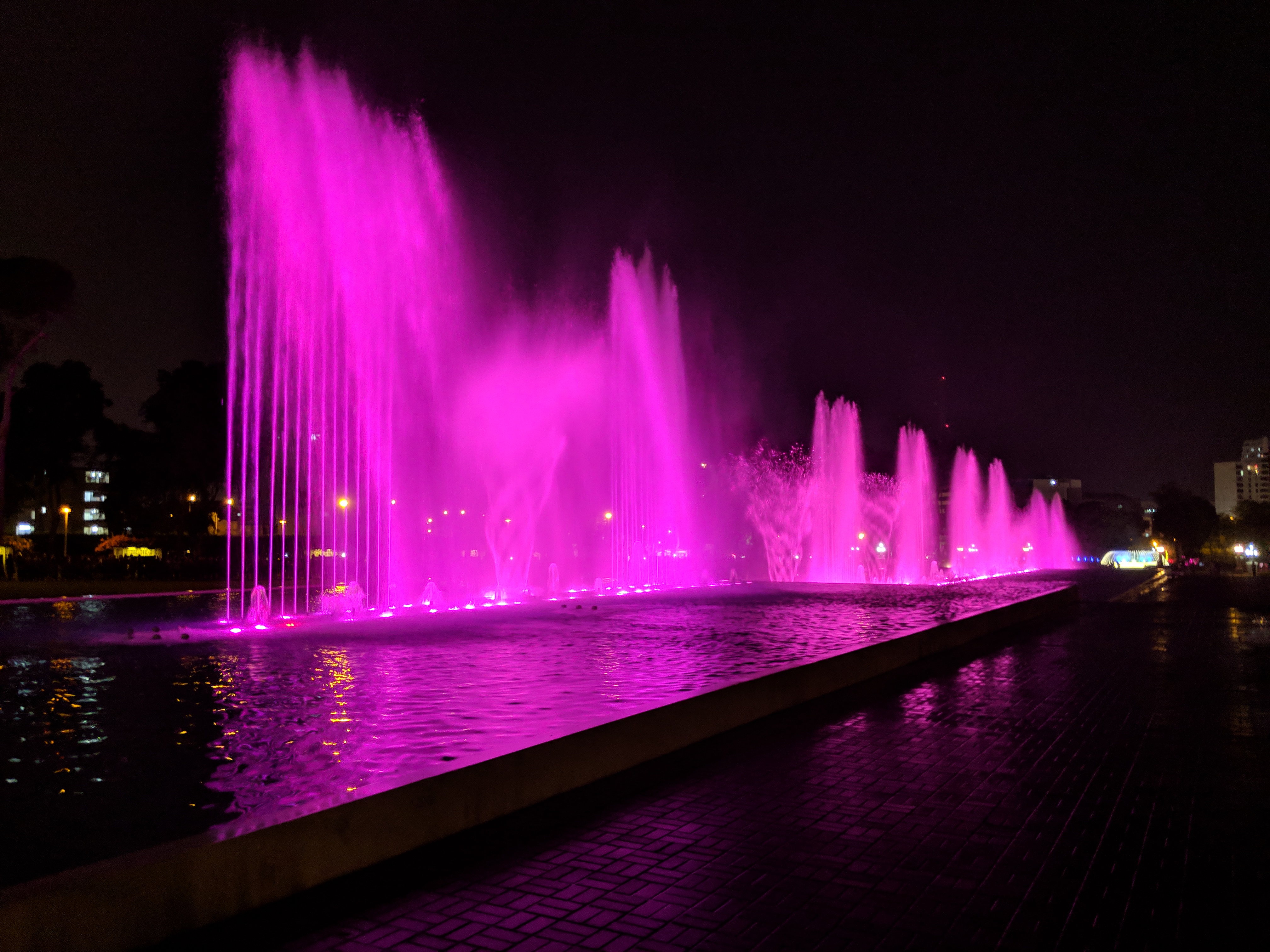
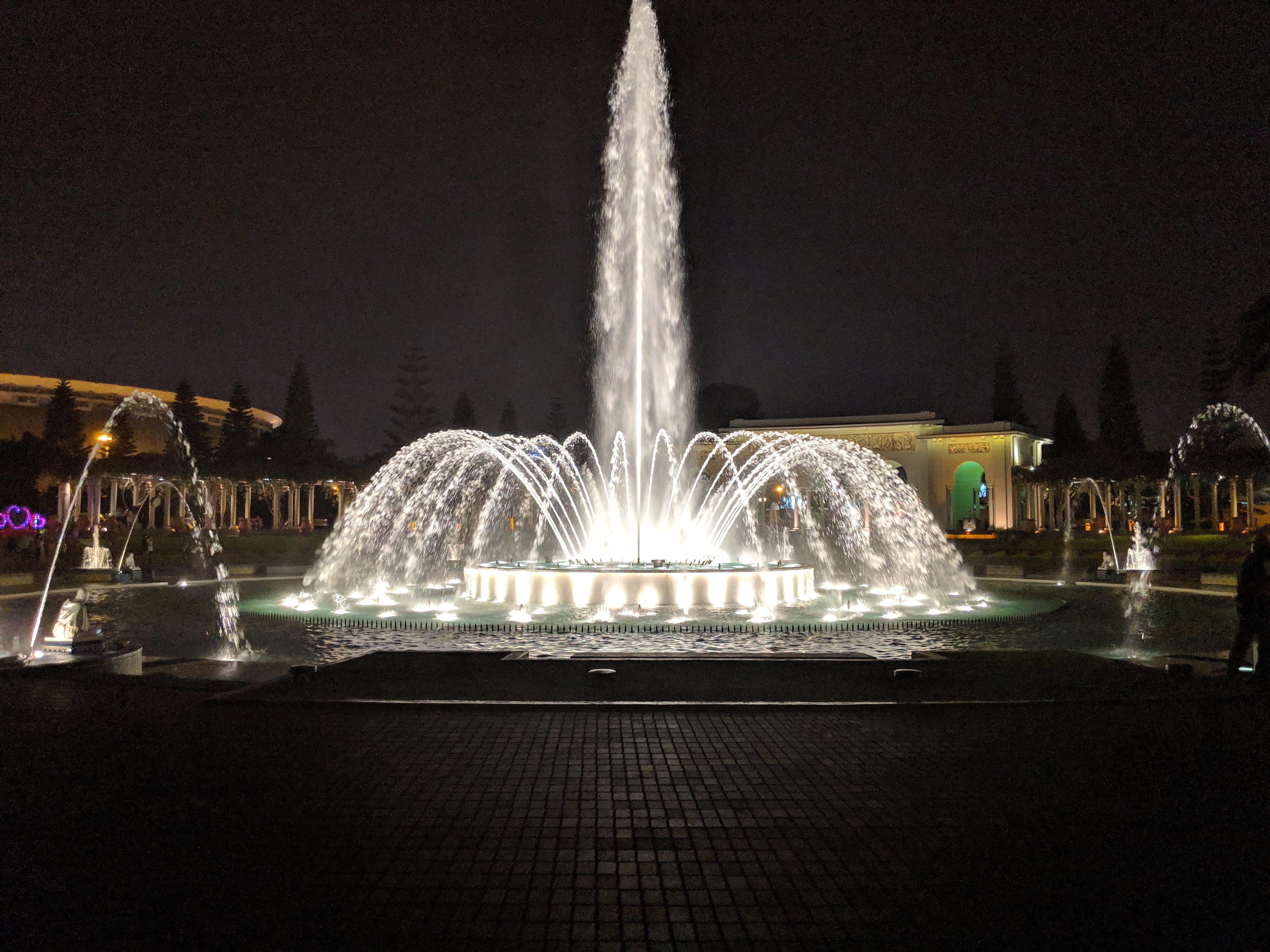

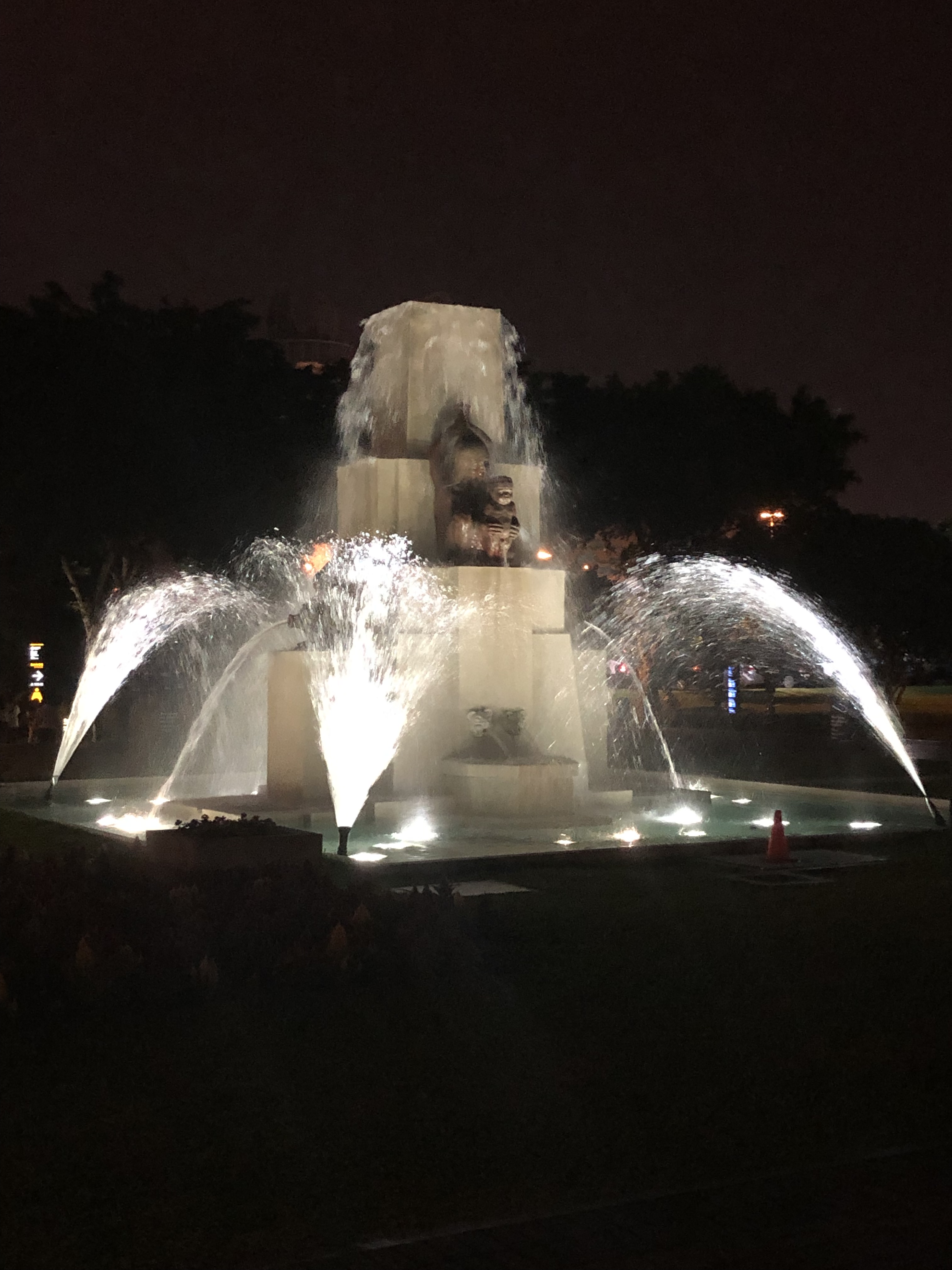
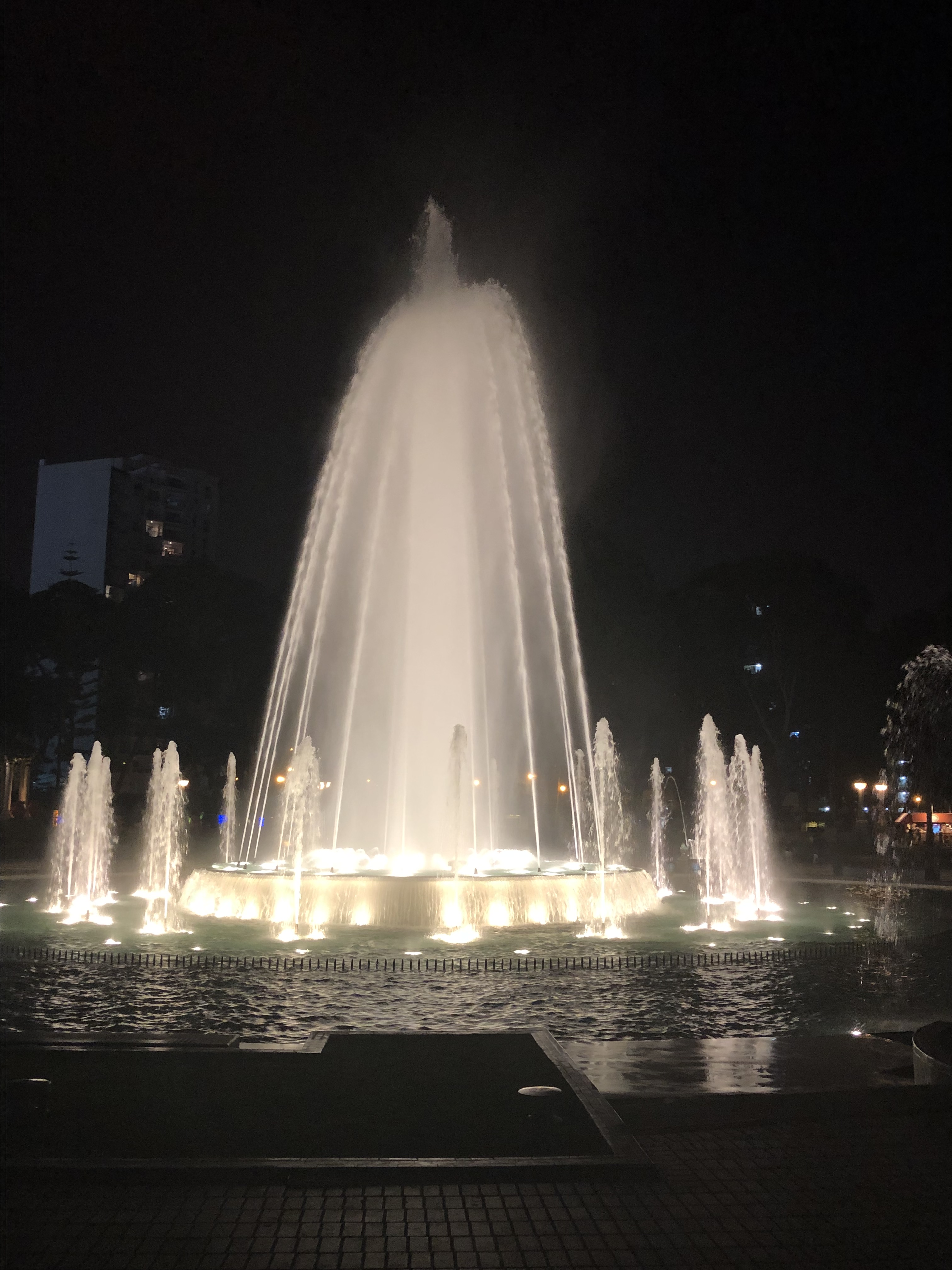
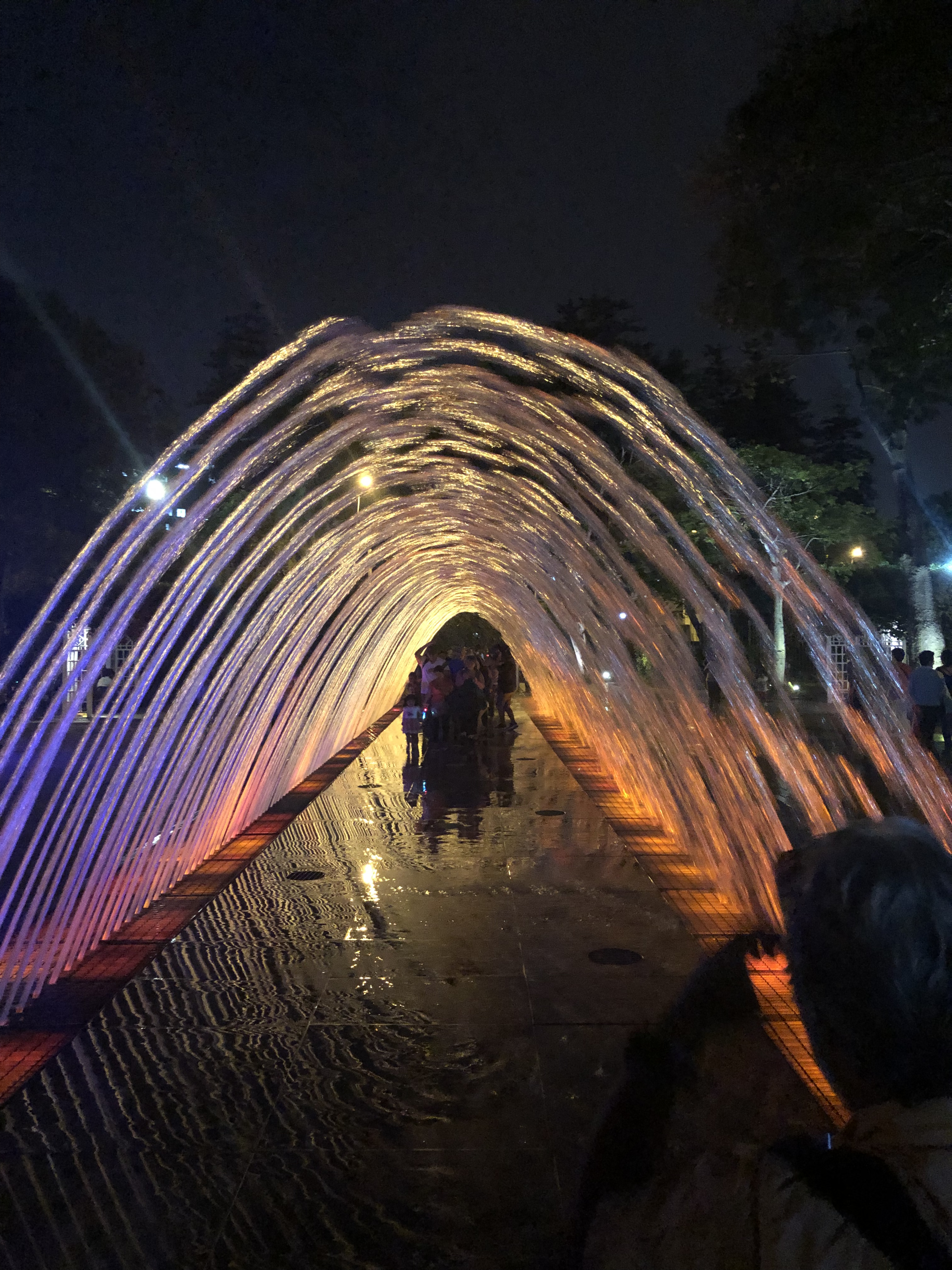
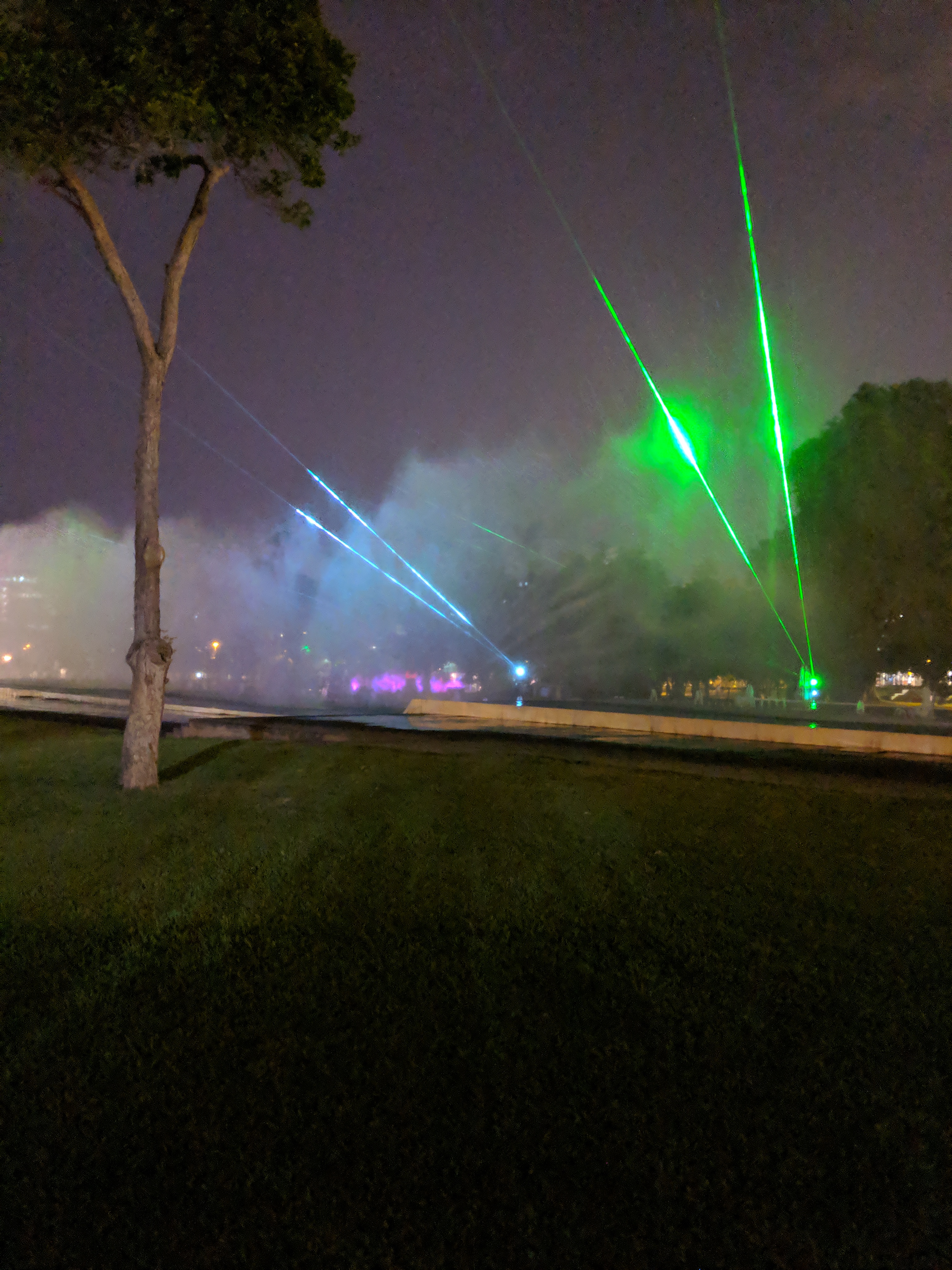
And because this was only a teaser trip to see if we should comeback we missed the main reason that most people come to Peru…thankfully…Miraflores has big photographic murals on the walls so you can cheat and pretend that you went.
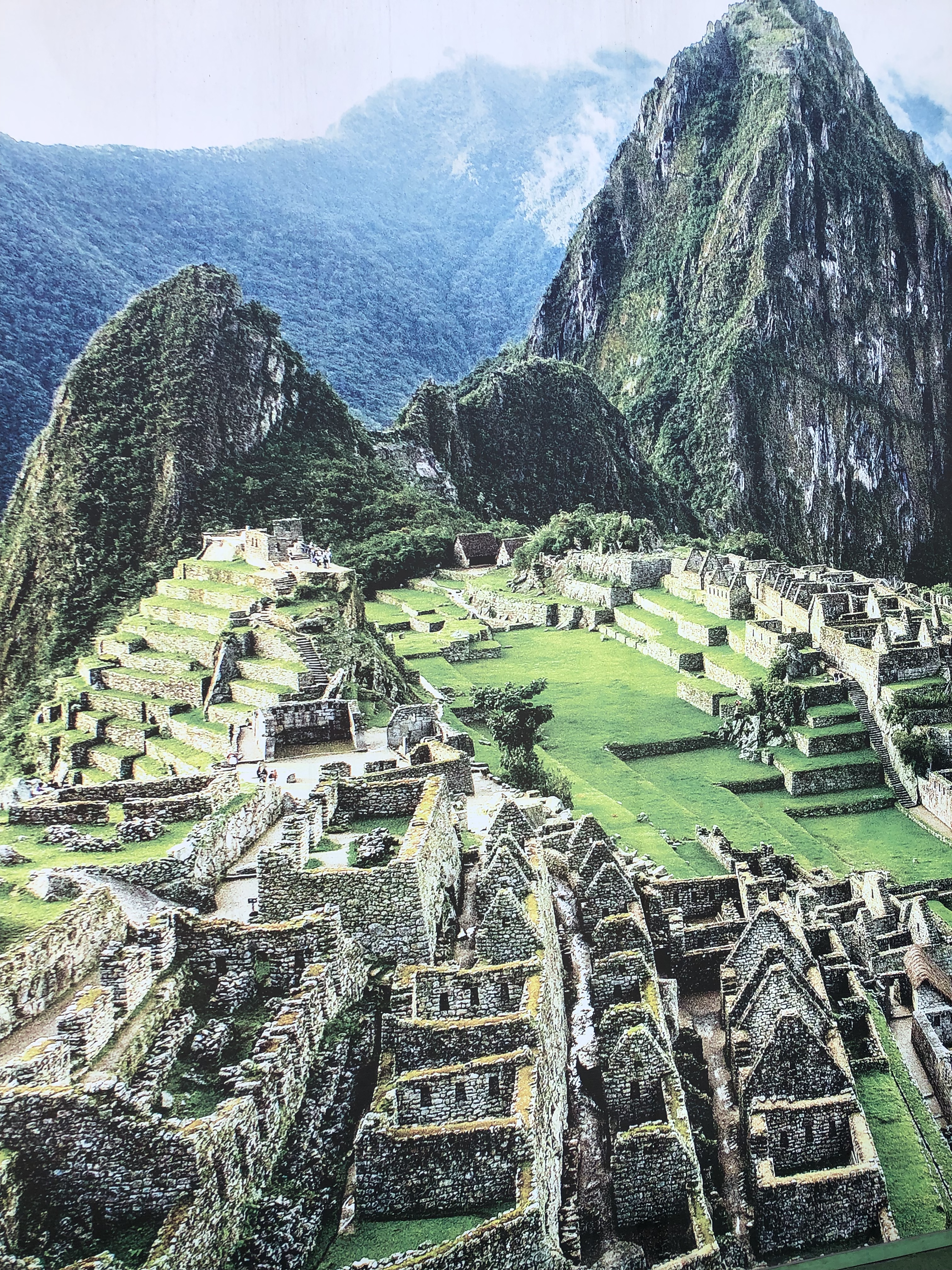

Santiago, Chile

Well we left Sydney at around noon, flew sleeplessly for the next 12 hours to arrive in Chile a bit after noon on the day we left… in notional terms we left at 11:10am to arrive at 12:20 the same day. In actual terms… long haul flights seem tougher now than they did when we were younger.
Being both sleep deprived, and in a Spanish country we were happy to have the siesta…so we asked the dude at the hotel who replied “we don’t have that custom here”…well we did…so we crashed for a couple of hours to try and cope with no sleep and a 14 hour time difference. Upon waking we headed along the road to reach Plaza de Armas…this is in essence a large square surrounded by some absolutely stunning buildings.
The town hall, the tourist office (now a museum), and the the post office lined the northern edge of the plaza. As you pan to the left the cathedral (of Santiago de Compostela) is a major feature before the square blurs into shops, cafes and restaurants.
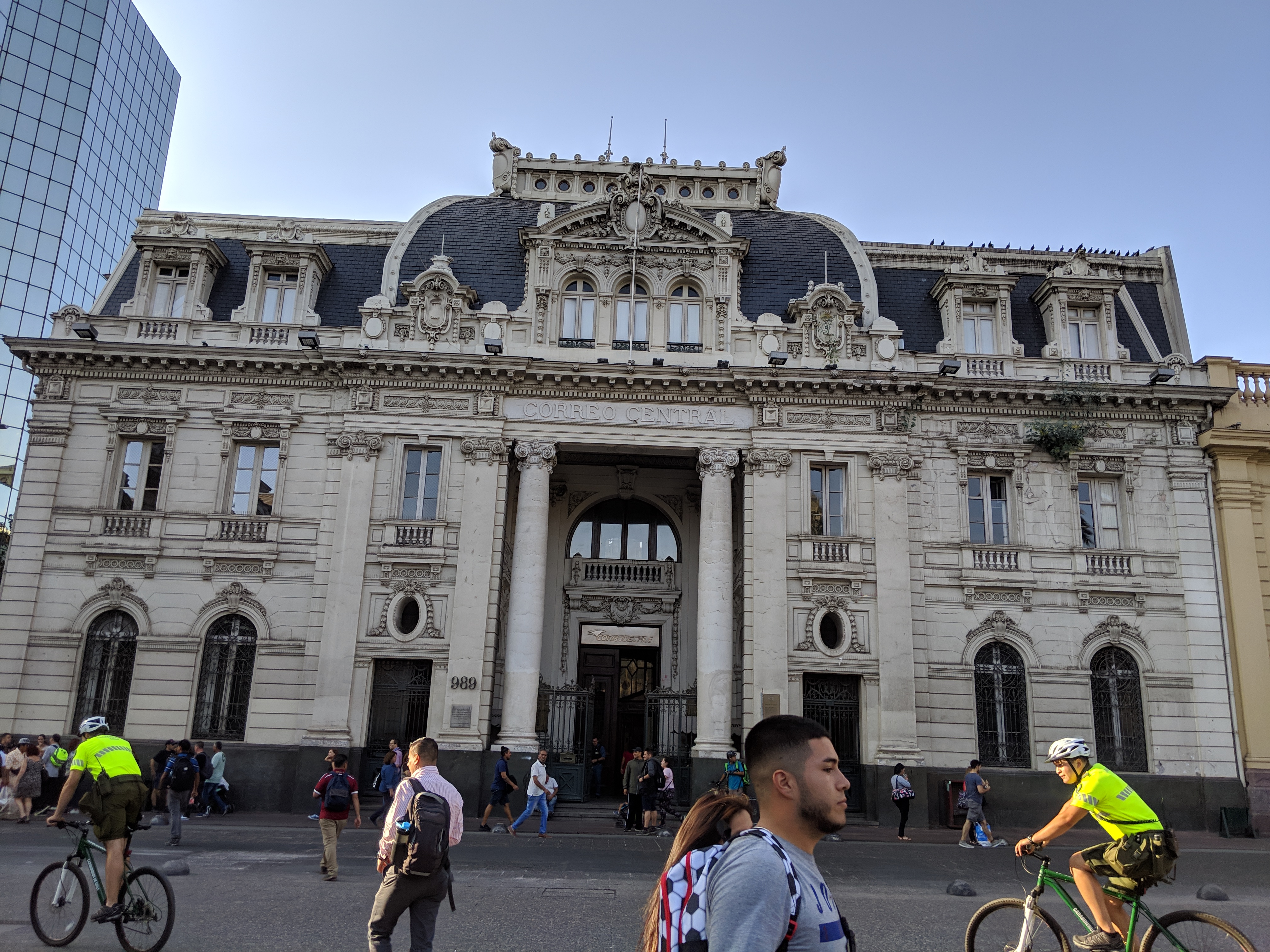
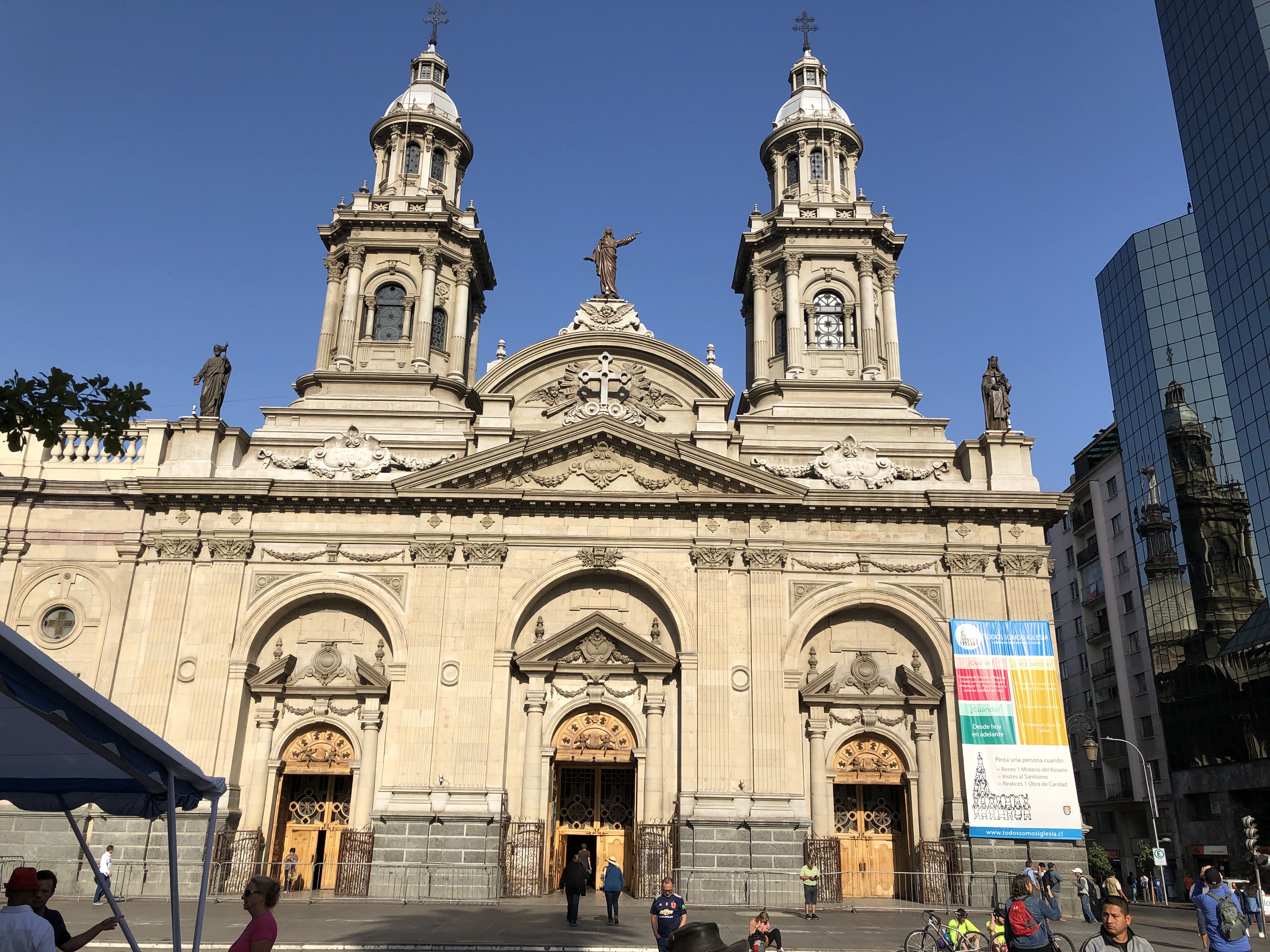
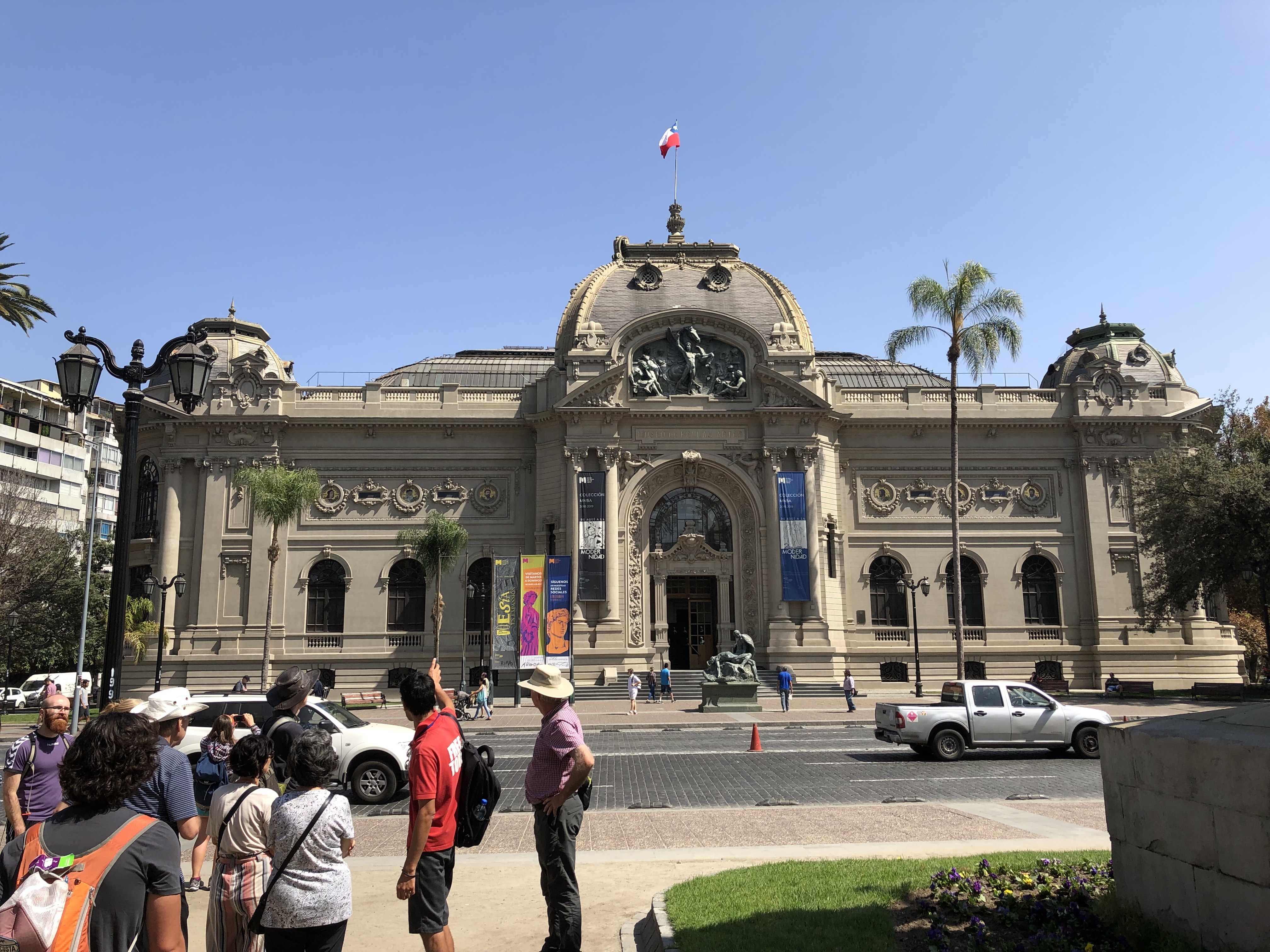
Possibly the most stunning thing for us was the fact that the park was actually used…in fact it was packed at all times of the day. Coming from Australia there are many parks and green spaces but for the most part they are empty. Not in Chile…as we wandered around the city every park bench was full, and the lawns were also crowded. There were preachers, artists, activists, couples, people watchers and dogs…lots of dogs.
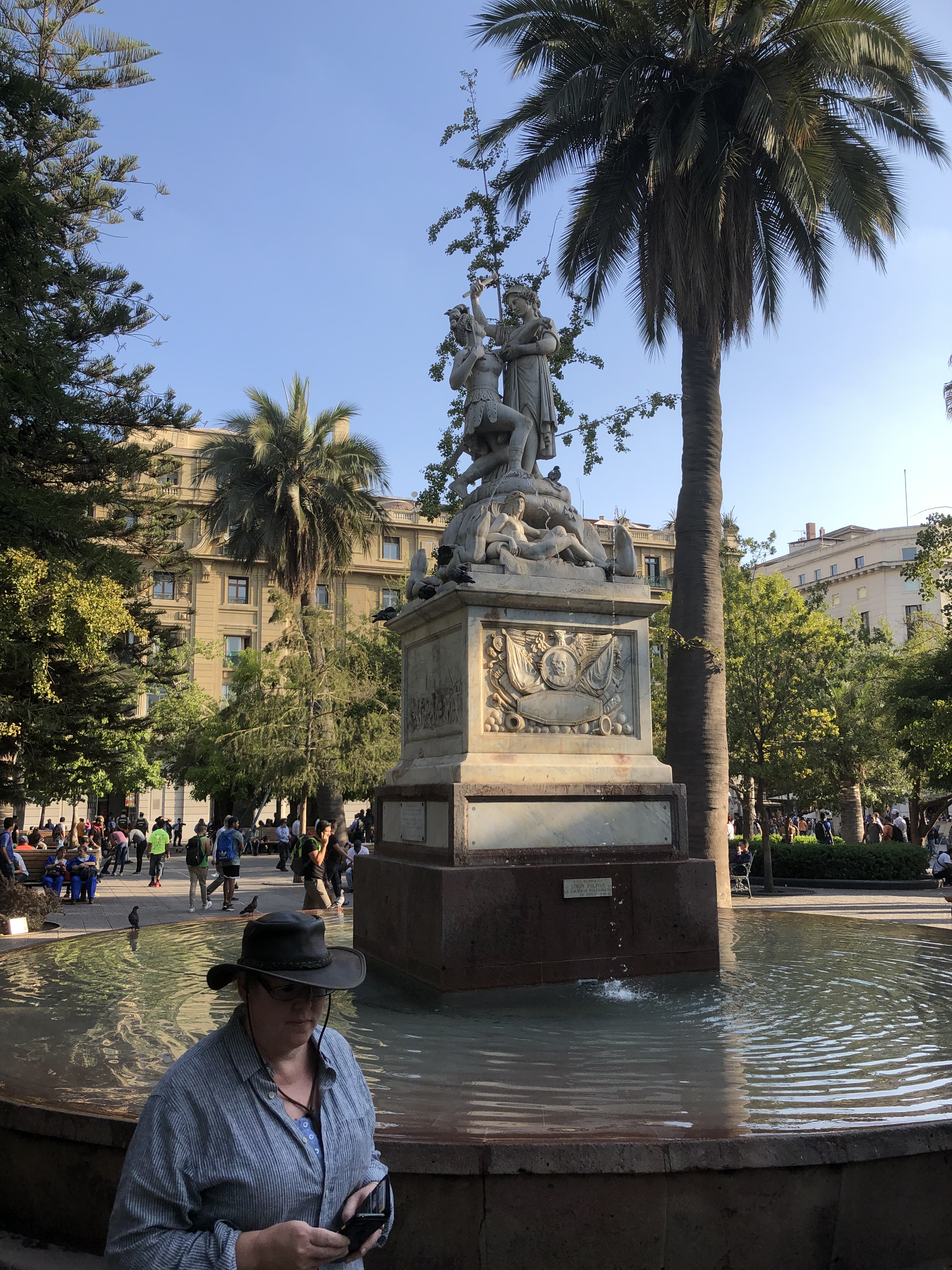
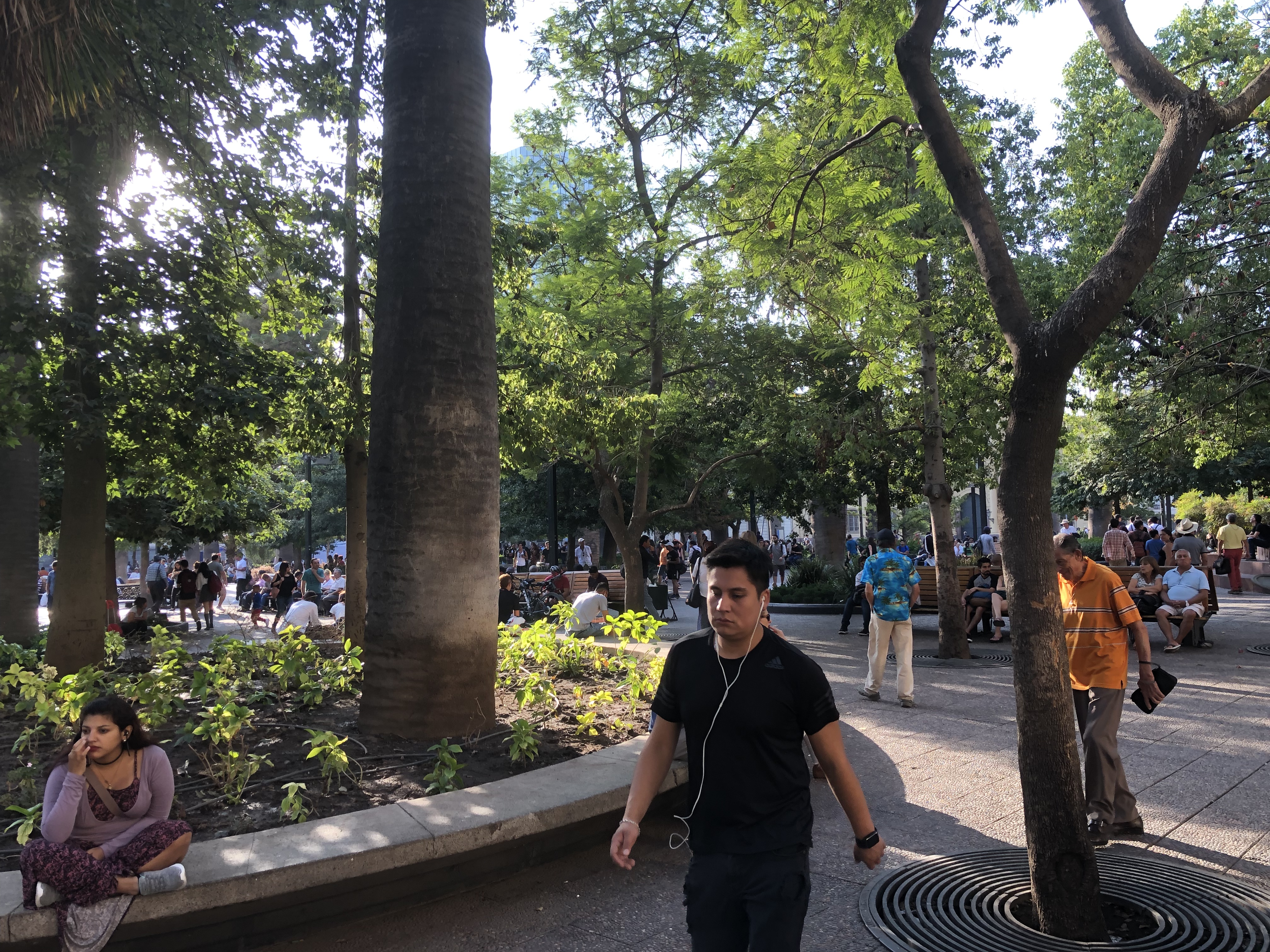
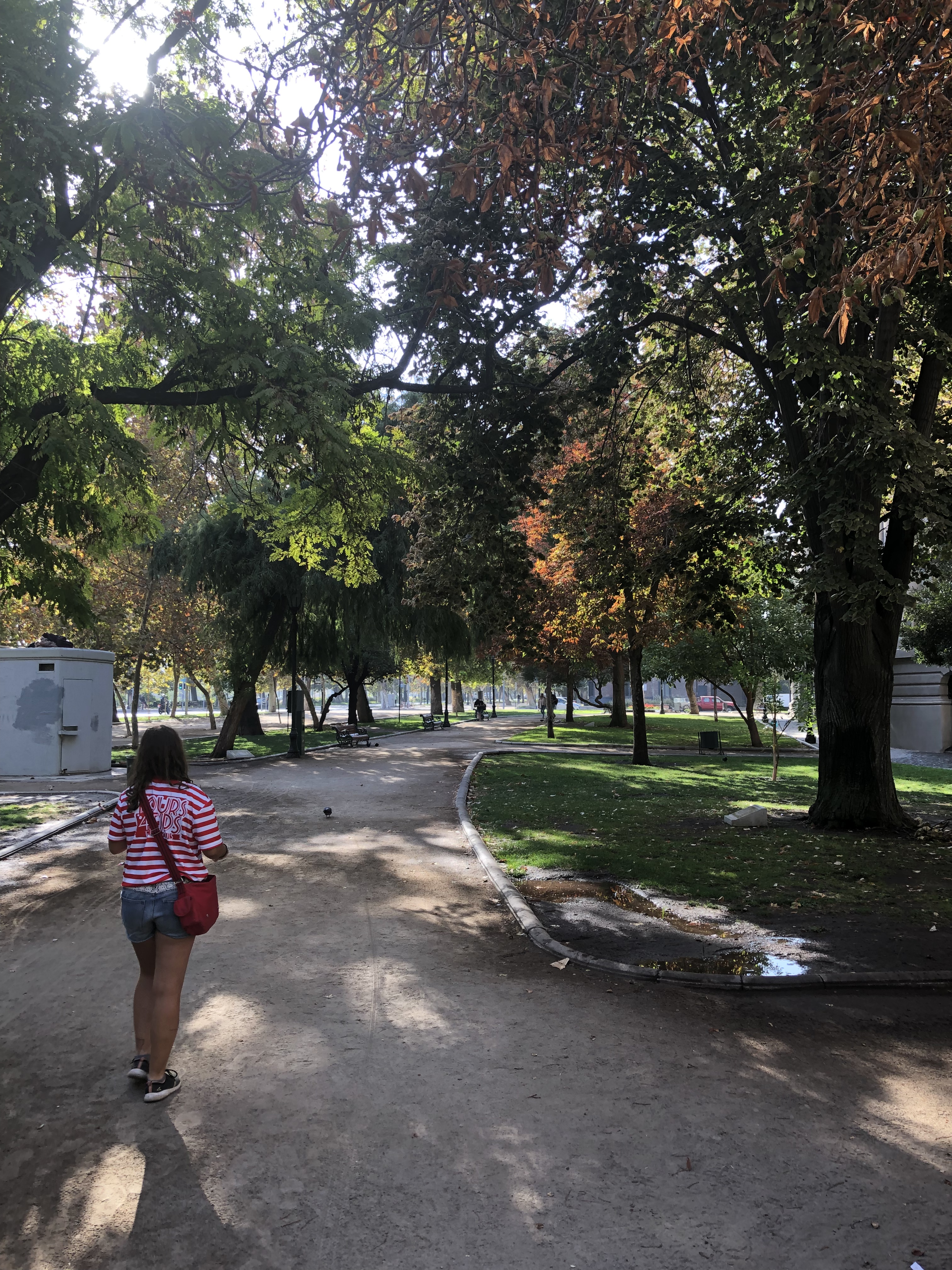
We took the “tip only” walking tour a few days later and got the history behind these and many more local sights of the city. The walking tour saw us adding the High court, Pre-Colombian Museum, Congress (former), Presidential palace (which was once the mint and now bears the title La Moneda), the stock exchange / financial district and the opera house.
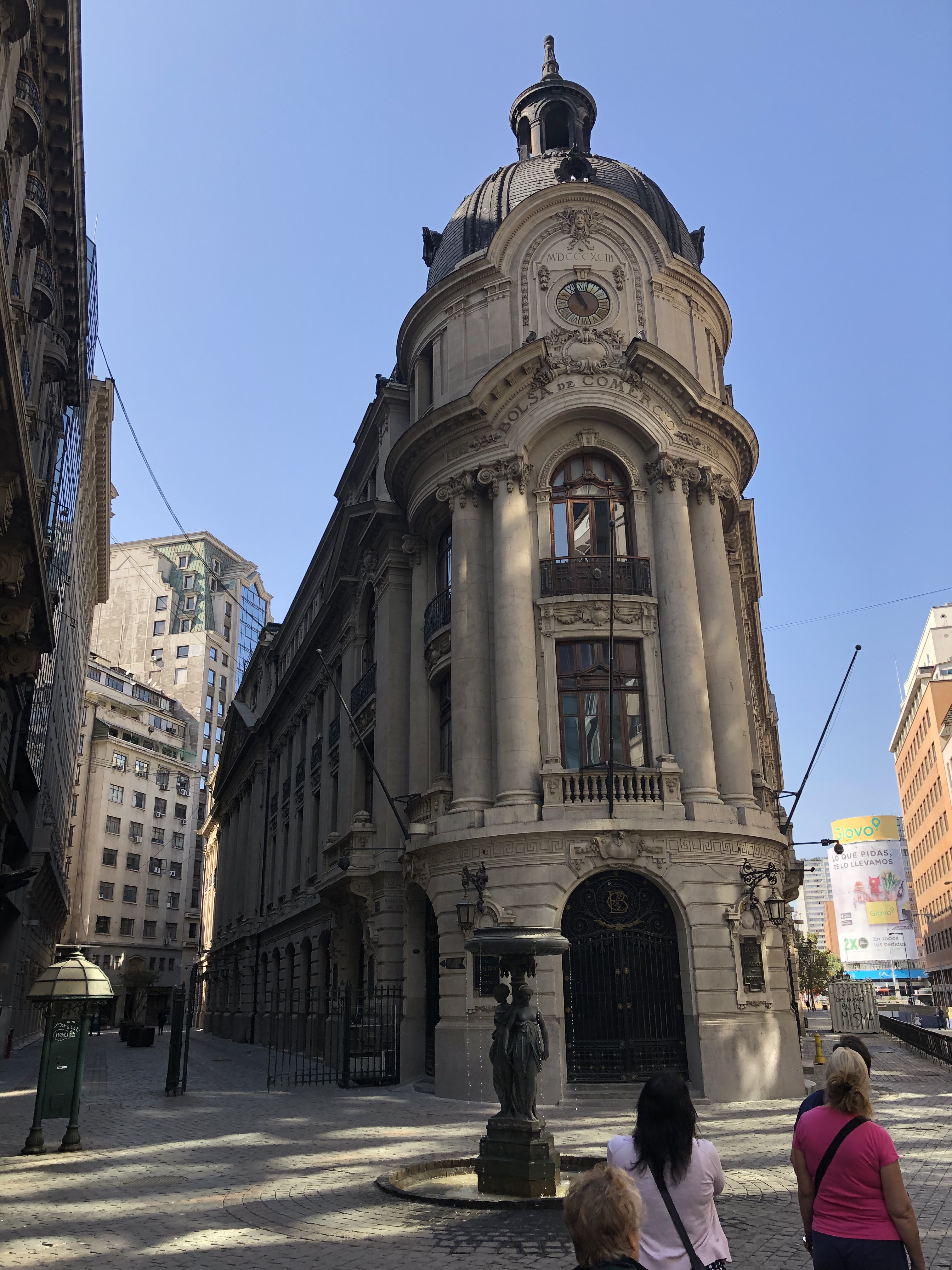
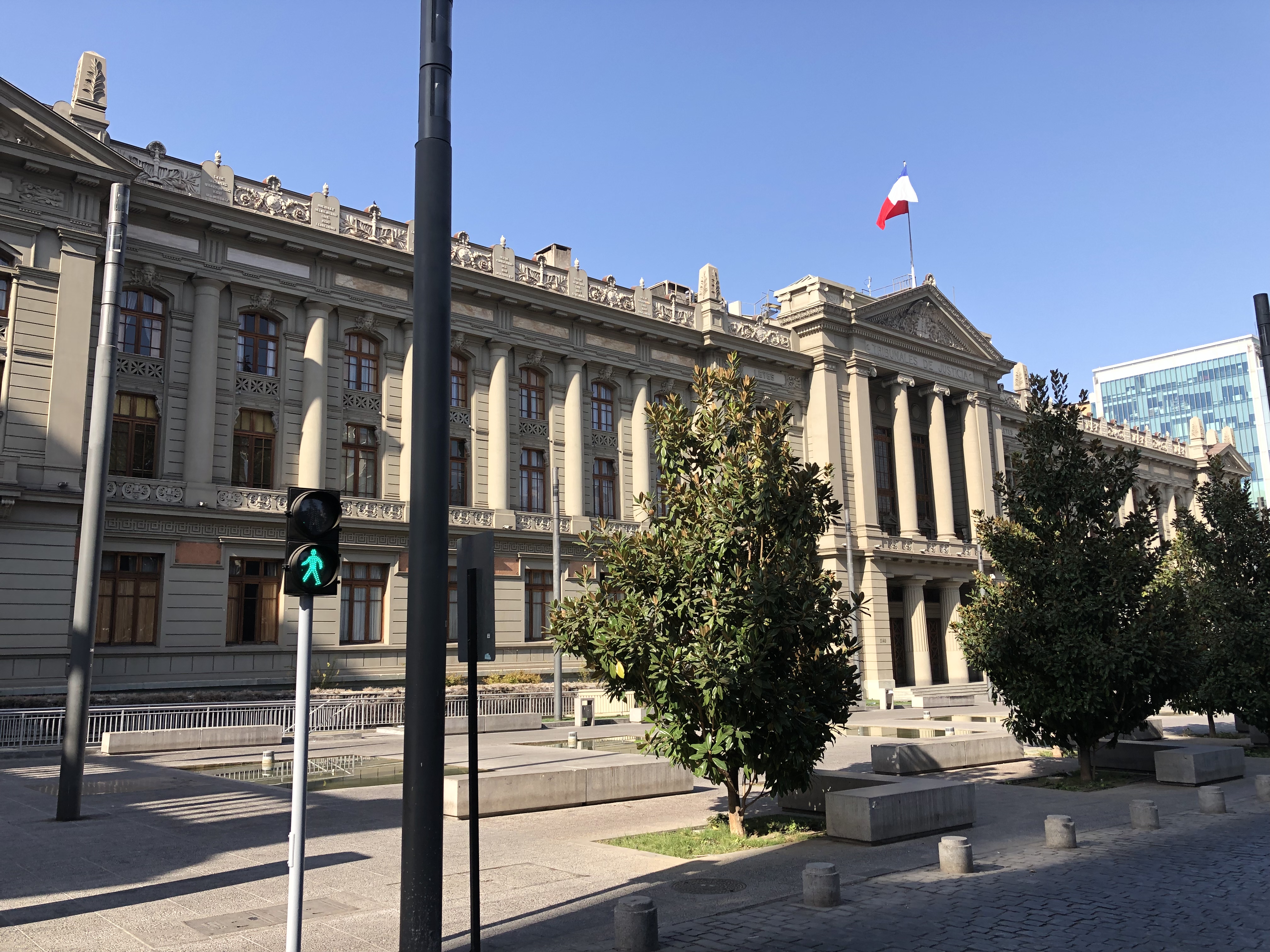
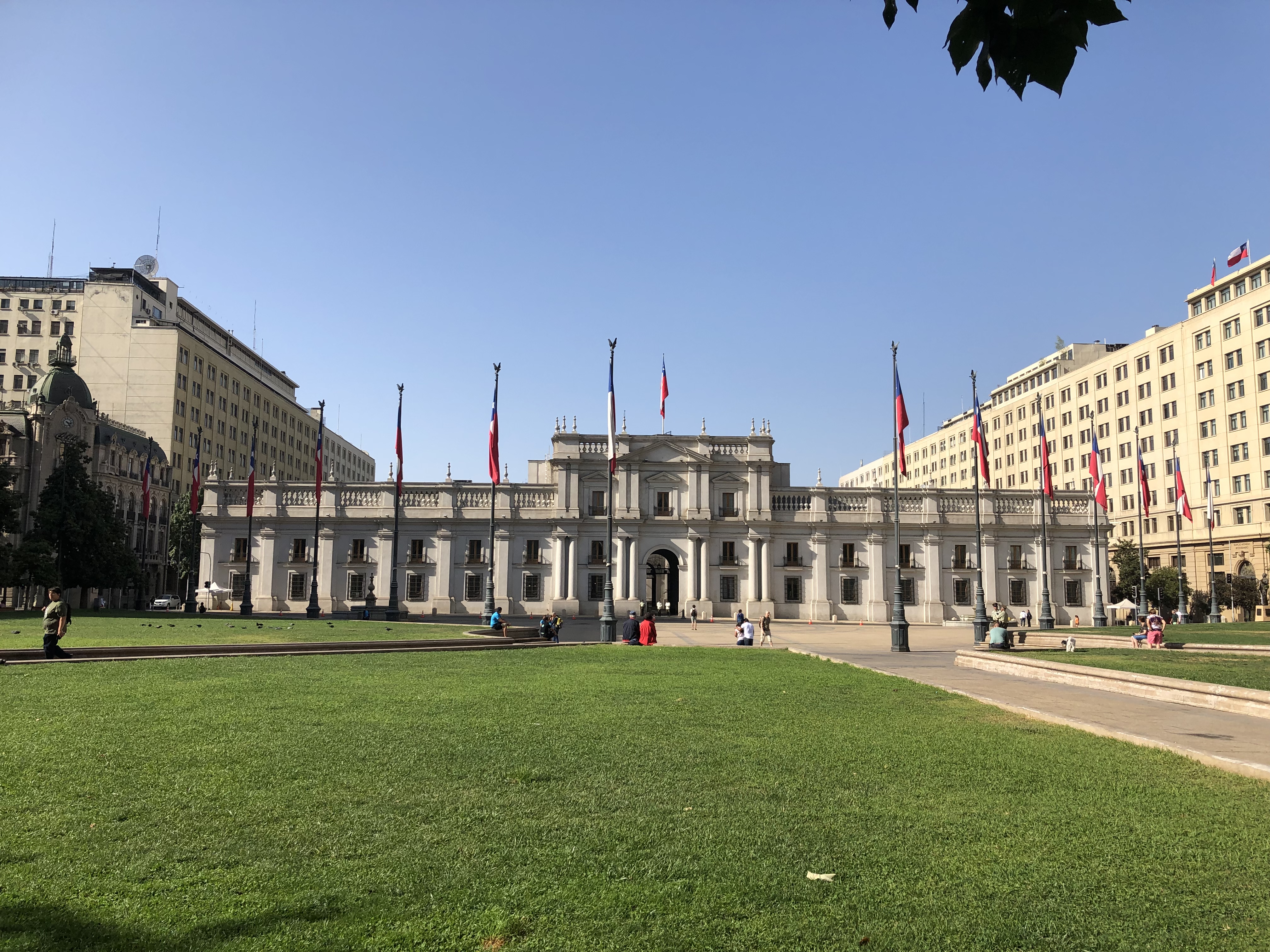
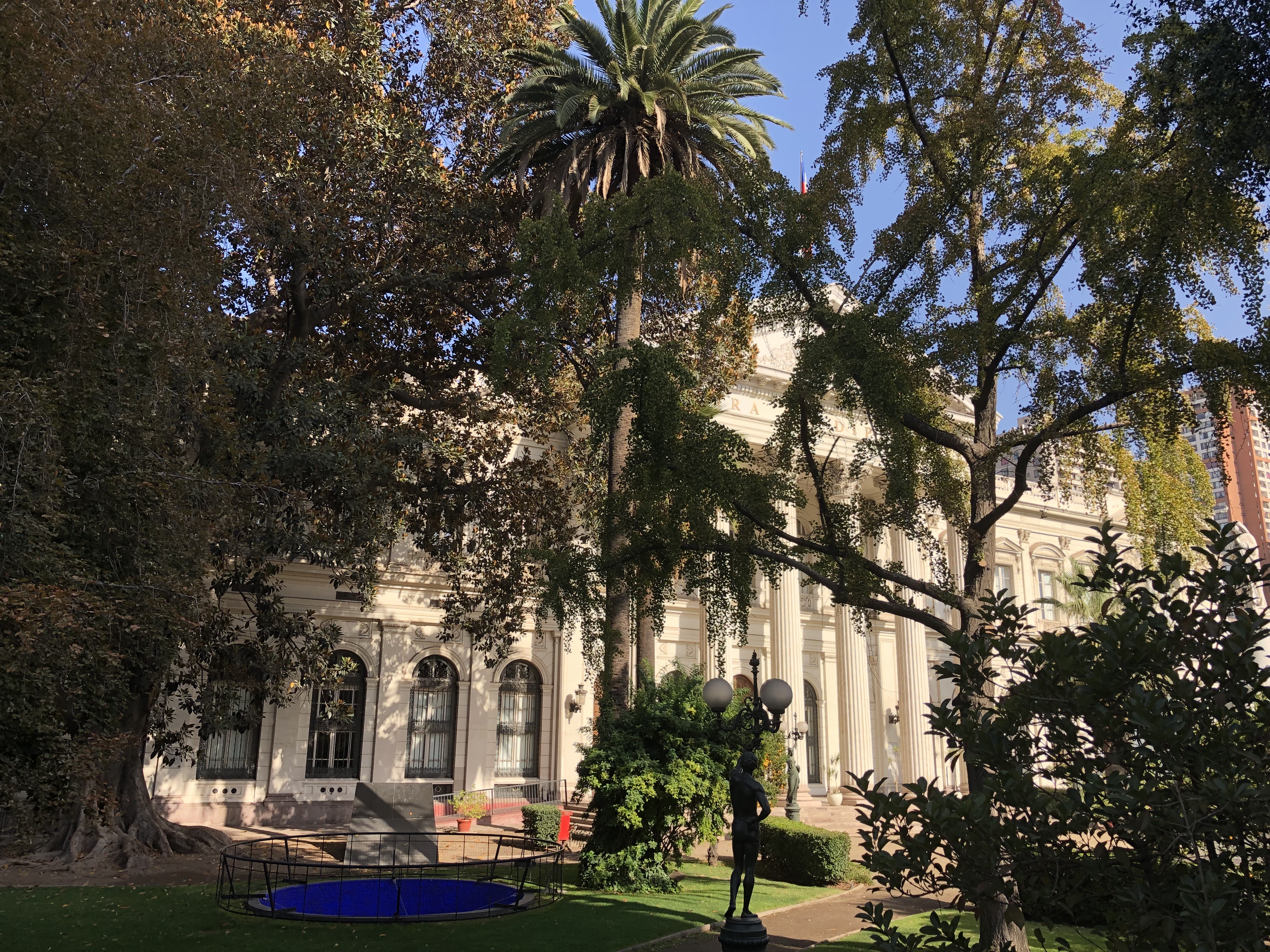
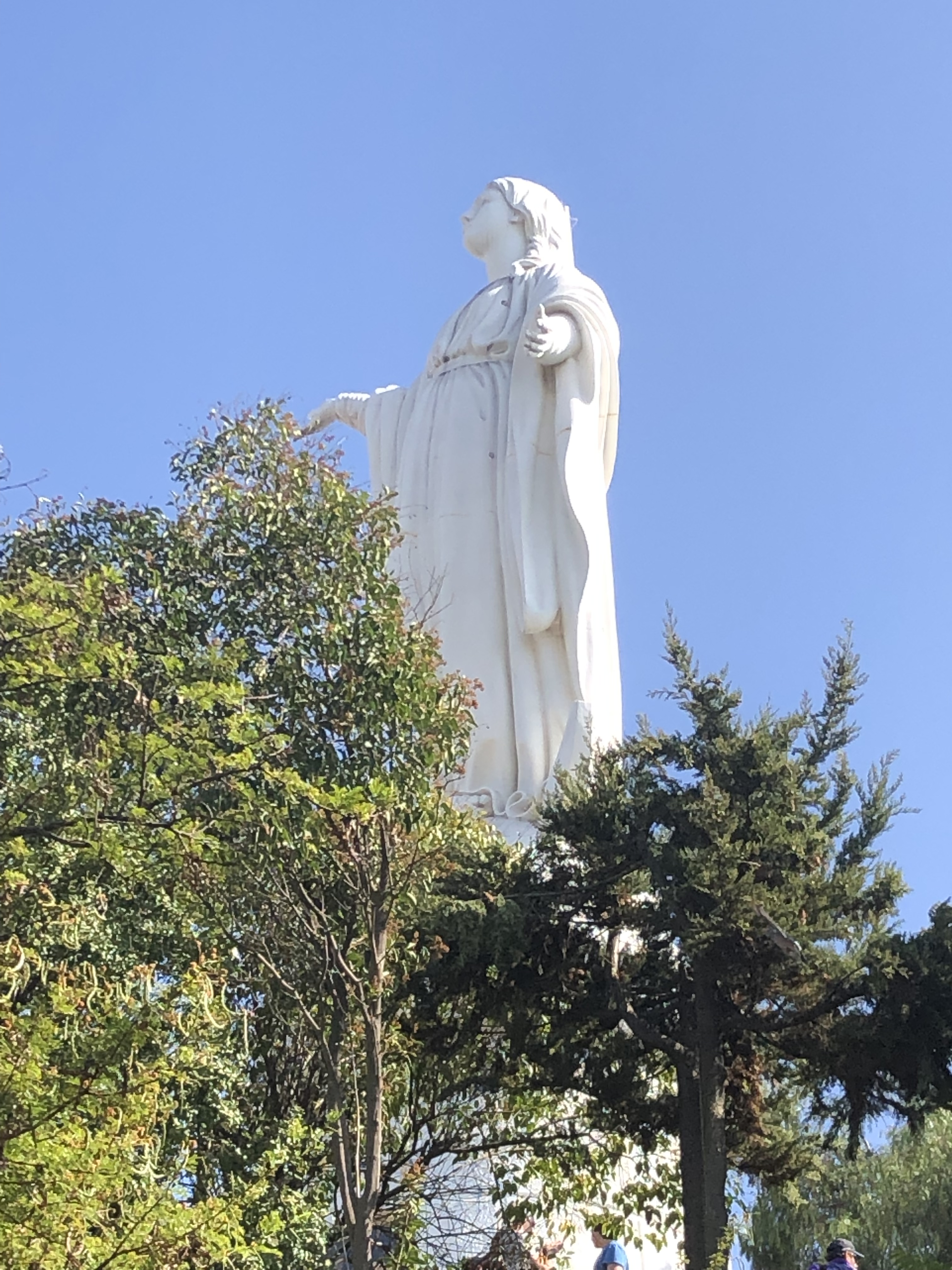
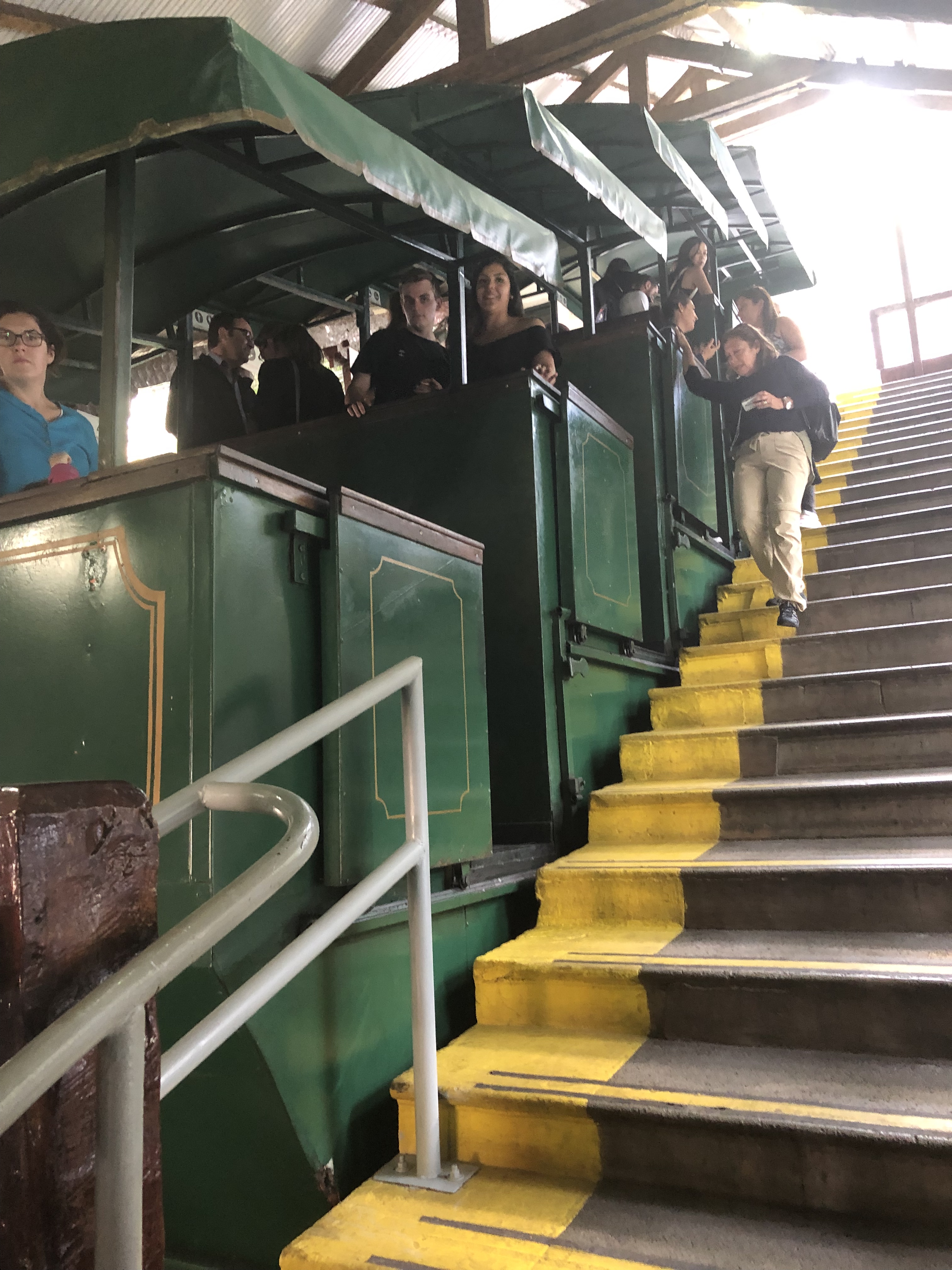
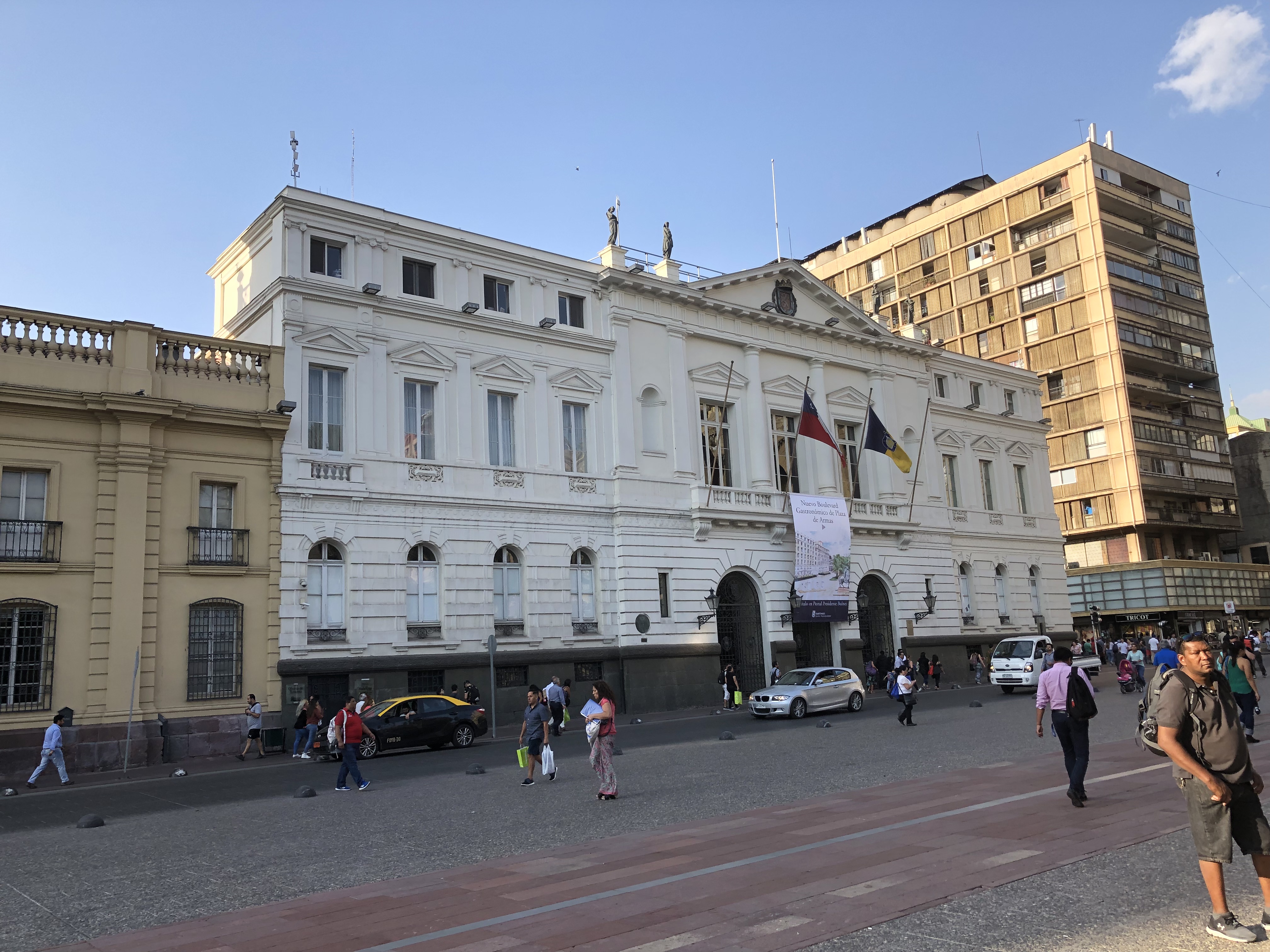
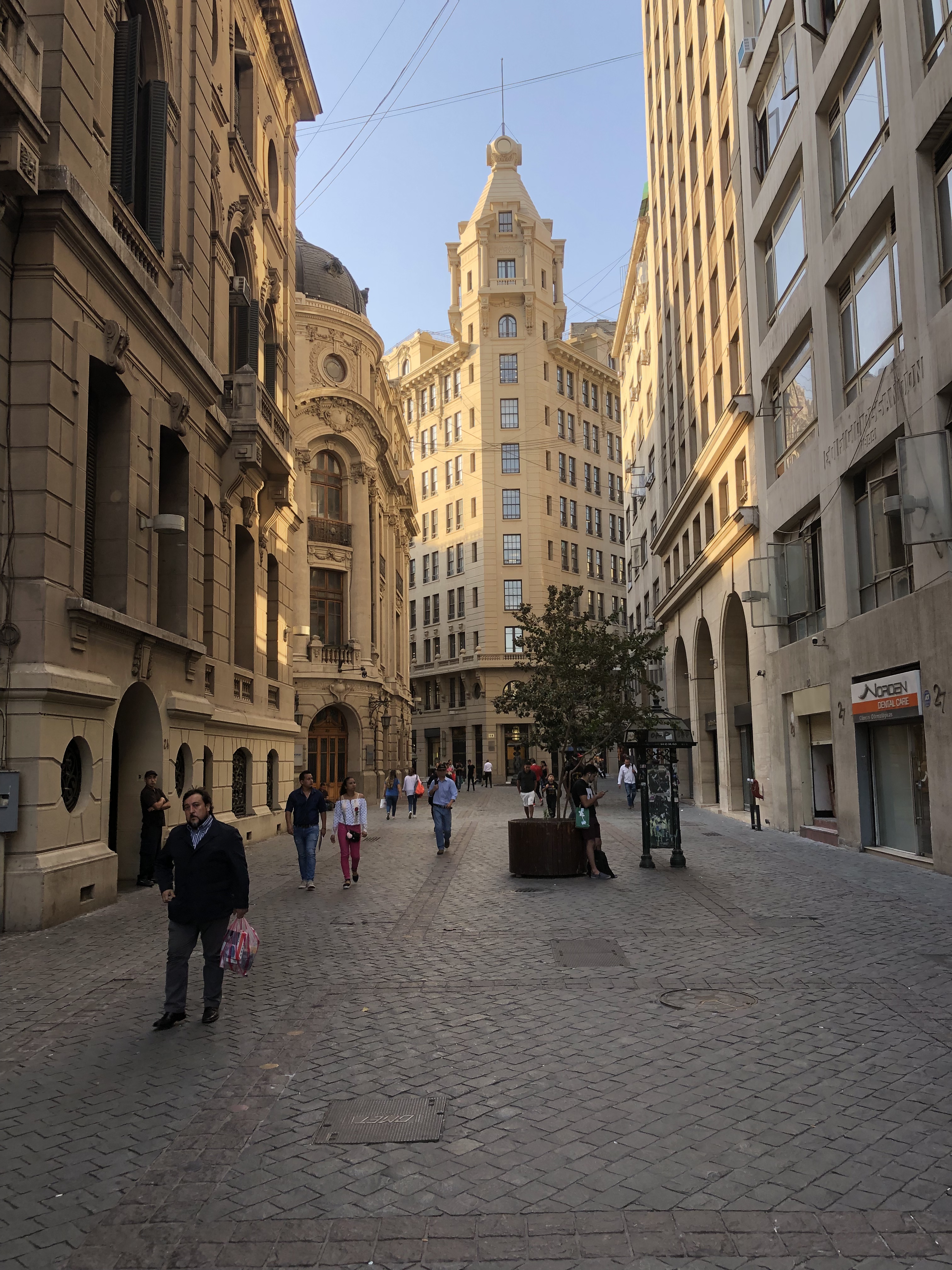

On day two we did the walk across the river to Barrio Bellavista, the bohemian quarter of the city. It is packed with bars, nightclubs and restaurants and the streets are adorned with street art and murals of all shapes and sizes. But we were here to visit San Cristóbal Hill. This is the hill that rises around 300m (984 ft) above the city and is the site a 22 meter statue of the Virgin Mary and the place to get almost panoramic views of the city as it lays nestled among the Andean Mountain Range.
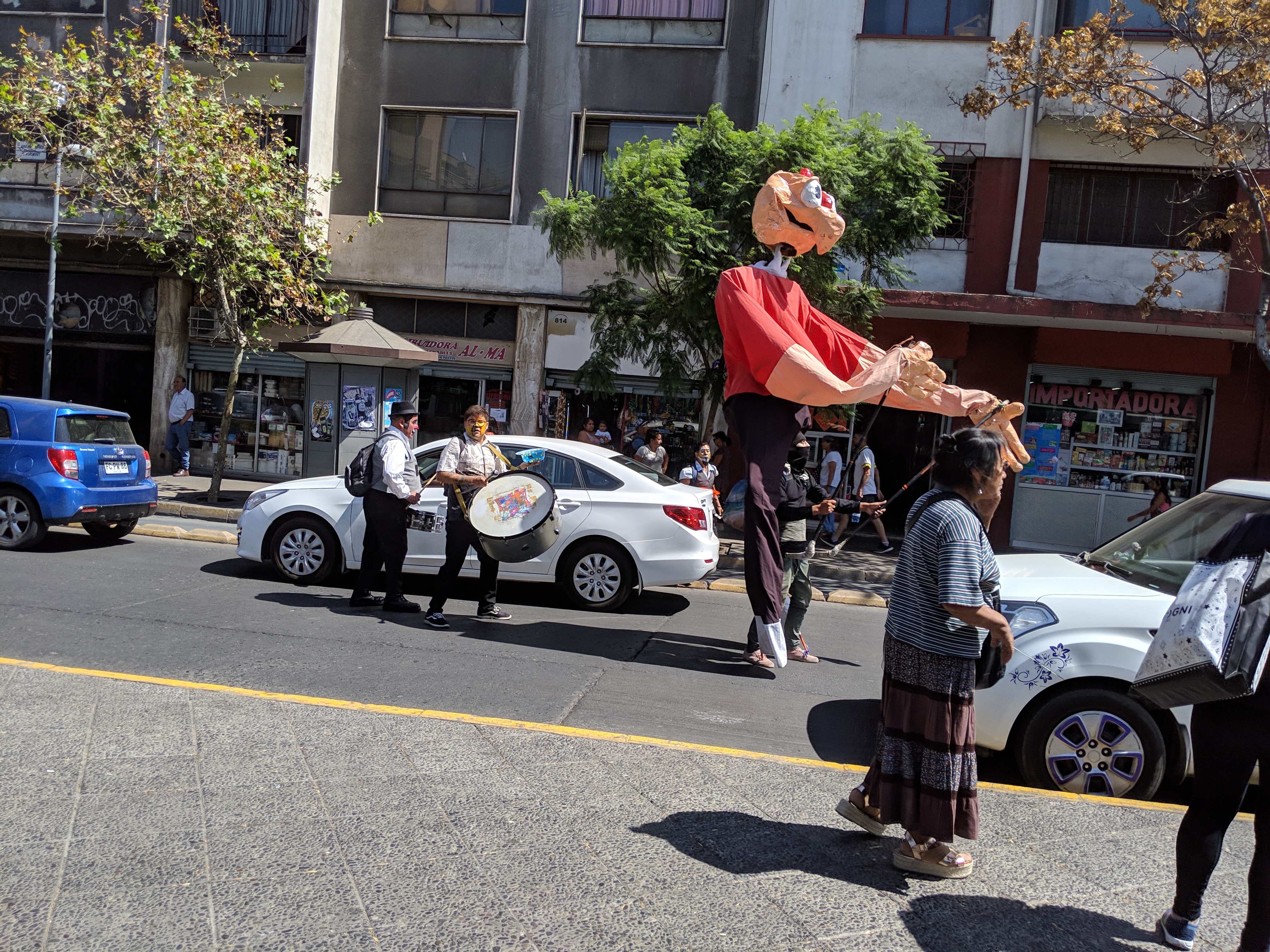
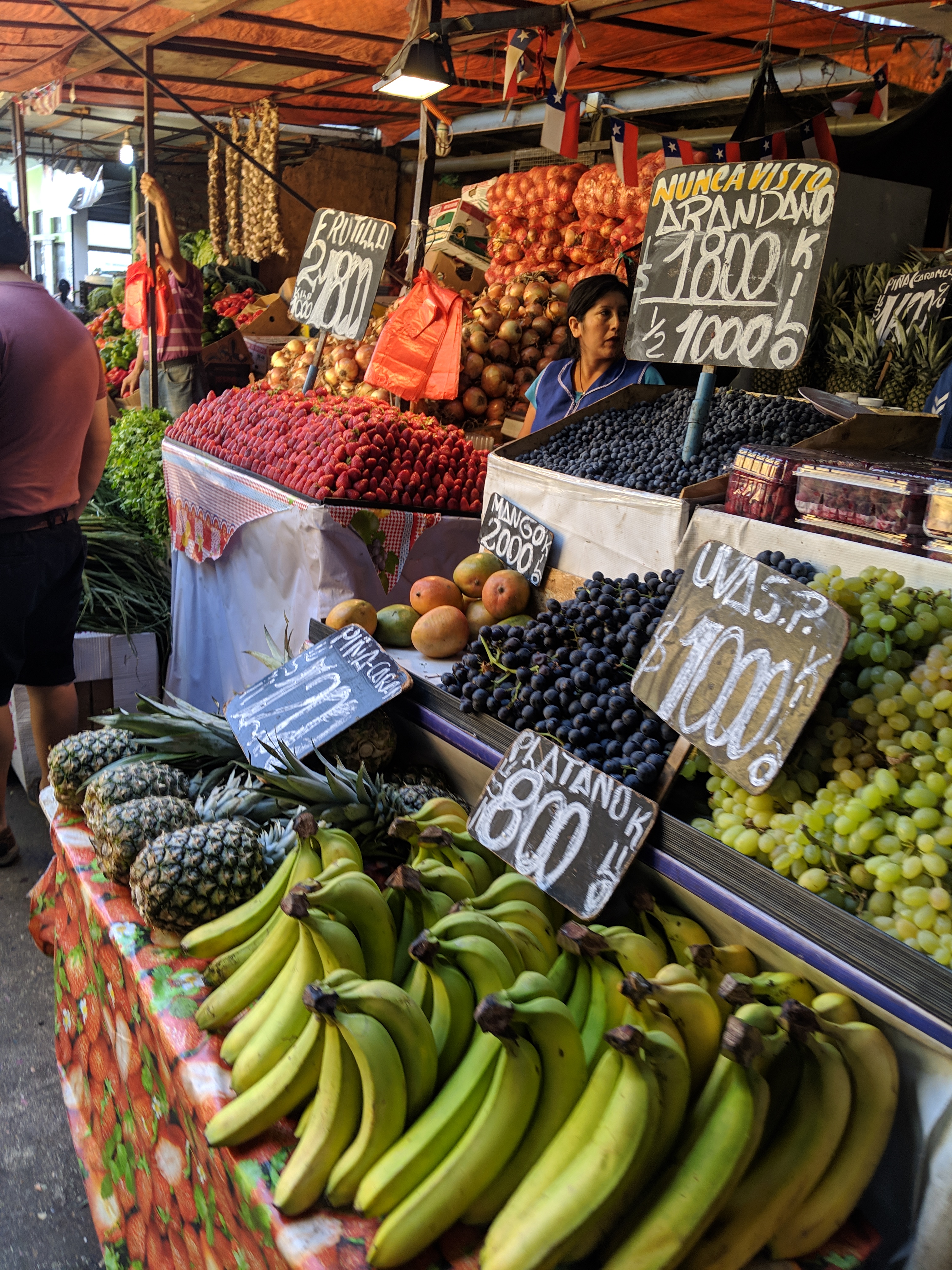
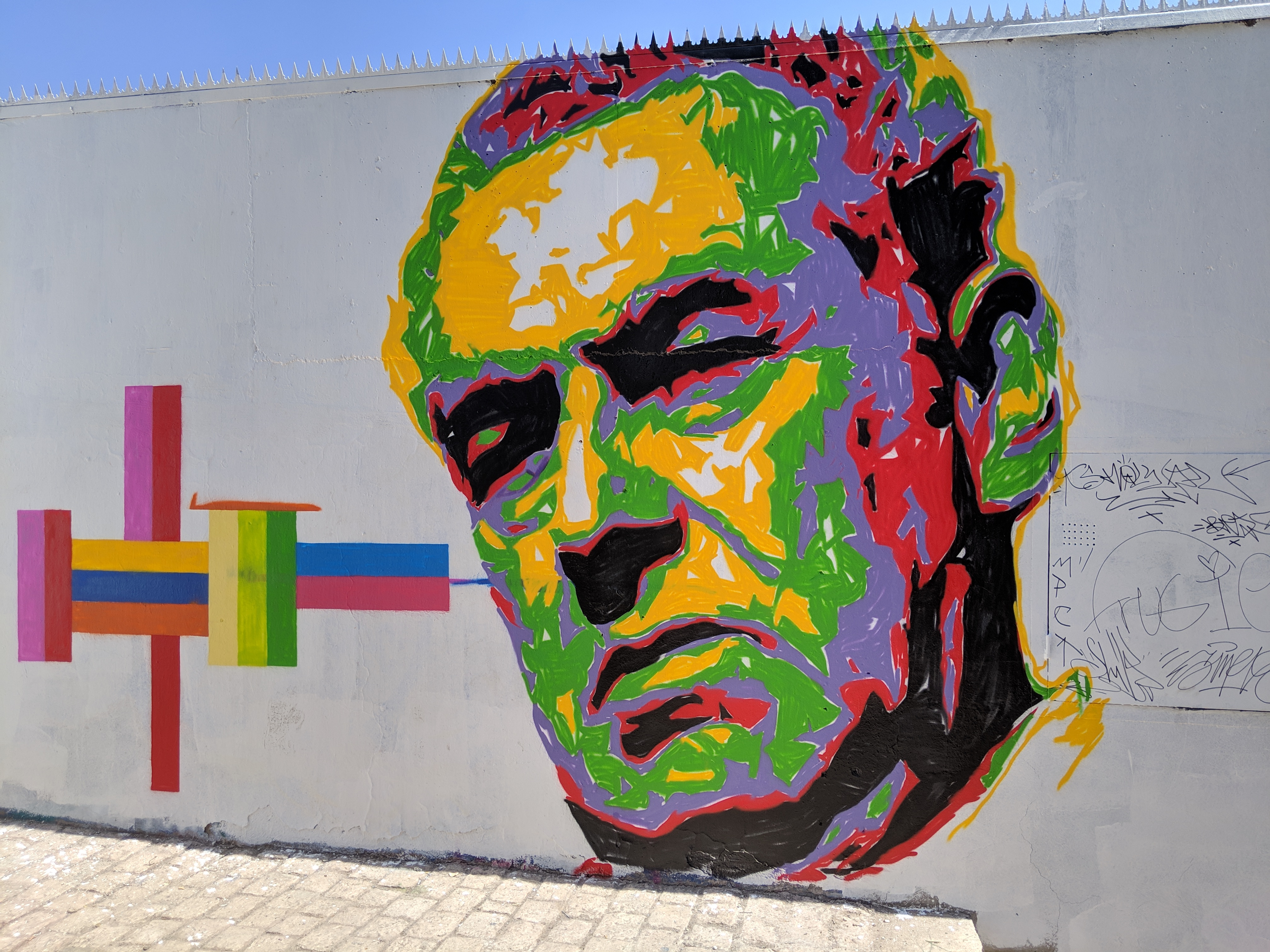
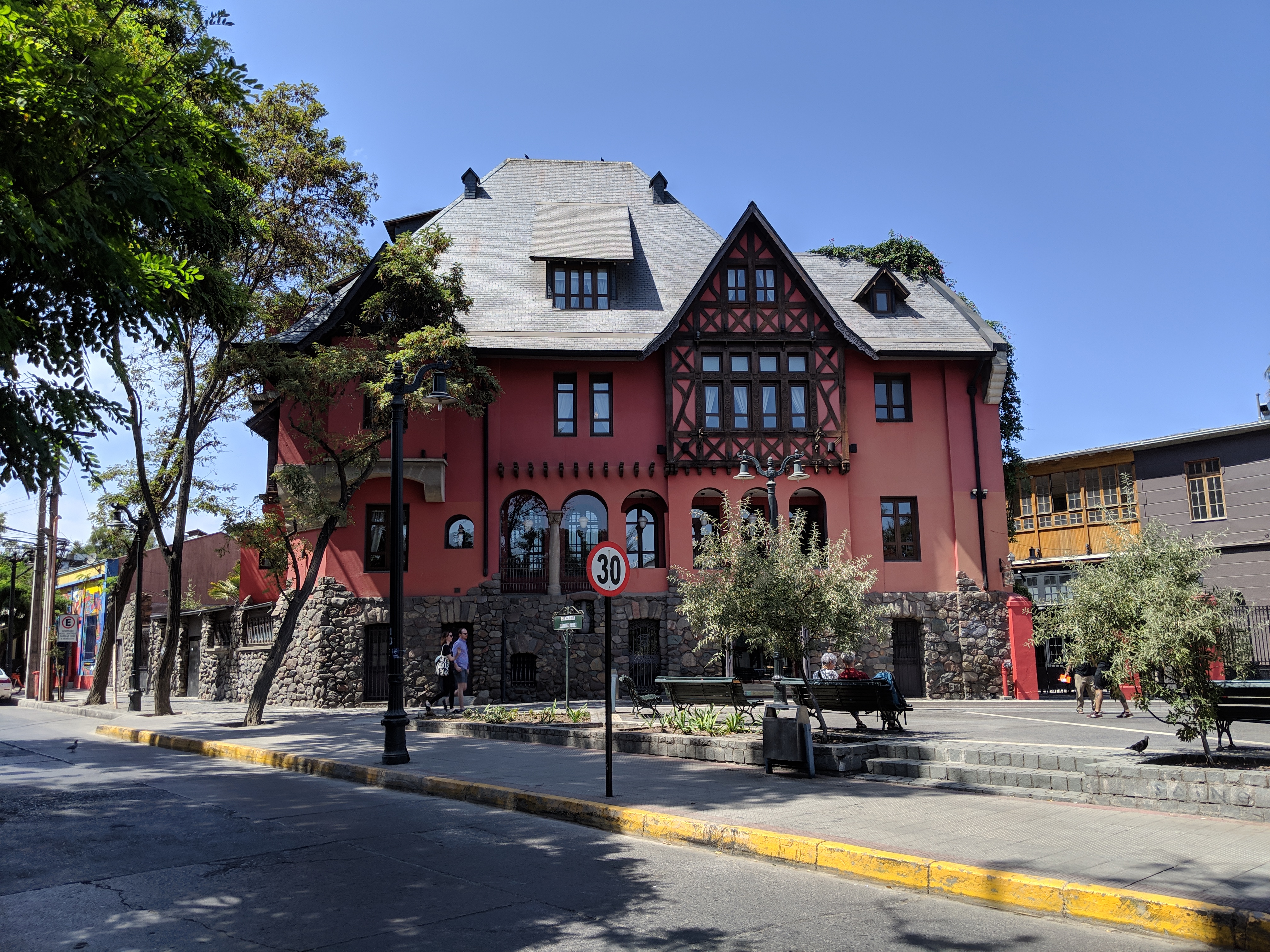
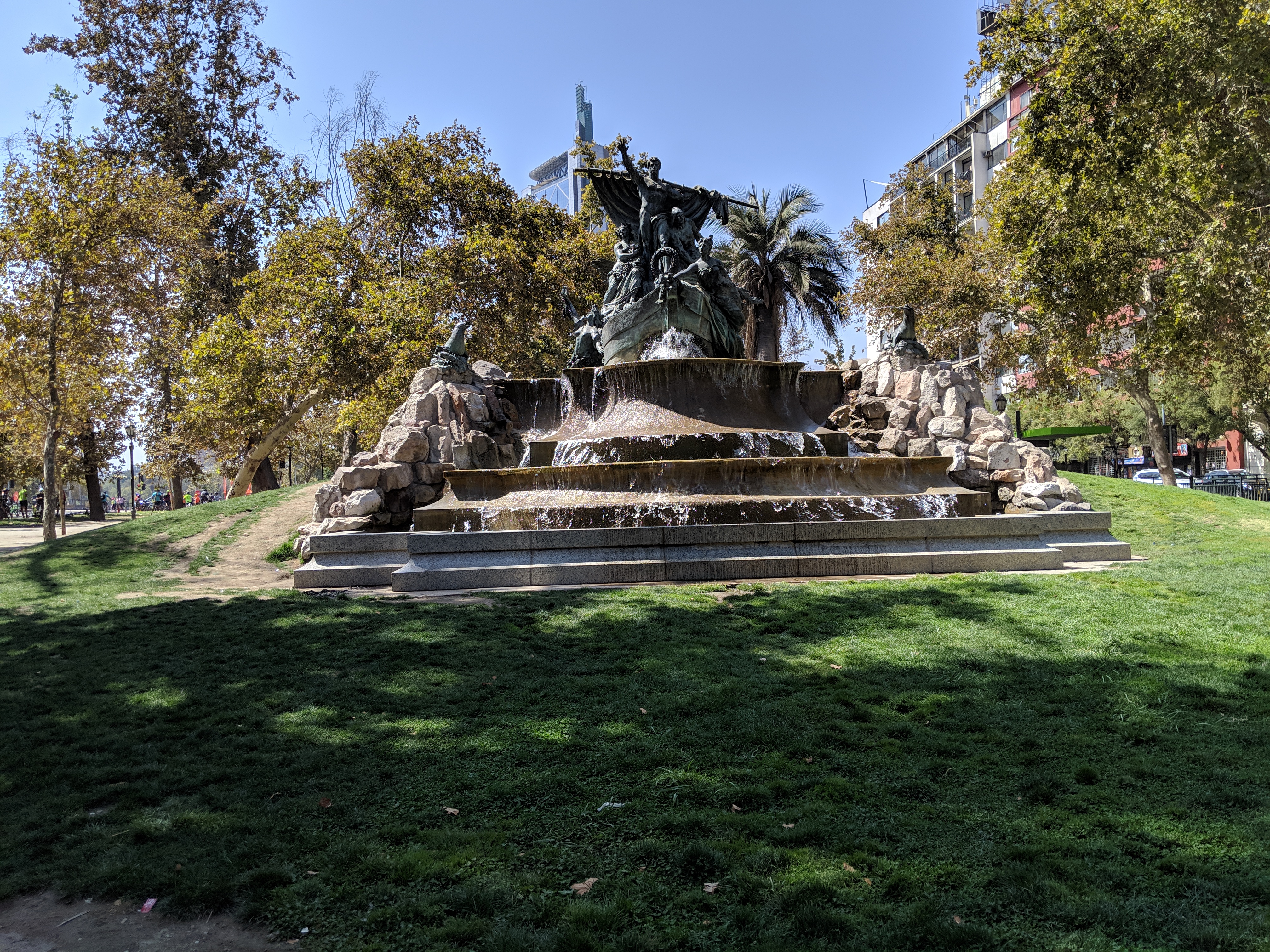
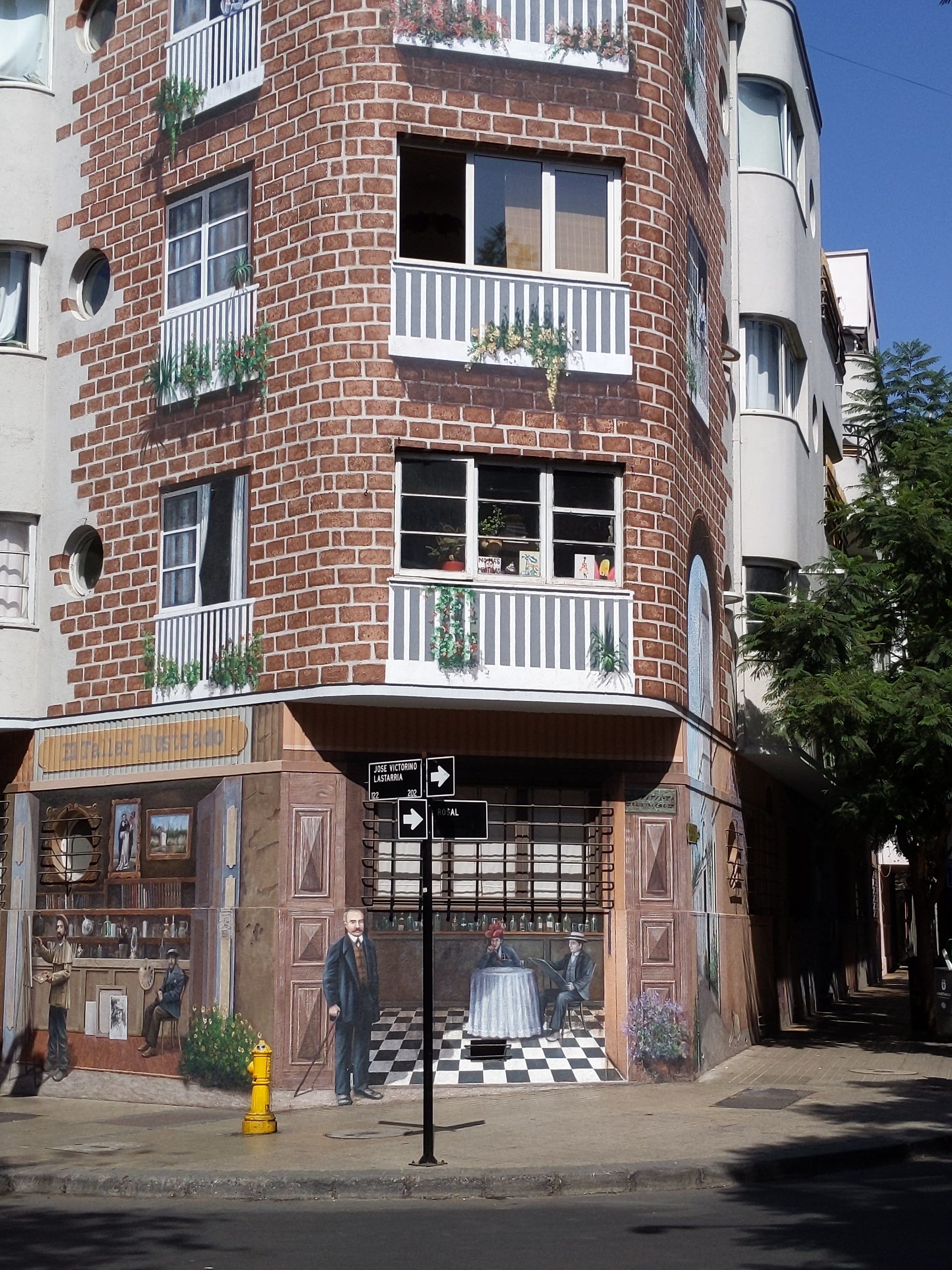
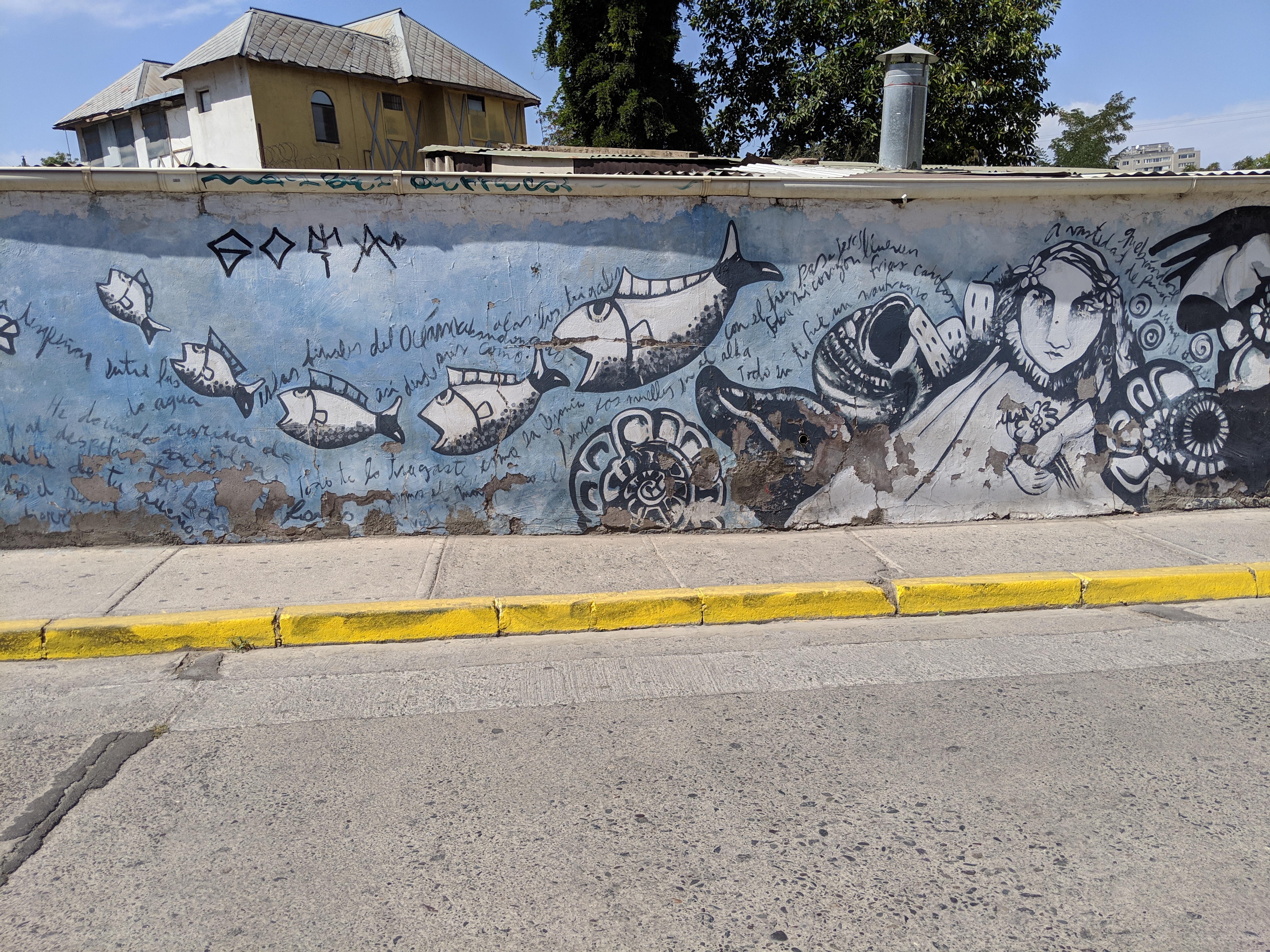
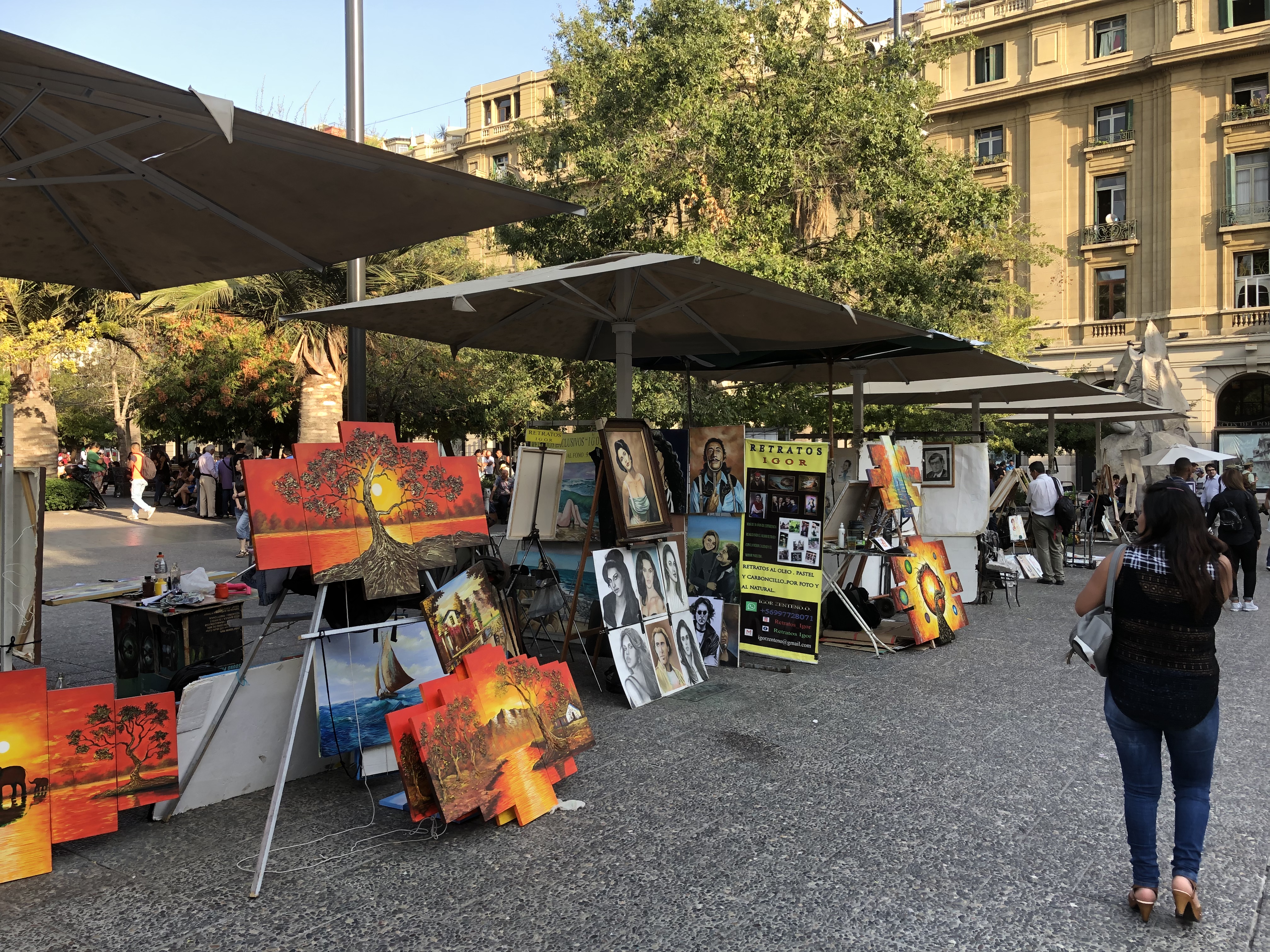
And of course my job was to sample some of the local ales. This is a task that has long since challenged me, but I endure. Add to this some of the fantastic scenery and even a view from the rooftop bar our accommodation.
